UPPING ADVICE: Growing more farm advisors
SPECIAL REPORT: Labour saving strategies
BUDGET BLOWOUT: Constraining creeping costs

UPPING ADVICE: Growing more farm advisors
SPECIAL REPORT: Labour saving strategies
BUDGET BLOWOUT: Constraining creeping costs
Cartwheel Creamery: Turning local milk into artisan cheeses

Don’t forget what scours can do to your calves – it can be devastating on any farm. Scours make it tough for calves to get a healthy start and causes extra stress for everyone. Help protect your calves from three of the most common causes of infectious scours; Rotavirus, Coronavirus, and E. coli.

So cut the crap, save you and your calves the pain and ask your vet about Rotavec® Corona, your proven scours solution.

As an experienced veterinarian, it was demoralising for Mara Elton Fletcher to watch a severe rotavirus scours outbreak unfold on her own dairy farm.
Mara and her husband, Hayden, milk 930 cows in Culverden, North Canterbury, and despite having top-quality colostrum management and hygiene practices in place, their herd was hit hard with a rotavirus outbreak, prompting them to vaccinate the entire herd last year with Rotavec Corona.
“It was a breaking point for myself as a veterinarian, seeing so many sick animals,” Mara explains. “The decision to preventatively vaccinate going forward was a very easy decision for Hayden, who manages the farm, to make. Having experienced the stress, anxiety, and demoralisation of a full-blown rotavirus scours outbreak, vaccination was a logical next step.”
The common and highly infectious disease was not only damaging the health and potential future growth of their calves but was also taking a serious mental toll on the couple and their staff.
“Experiencing a large scours outbreak was extremely stressful and involved very long hours to treat all of the sick calves and prevent the healthy ones from getting it. The farm staff were having to come off their routine jobs and help our calf rearers… there’s nothing worse than seeing all your staff exhausted and at their wits end.”
Hayden adds the tight labour market postCOVID meant it was really important to get rotavirus under control. “There were no backpackers or casual staff available, and we just didn’t have the manpower to deal with anything like that happening again. So we wanted to remove that risk,” he explains.
“We calve 80 percent of our cows in three weeks so it all happens really fast. It’s all on a knife’s edge as it is, so if you have a rotavirus outbreak, everything can just spiral out of control.”
The couple chose to vaccinate with Rotavec Corona because it was a single shot treatment that had been scientifically proven in the field and peer reviewed.
The vaccination works by transferring antibodies into the colostrum. It must be administered 3-12 weeks before calving begins which Hayden admits is a tricky time of year when cows are wintering off-farm and farmers themselves are trying to take a breather. But Mara says the risk of not giving the vaccine has far greater consequences.
Mara says rotavirus has had an obvious impact on calves who contracted it in terms of growth rates, and their ability to maintain a high immune status as a young growing animal. Post-vaccination, the couple believe their scours free calves are heavier on average than the year before going into their first winter.
“If they don’t get sick when they’re young, their energy is going into growth the whole time and not fighting disease,” Mara says. “We definitely had less sick calves, in general, this year.” She warns farmers not to be complacent about rotavirus or accept it as a fact of rural life.
“Top quality colostrum management and hygiene alone isn’t going to prevent scours. It’s not going to prevent rotavirus. It might
reduce the mortality rates, but it’s not going to prevent the disease. You do everything you can to try and minimise the spread, but it’s always going to spread. It’s as infectious as Omicron or more,” she says. “With a scours vaccine such as Rotavec on board, you can reduce the risk of rotavirus, coronavirus and E.coli.”
Having a well-grown, high producing animal that produces high quality food is the ultimate goal and the couple says there’s “not a chance” they would go through calving again without having first vaccinated all cows and heifers with Rotavec Corona.

“Every season’s different, but I don’t think there’s any question whether or not we’re going to be vaccinating the herd again,” Mara says. “And that’s because we know that it works. Rotavec Corona is now an integral part of our system together with good colostrum quality and hygiene management. Combined this gives us the best chances of preventing rotavirus.”
For more information about vaccinating your cows and heifers with Rotavec Corona before your calving season begins, speak to your veterinarian today.
BUSINESS
26 Artisan cheese: Keeping it local

31 Immigration: Solving staff shortages in time for calving
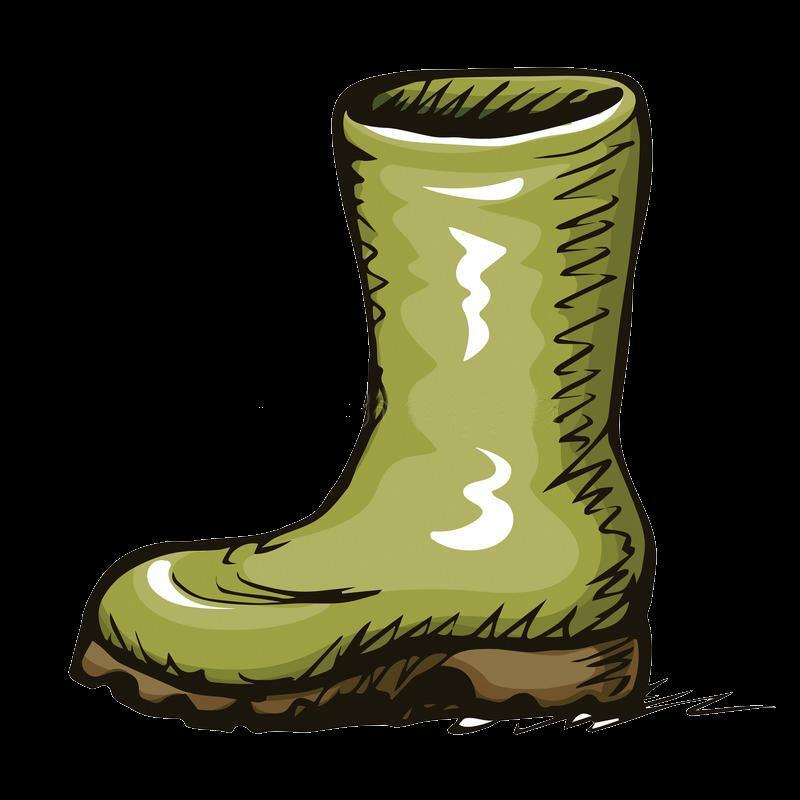
32 Deer milking comes north
34 A grip on creeping costs
SYSTEMS
36 SMASH Southland: Success with lucerne

38 Winter grazing: Waiting for guidance
41 Clover: Canary in the pasture
Page
SPECIAL REPORT:
Labour saving strategies
44 A sleep-in, even for the cows
47 Making better use of people
50 The future is now
52 10 in 7 milking: Better for body and mind
55 Timer calling
56 Time to outsource
58 Conducting tests for soil water
59 View from on high
ENVIRONMENT
60 Delivering from dilapidation
65 Research: Effluent treatment and tile drains
Page 47
YOUNG COUNTRY
76 Building equity for the next move
80 New rules, new opportunities
WELLBEING

82 Safety of young ones onfarm
DAIRY 101
84 Weighing cows: Keeping on the right track
SOLUTIONS
86 Probiotics make the difference
88 New approach for transition
89 Tracking mastitis by the quarter
OUR STORY
90 50 years ago in the NZ Dairy Exporter
Page 82
STOCK
68 Change ahead for animal welfare
70 Calf rearing in a volatile world

74 Vet Voice: Top tips for teat spraying Page

OUR COVER
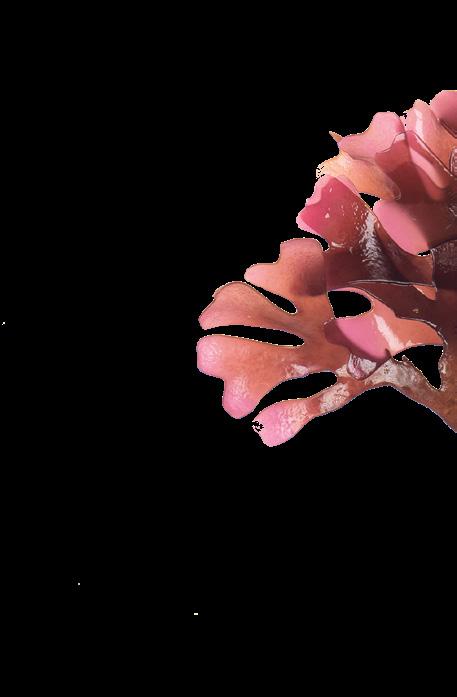
Jill and Adrian Walcroft are the Pohangina locals behind the Cartwheel Creamery brand, making local milk into artisan cheeses for the locals to love. Photo by Brad Hanson.




June 15 – A DairyNZ winter grazing workshop is being held at Dannevirke. This is a new date for the workshop. For more details visit www.dairynz.co.nz/ events/lower-north-island/winter-grazingworkshop-kiritakitararua-june.
June 15 – Northland’s Future Farm Systems’ field day to review its first season. Visit www.dairynz.co.nz/events/ northland/narfnddt-field-day-june.
June 15 – Final online episode of DairyNZ’s Farmers’ Forum Series which looks at the bigger picture issues and challenges affecting dairy farming. To register visit www.dairynz.co.nz/about-us/ event-activity/farmers-forum-series.
June 16 – A Dairy Trust Taranaki field day visits two of the research farms, Gibson and Kavanagh, for the latest results. The day begins at 10am at the Gibson farm and moves on to Kavanagh in the afternoon. More? visit www.dairynz.co.nz/ events/taranaki/dairy-trust-taranaki-fieldday.
June 16 – DairyNZ field day near Whakatane with Dr Paul Edwards on flexible milkings, its implementation and effects. The field day runs between 10.30am and 12.30pm. More? visit www.dairynz.co.nz/events/bay-of-plenty/ bop-focus-on-dairying-field-day-june.
June 16 – The Good to Great Primary Sector People and Team Leadership Programme holds its fifth Southland workshop. It provides tools and resources to build your knowledge, skills and confidence to lead your people. More? visit www.dairyevents.co.nz/media/2078/ final-southland-good-to-great-2022.pdf.
June 19-22 – Holstein Friesian New Zealand’s annual conference in Palmerston North. Visit nzholstein.org. nz/event/holstein-friesian-new-zealandconference-2022-manawatu.
June 22 – Dairy Women’s Network is running Today’s Calf, Tomorrow’s Cow expo in Matamata. It focuses on proper care and nutrition for calves to set them up for a lifetime of high performance. For more information and to register visit www.dwn.co.nz/events/todayscalf-tomorrows-cow-waikato. Other dates/locations: July 1,Okaihau; July 5, Ashburton; July 7, Invercargill.
June 29 – Dairy Women’s Network is running an on-farm practical calf-rearing workshop at Matatoki in Waikato. More? Go to www.dwn.co.nz/events/calf-rearingworkshop-hauraki-plains.
July 6 – A FarmTune workshop in Southland looks at the lean management programme for farmers. More? Contact Lynsey Stratford on 021 165 2004.
July 6-7 – The Primary Industries Summit and Awards is held in Auckland. It brings together representatives from across New Zealand’s primary industries to develop solutions to the multiple challenges they face. Among this year’s themes it will look at cross-industry collaboration, analysis of the evolving geopolitical and economic situation, emissions reductions in action, and safeguarding the future of the primary industries through developing young people. The awards held on July 6 honour the most successful and innovative primary industry producers and supporters. More? Visit www. primaryindustries.co.nz.
July 7 – A bale grazing and regenerative agriculture field day is being held on a farm near Wendonside in Southland between 10am and 3pm. More? Visit www.quorumsense.org.nz/events.

July 7-9 – The FMG Young Farmer of the Year competition holds its grand final in Whangarei where grand finalists from around the country compete through a range of practical and theoretical challenges for the 2022 title. More? Visit www.youngfarmers.co.nz.
August 14 – Applications close for 2023 Nuffield New Zealand Farming Scholarships. Each year up to five scholarships are awarded in the rural leadership programme to fast track the development of emerging leaders in the agri-food sector. To find out more and apply, go toruralleaders.co.nz/nuffield.

programme run by Reporoa dairy farmer and cancer survivor Sarah Martelli, who helps other women find their balance and build strength and wellbeing to be the best they can be.
Strong Woman is an online community for women to work on their fitness with a workout to do at home, find quick and easy healthy recipes, goal planners and to connect with other women on the same journey.
Her philosophy is to help women create healthy, sustainable habits around moving and feeding their bodies and their families.
If women can prioritise their own health and fitness, they can inspire their partners, their children and their community around them, Sarah says (p82).
She is an inspirational woman creating a moment of lift for many women.
In this issue we take a look at the regenerative agri journey some NZ farmers are already on, and that the government has signalled they want others to join in on, in our Special Report.
The regen debate has divided the farming community in a big way - many scientists are affronted that NZ would need regenerative methods from overseas countries with highly degraded soils - would that then infer that our conventional methods were degenerative?
Richard Branson said every success story is a tale of constant adaptation, revision and change. As you get older, you realise nothing stays the sameyou come up against a problem, you think of a way around it, you change, adapt, and move on to the next issue.
As farmers have become busier, herds have grown bigger, staff has been harder to find and more emphasis has been placed on team health, labour-saving devices have been developed to help solve some of farmers’ issues.
Our deep dive into strategies to save labour in this month’s special report covers the gamut from technological solutions - robotics for milking and feeding calves, satellite-aided pasture measurement, apps and computer programmes for helping in the farm office, through to different milking regimes and an easy way of buying yourself an extra half hour in bed in the morning.
We outline the proposed updates to animal welfare standards that are on the way and are currently open for submissions by farmers. Anne Lee has uncovered some that will have significant impacts on farming practices, and while not enforceable by law, will be looked to by dairy companies and their overseas customers as best practice and minimum standards. (page 68).
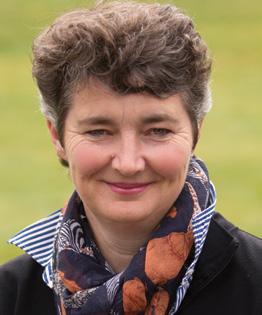
They say the methods won't work, and that research has already shown that, and also our farmers are already following regenerative practices. Others say that the methods are not prescribed and each farmer can take out of it what they want. It has been called a social movement rather than a science and the claimed benefits of improved soil and stock health and building soil carbon through diverse species, use of biological fertilisers and laxer and less frequent grazing practices along with less nitrogen is something that resounds emotionally with many.
(p42). We also cover the Heald family of Norsewood (p52) who have transitioned to organics, OAD philosophies and are enjoying the less intensive more resilient system they have moved to, along improved profitability.
There is more research to be done in the NZ farm system context, says MPI’s chief scientist John figure out what will and won’t work, but he encourages farmers to engage and learn more, and to embrace regenerative as a verb - saying all farmers could be more regenerative, more resilient, lowering carbon and building carbon storage.
If you are interested in getting into farm ownership getting out but retaining an interest, read about Moss’ innovative idea for a speed-dating weekend potential partners (p11). We think it could be a
JULY 2021 ISSUE
In the next issue:
We have taken a snapshot of thinking by scientists in MPI and DairyNZ (p46) and portrayed what farmers using the practices are finding, including ongoing coverage of the comparative trial work by Align Group in Canterbury
New technologies almost always have heaps of potential to save time, labour and even cost, but there is usually a pain threshold to get over, in terms of bedding in the new system, training people and animals to use it and tweaking it to get the best performance out of it.
The family motto that my husband brought to our life together was ‘perseverance furthers’, he always taught our kids to keep trying and success will come. Success doesn’t come to those who give up.
The winners of the Fonterra Responsible Dairying Award for 2022, Craigmore farming, have invested in new technologies with labour-saving potential - but have been careful to match the different options to the needs and capabilities of the team running their farms, thus stacking the odds for success. (page 47).
Last word goes to Frances Coles, our contributor from South Canterbury who encourages you all to ‘lighten the Invisible Load’ that you carry. She says the invisible load is the stress we carry, that no one sees, that drives how we think and feel. While labour-saving strategies go some way towards helping to lighten the load, on the other side we have increasing compliance, regulation and worry about what might come next that make the invisible load heavier.
Frances suggests some great strategies for all farmers to use with the coming of Matariki and the new season to make the farming load less invisible, better understood and more well-supported. (pg16).
July 2022
• Special Report: Farming/business investment – if you are starting out or bowing out.
• Wildlife onfarm
• Ahuwhenua winners
• Special report: KPIs: The numbers driving your business

• Sheep milking conference coverage
• What metrics should you be aiming for to drive your business forward
• Progression pathwaysclimbing the mountain to first farm ownership
Something of a reset, over the winter dry period, to rebalance and refocus on the things that are important. Wishing you luck with that. @YoungDairyED
• Coverage of the South Island Dairy Event: Dynamic conference

Salmonellosis is over three times more prevalent than in 20131
Salmonella is widespread on New Zealand farms and cases are increasing nationwide1. Striking without warning and spreading quickly, Salmonella can pass from your stock to the ones you care about most.


Vaccinate today to reduce the destructive impact of an outbreak*.


SALVEXIN®+B

NEW ZEALAND’S ONLY SALMONELLA VACCINE FOR SHEEP AND CATTLE






New Zealand Dairy Exporter’s online presence is an added dimension to your magazine. Through digital media, we share a selection of stories and photographs from the magazine. Here we share a selection of just some of what you can enjoy. Read more at www.nzfarmlife.co.nz
IRRIGATION IMPROVEMENTS CREATING RESILIENCE
The Woodhouse family’s irrigation improvements are creating resilience. Good data and investment into spray irrigation that allows lower rates to be applied at shorter return intervals will help maintain pasture production levels as nutrient inputs reduce with regulation.

Take a look:
https://youtu.be/bivsGOWbM9Q
ASB RURAL INSIGHTS
- Succession Series Podcast

Pareka farm has gone through a significant change in farm systems this season with the aim of cutting N losses and methane emissions, paving the way and creating learning opportunities for others.
Take a look:
https://www.youtube.com/watch?v=SV9t9tqB3Kc



NZ Dairy Exporter is published by NZ Farm Life Media PO Box 218, Feilding 4740, Toll free 0800 224 782, www.nzfarmlife.co.nz
Editor
Jackie Harrigan P: 06 280 3165, M: 027 359 7781 jackie.harrigan@nzfarmlife.co.nz
Deputy Editor Sheryl Haitana M: 021 239 1633 sheryl.haitana@nzfarmlife.co.nz

Sub-editor:
Andy Maciver, P: 06 280 3166 andy.maciver@nzfarmlife.co.nz
Reporters
Anne Hardie, P: 027 540 3635 verbatim@xtra.co.nz
Anne Lee, P: 021 413 346 anne.lee@nzfarmlife.co.nz
Karen Trebilcock, P: 021 146 4512 ak.trebilcock@xtra.co.nz
Delwyn Dickey, P: 022 572 5270 delwyn.d@xtra.co.nz
Phil Edmonds phil.edmonds@gmail.com
Elaine Fisher, P: 021 061 0847 elainefisher@xtra.co.nz
Alex Lond lond.alexandra@gmail.com
Design and production:
Lead designer: Jo Hannam P: 06 280 3168 jo.hannam@nzfarmlife.co.nz
Emily Rees emily.rees@nzfarmlife.co.nz
Partnerships Managers: Janine Aish Auckland, Waikato, Bay of Plenty P: 027 890 0015 janine.aish@nzfarmlife.co.nz

Welcome to the ASB Rural Insights
- Succession Series podcast, where we’re talking about farm ownership transition from all sides. Thanks to the ASB Rural team for partnering NZ Farm Life Media on this four-part series. Each week Angus Kebbell will be profiling farming families, talking to experts from the advisory sector and investigating new opportunities for farmers thinking about diversifying their farming business. When it comes to ‘what’s next’ for the farm, there’s a lot to think about, so we aim to share success stories, provide useful tips and help you understand more about the many facets of succession planning in the food and fibre sector today.
To listen:
https://nzfarmlife.co.nz/podcasts-2/
CONNECT WITH US ONLINE:

www.nzfarmlife.co.nz
NZ Dairy Exporter @DairyExporterNZ
NZ Dairy Exporter @nzdairyexporter
Sign up to our weekly e-newsletter: www.nzfarmlife.co.nz
Tony Leggett, International P: 027 474 6093 tony.leggett@nzfarmlife.co.nz
Angus Kebbell, South Island, Lower North Island, Livestock P: 022 052 3268 angus.kebbell@nzfarmlife.co.nz
Subscriptions: www.nzfarmlife.co.nz subs@nzfarmlife.co.nz
P: 0800 2AG SUB (224 782)
Printing & Distribution:
Printers: Ovato New Zealand
Single issue purchases: www.nzfarmlife.co.nz/shop
ISSN 2230-2697 (Print)
ISSN 2230-3057 (Online)







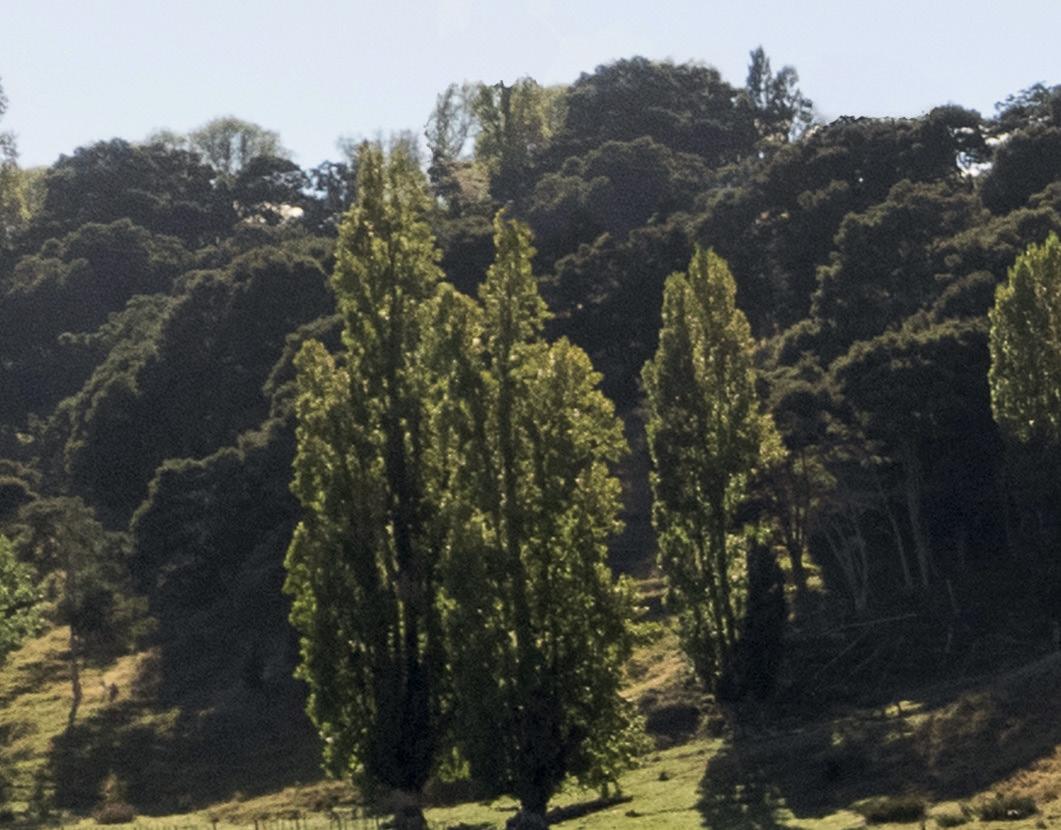



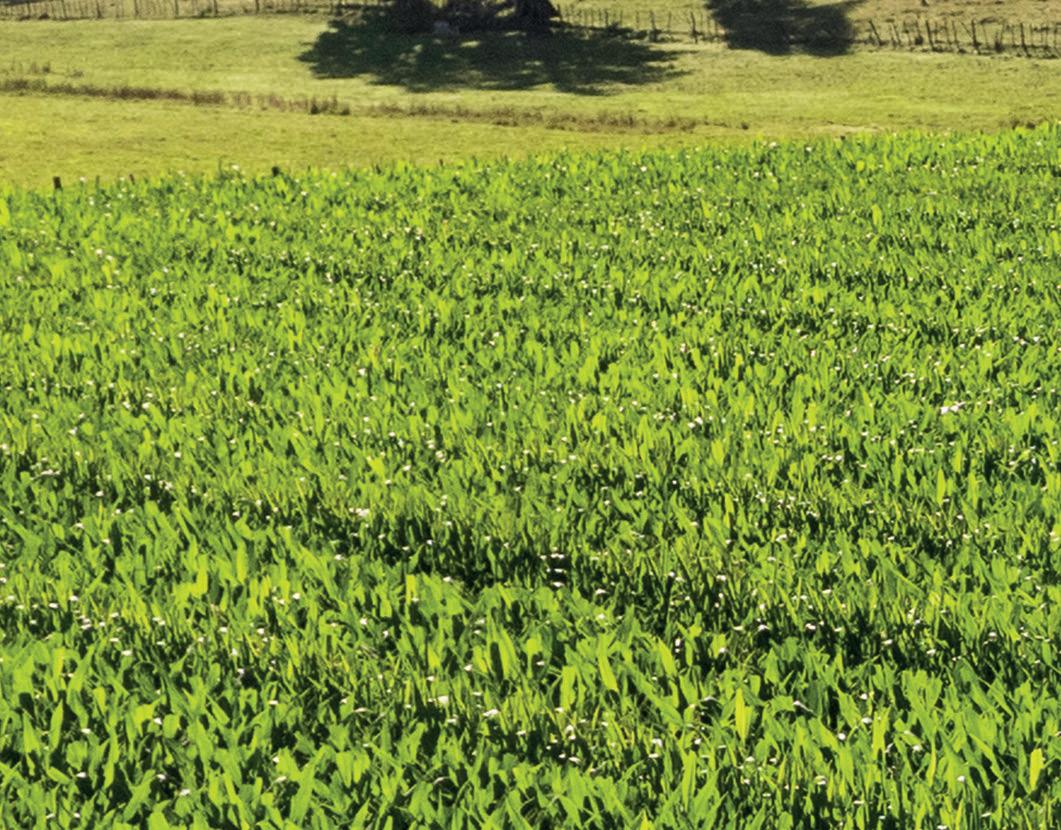
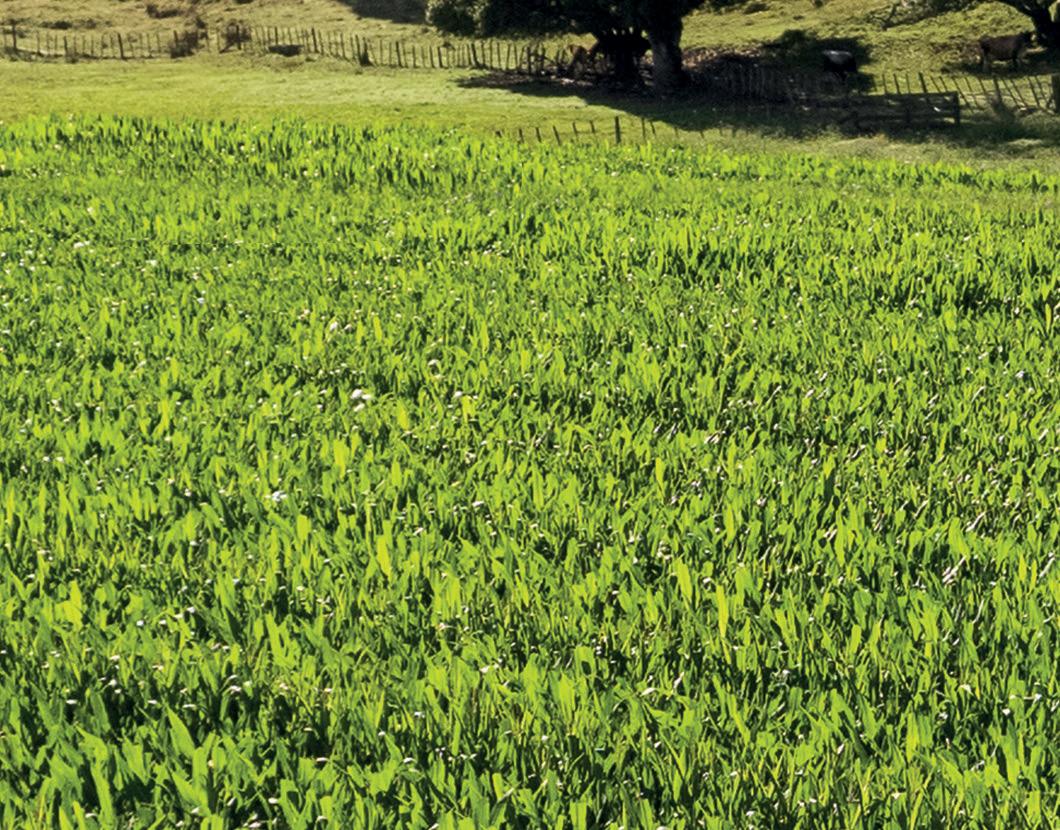

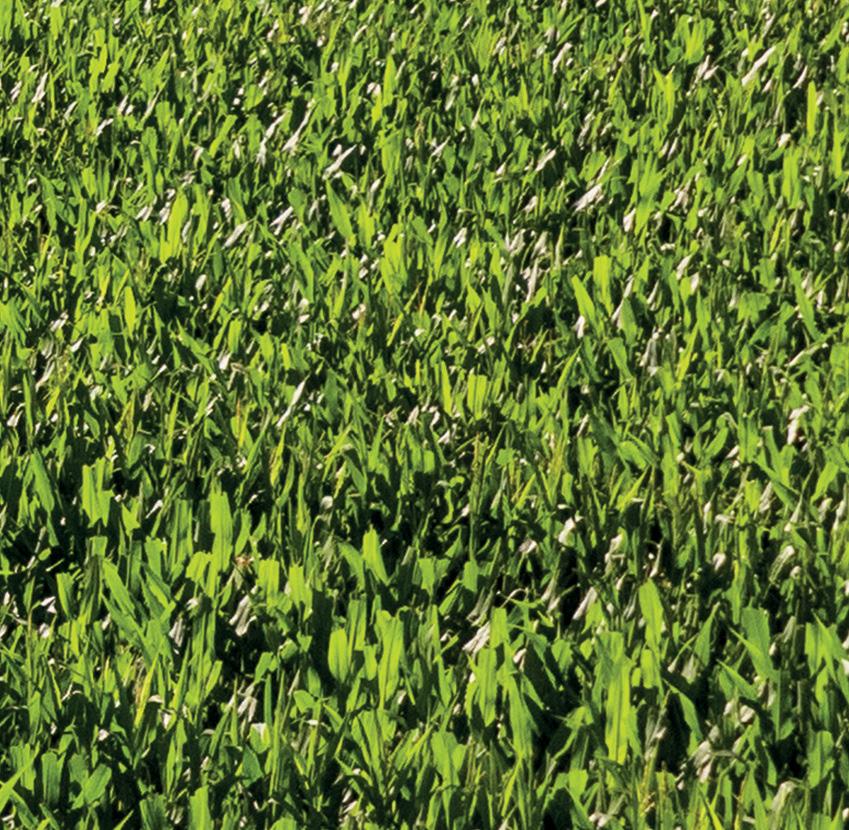
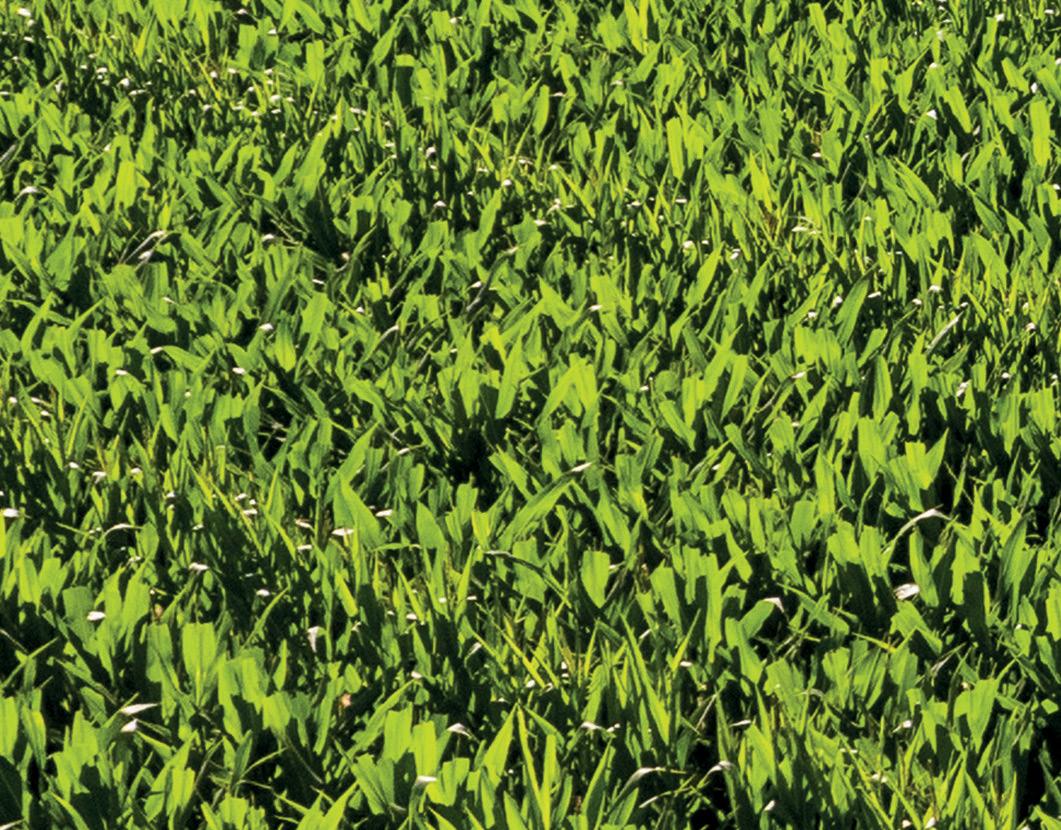
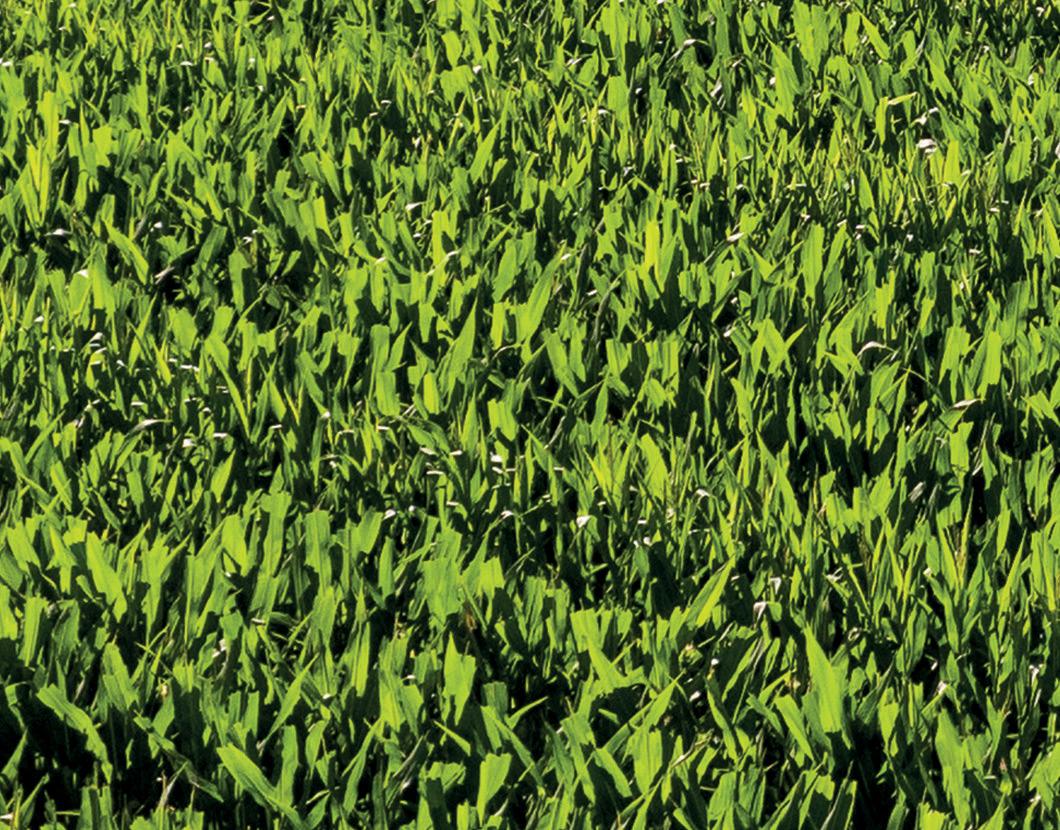


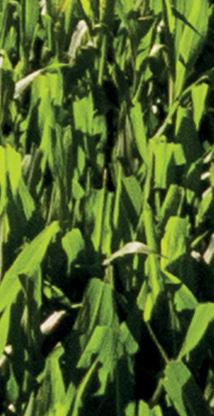





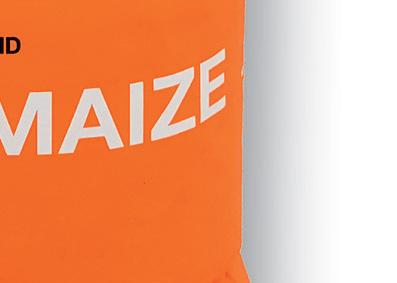

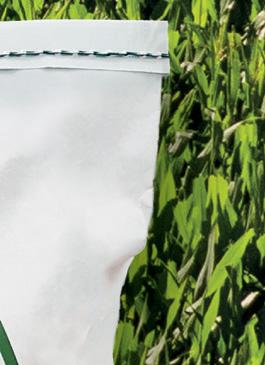

George Moss is looking forward to the climate gods smiling on his Tokoroa operation.


Both farms are dry now, home farm in the first week of May the other farm in mid-April and no regrets in doing that despite the record milk price.
Home farm is down 5% and the other farm down 2% but it is worse than that, as it purchased three pallets of milk powder for calves, which takes the real decline to about 7% and it is worse than that again when account is taken of the six-figure sum of purchased feeds, ouch!
The slow spring meant the expected amount of supplement was not harvested, the dry summer hit at least a month earlier than we would have expected in the south Waikato and what rains that came, while significant, were too far apart. To top it off we took a hit from eczema which, given the amount of crop, silage and palm kernel going in, caught us by surprise.
Tokoroa Pastoral purchased maize silage to get the business through the winter and fortunately the dry autumn has meant good utilisation of that resource. Outcome Tokoroa Pastoral will have a less profitable year than last and largely saved by milk price. Watch for the Dairybase numbers later.
The good news is we still smashed a lot of debt and will look to do more to buffer against the rising rates of extortion. (Interest rate - for the uninitiated).
As mentioned before both farms are out of the money on the fixed milk price position (45% at $7.50) but we are still holding to the strategy as certainty is important to us. Pleasing pasture covers are over 2100kg drymatter (DM)/ ha and cow condition is reasonable. We were fortunate in being able to get all culls gone by mid-March, but we still have prime animals on the dry block waiting and waiting for space at the works.
The decision has been made to put a lower order sharemilker on Tokoroa Pastoral for the coming season. This was driven by my ability or inability to adequately and with certainty provide relief cover for the almost 90 days of time off entitlement. This was especially challenging in spring physically for me as well as juggling my other commitments.
I may have bitten off more than I can chew – I feel happy with my understanding of risks and mitigations but my ability to get it into a comprehensive report with the all appropriate referencing and acknowledgements is challenging – due date May 23 and only quarter done. Should have waited for next year.

Silly me, I decided I should exercise my brain a bit more by doing the Intermediate Farm Environmental Planning Course through Massey University. It is a good course but I really found my limitations in terms of time and computer competency and I suspect I may have bitten off more than I can chew – I feel happy with my understanding of risks and mitigations but my ability to get it into a comprehensive report with the all appropriate referencing and acknowledgements is challenging – due date May 23 and only a quarter done. Should have waited for next year.
We attended an excellent SMASH day on Henry and Nicki Hendriks’ farm. They achieve outstanding reproductive performance with their herd of 3% MT’s and eight days to calving midpoint, all from eight weeks’ mating – brilliant! This is a real opportunity for us in our quest to reduce GHGs and improve overall performance.
Those there felt the performance was from the excellent management of transition cows. Clearly this has a significant role, along with the rising plane of nutrition, but I do wonder whether keeping the first-born heifer calves over several years has bred a “super fertile” herd? This year we will give serious consideration whether it is the firstborn calves we keep or the highest indexed ones?
A close look at our transition cow management is also in order. Neil Chesterton on lameness was excellent as always and the take-home message for me was that we do not give our cows enough space on the yard when milking, necessitating overuse of the backing gate.
Let’s hope the climate gods smile till next time, and remember, it can always be worse.
Over time the West Coast has had some fantastic consulting officers (COs), personally I could rattle off six or more over the period I have been farming. Most stuck around for quite a few years and others came here to do their three years, or to cut their teeth after getting out of university.
Either way you want to look at it there was always someone to contact or go along and support. Not only to gain or learn something new but to watch them improve with time.
But they aren’t here anymore, the Coast hasn’t had a CO for about 12 months now. It’s just a sign of the times, I guess you could say, and then there’s the old notion of ‘We can’t get anyone because their partner can’t find work’.
Well I take a slightly different view: user-pays. This is the world we are in now and have been for a while. Last time I looked we are paying handsomely towards DairyNZ’s existence, so where is our service?
else’s lap from another region. Ripple effect, this will soon discourage those COs from different areas to go looking for something else.
So where is the problem? Is DairyNZ still focused on the task at hand? Is DairyNZ getting prepared for the next stage of its existence? E.g: He Waka Eke Noa. Or dare I say it, has Tim and the team run out of drive or lack of vision to look behind as well as ahead. It’s fairly hypocritical to stand in front of the camera and encourage families to go farming when the very entity he’s in charge of can’t serve one of its regions.

Tim’s (Mackle) on TV encouraging people to go dairying. Jim’s (van der Poel) on emails and farming magazines encouraging people to vote or support some activity at any given time, but we aren’t seeing it on the ground supporting our region.
The naysayers will boo hoo this and I understand why DairyNZ was set up, for everybody, to help with industry good. They are still doing that in the background, which they know they have to do by legislation.
So, this month we had a discussion group on the Coast. In their wisdom they are lumping the West Coast into someone
The levies/monies DairyNZ get from this region are just as good as what you get from any other region. The Coast is getting back on its feet and it’s great to see. A competitive milk price, farms are selling, young families moving into the Coast again, Young Farmers Clubs getting started up again.

You can’t service the West Coast area from another district. Some say discussion groups have had their day, and to some extent that is true. But that doesn’t stop a bunch of farmers talking about topics relevant to their area, and helping an upcoming CO develop, to further their career for when they move on.
And we have all heard the saying ‘You are never too old to learn something new’.
It’s just a sign of the times, I guess you could say, and then there’s the old notion of ‘We can’t get anyone because their partner can’t find work’.West Coast dairy farmers are feeling left out by their industry body. By John Milne. Last gravy train for inshed feeding for the 21/22 season.
Application of new technology has allowed Nic and Kirsty Verhoek to ride out the challenges of the season.

Entering our third year of writing for the Dairy Exporter, it has been good to look back on our past articles. June 2020 was about ‘logistics in lockdown’ where the excitement of a new season, new farm and new home was turned on its head with the emergence of Covid-19. June 2021 was about ‘breaking barriers’ and finding opportunities in the face of challenges within the industry. And then there is June 2022: ‘limping into next season’.
The 2021-22 season has been a challenge for us and continues to be so with the lack of any significant rainfall since late December in the Waikato.
Pasture and winter crop growth rates are flailing, pasture covers are well behind target for planned start of calving, production for the season is down by 10%, and expenses are up by 10%.

We are now four months into having Halter onfarm and it is really coming into its own, especially with the wintering of dry cows. No more break fences! No longer are fences and reels being balanced on motorbikes.
We were fortunate that we got in some early winter crops which, despite the lack of rain and moisture stress, have at least provided us with some feed for dry cows. Most importantly, cows are drying off at target body condition. This is satisfying knowing we have almost reached our goal of relying on 100% homegrown feed and by-products while still being a system 5.
If you were to ignore our seasonal challenges, one aspect on the up has been onfarm technology.
We are now four months into having Halter onfarm and it is really coming into its own, especially with the wintering of dry cows. No more break fences! No longer are fences and reels being balanced on motorbikes.
It has meant we are able to back fence animals efficiently and therefore get a second go at growing additional feed by redrilling behind the cows. We still have people slowing down and doing a double-take with cows keeping behind a virtual fence that isn’t visible to the eye.
No longer do cows bellow or come to the gate when it comes to shifting as they no longer associate human presence with a new allocation of feed. Staff hours have already decreased markedly with the use of the technology onfarm –which ticks one of our goals of being able to give time back to our staff. We are excited to be going into calving and seeing what Halter can do for us and our farm.
We are entering our third season of 50/50 sharemilking and while we have had our challenges, we have been fortunate to have a great relationship with our farm owner and his full support. We are also entering the second year of our lease block which we use for grazing heifer replacements and beefies.
Again, we are fortunate to have a great relationship with

our lease block owner. The ability to have full control over the feeding and therefore growing of our heifer replacements is crucial to having them come into the herd at a target exceeding 500kg liveweight. Even while in a drought, we can feed them to their requirements (even if it does make our pockets lighter in the process) which will pay dividends down the track.
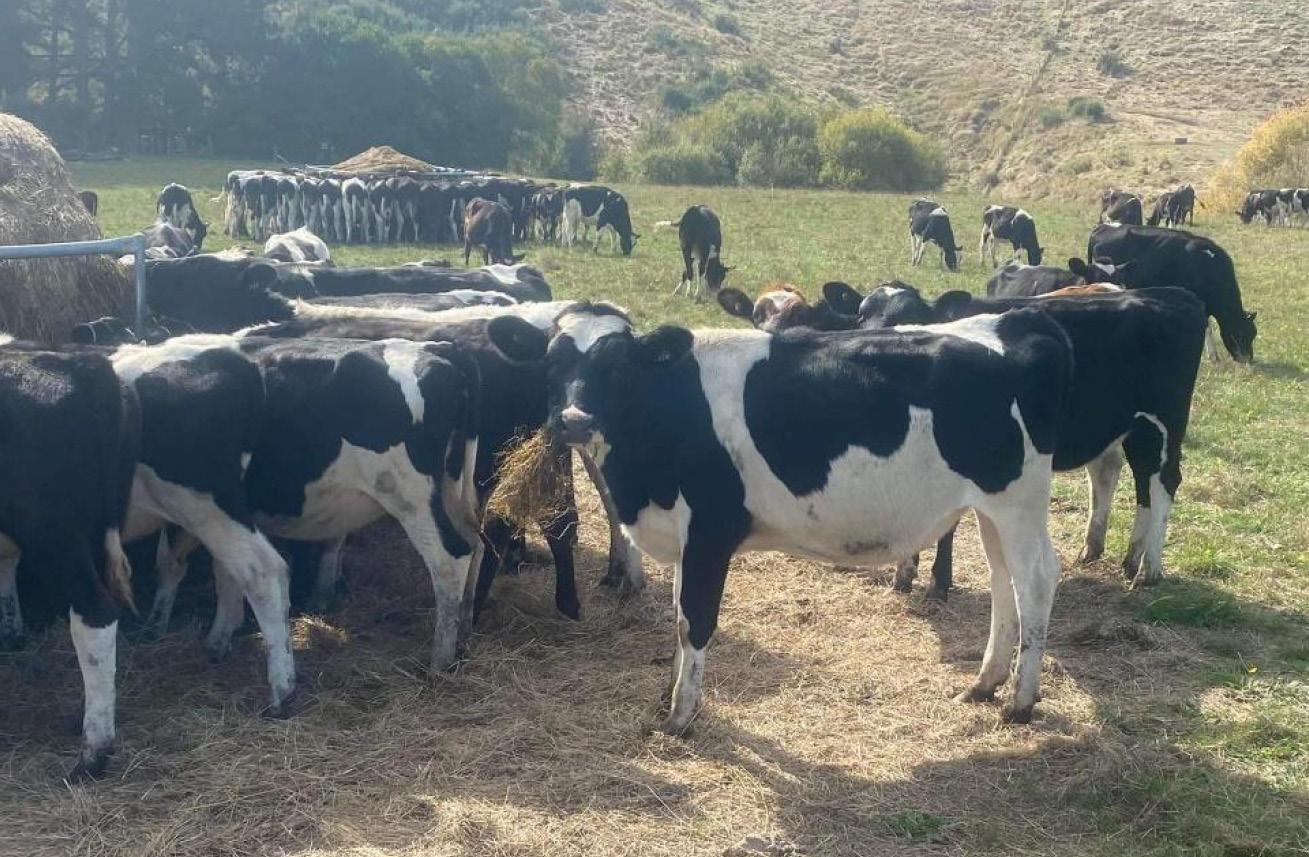

As tradition has dictated, we also got off-farm for the
opening of the duck hunting season. This is always met with much enthusiasm by the whole family. There is nothing quite like kids racing around blowing duck callers all day. This time away always freshens us up and gets us ready for the new dairy season ahead. The only downside was coming home to find it drier than when we left. Fingers crossed the break in the weather is around the corner.

Have you ever heard of a concept called ‘The Invisible Load’?
A very wise woman named Dr Libby Weaver has even written a whole book on it, saying “The invisible load is the stress we carry, that no one sees, that drives how we think and feel. From the physical load on our body, to the emotional load on our mind, this invisible load is what really sits at the heart of our stress.” How heavy are farmers’ invisible loads right now? (Apologies guys, but I’ll be slanting this from the female perspective – not to in any way diminish the weight of the loads you are all carrying, but might I suggest you check in with your wives/mothers/sisters/ friends).
Farming is by nature tough, with many variables beyond our control – weather, prices paid for our goods and costs of inputs to name just three. But it feels like it is getting mentally tougher by the year too, in ways invisible to many outside the sector.
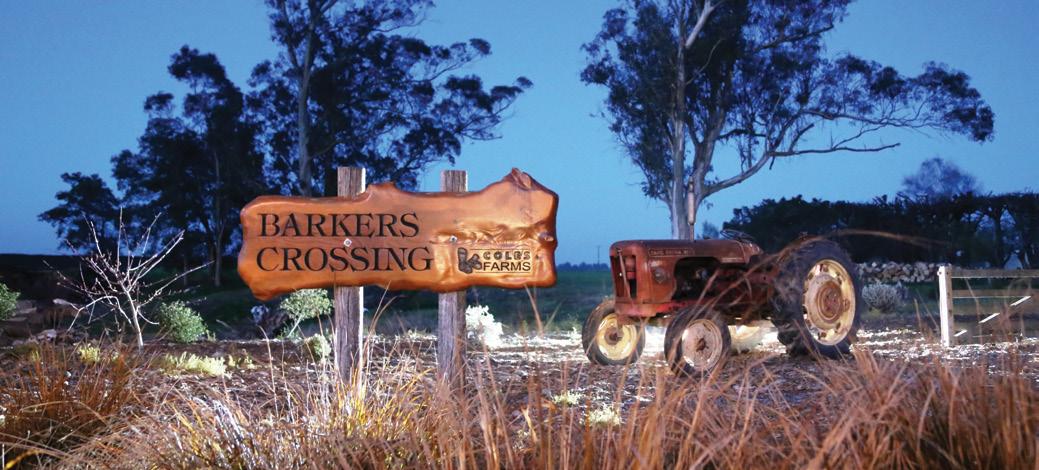

Traditionally the females in a farming partnership often take on responsibilities in the areas of finances, HR and compliance. All alongside any role they may play in the business such as being hands-on over the busy period of calving, relief milking at weekends, or being the general farmhand/delivery-person/errand-runner.
Then they may be caring for children, older parents, migrant staff adjusting to life in a new country… Often there are also voluntary roles in the community to be filled too –PTA, sports coach, fundraising co-ordinator… the list goes on.
And all of this comes with so many thoughts! From the moment our eyes open in the morning until long after they should have been shut again at night for the mythical eight hours of beauty sleep.
‘Did I get all of the kids’ hockey uniforms through the wash? I’d better check what time their game is so I can put a message up in the team group chat for the other parents. Then I’ll need to swing past the supermarket to grab a few
things for that baking I need to do for the fundraising cake stall. Oh and the car will need to be fuelled up since the light came on during the drive home from the BOT meeting last night. What’s the date today? Dammit! The FEP audit is on Monday and I still haven’t had that certificate emailed back from the water meter installer yet, better follow up with them…’ and on it goes…
When I first married Aaron and was introduced to dairy farming life, autumn could be relatively relaxed if the weather was kind, and winter was downright quiet. Now the dairy season seems unrelentingly busy. The compliance workload is never-ending. The dry period is filled with workshops, audits and checklists to be completed. There are expectations/ standards/obligations to be met for our land, animals, people, dairy companies, regional authorities… and it all has to be documented in ever-increasing detail.
Farmers are seen as the glue that holds the community and economy together – they keep on keeping on - even through a global pandemic, weather extremes of near-biblical proportions, and financial pressures that haven’t been seen for a generation or more.
It’s exhausting, and I wonder, who has the farmers’ interests at heart? Do you feel like you are being understood and more importantly, well-represented?
We’re coming to the start of a new season, and with Matariki holiday near, a spiritual new year of sorts. Let’s all set some intentions to make ourselves better heard this year, so we don’t get to the end of this coming season even more invisibly loaded than ever before.
Ask for help when you need it. Be honest about how challenging farming is. Push back against any pointless compliance and bureaucracy. Make sure the rural sector has a voice at the table – be it your local business association, chamber of commerce, community board, council, or seat in central government. If you can’t be that voice, then at least vote well for someone who can be.
Let’s work together to make the farming load less invisible, better understood and definitely more well-supported. It’s time for change!

has a hope for Matanki, to ease the load.
Family folklore has Murray’s grandfather proclaiming that Haupiri would be the perfect place to farm if only a roof could be put over it.
No doubt this assertion was made during a downpour and with 3.3 metres of annual rainfall, there was plenty of opportunity for this statement to be made. Two generations later, we have this year somewhat achieved that vision of creating a perfect farming spot – quite literally, the roof is on.
Last year we embarked on a project. Our feed pad was not fit for purpose. It was one of those landmarks onfarm that we weren’t keen on promoting. It complied but we knew, not well.
Our problem again, was water; still too much of it, resulting in a compromised feed platform, exacerbated by 800 quartets of feet. We needed to keep the water off for the cows, the integrity of the farm and for us – it is hard work feeding out in mud. So, what started as a rather innocuous project, morphed with deliberation into a large-scale plan to build two composting shelters, dubbed affectionately in farming commentary as “Mootels”.
Why? Ultimately when we refined the issue, we wanted something that was going to respond broadly in the longterm to both weather and farming demands, regardless of season.
it address that perpetual issue of winter grazing. We needed a bigger roof over a more multi-purposeful space.
There were a number of cow housing options that could have achieved this; other farmers were generous in sharing honestly their experiences and opinions. Simply put, “Mootels” ticked our requirement boxes.
The cows would be able to feed, shelter, rest, walk around, calve and mate all under the one roof at any time of the year, if being out on the pasture was detrimental to them or to the land.
Most importantly our emphasis could remain on feeding grass. Ironically, as the roof went on, the rain stopped and the heat turned up. We were presented with hot and dry conditions not usual for our district. Summer growth rates plummeted and pasture quality disappeared, limiting milk production and challenging cow condition. Summer and early autumn became a frenzied juggle of managing feed demand and securing feed supply.
While only one of the two barns was completed, the responsiveness of the shed was instantly demonstrated. Every day from the end of October, the cows went into the barn for supplementary feed and to shelter from the intense heat. They wanted to go in there.
It was amazing to watch from a distance, the clouds of dust stirred up from the dry laneways as the cows determinedly, fast-paced their entry. There was no feed wasted. All that was left on the concrete feed lanes were a few stones and some unpalatable dock stems. Cows rested.
There is still a bit to learn about the composting process and maintaining the activity of this. And still a bit of fine tuning required to align the shelters with our farming system and practices. We’re learning and there is a whole community of cow barn farmers and professionals who can mentor this.
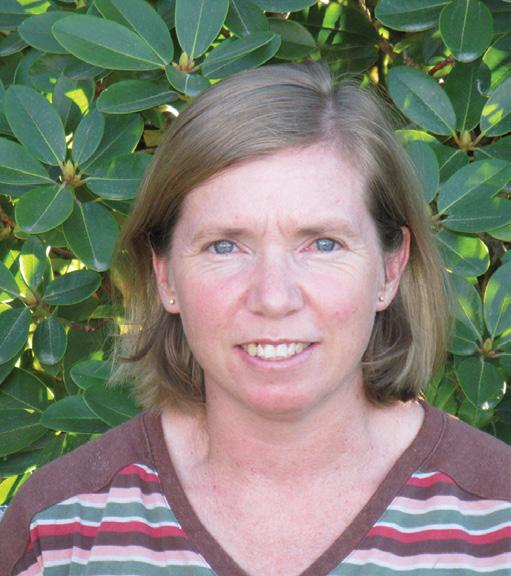

We wanted the solution to reflect our values of caring for our cows, our land and our people. We farm in a high rainfall area in the direct path of an easterly wind notorious for its damage. Farming in the basin of a valley can present extremes of both cold and heat.
We are bounded by a large river and have several creeks running through the property. The realities presented by this topography meant simple additions to the feed pad weren’t going to deliver us a future-proof solution and in no way did
But, when we see cows content, well fed, in good condition, with clean udders and producing milk; a pasture rested and recovering; and a happy team of people, despite the disorder delivered by the weather outside, there is a sense of accomplishment; a feeling that we’ve made a contribution to securing the future of farming for NZ. (Thanks Richard Pierce, Southland farmer and motivator, for those words).
• First published Country-Wide June 2022.
“It was amazing to watch from a distance, the clouds of dust stirred up from the dry laneways as the cows determinedly, fast-paced their entry. There was no feed wasted.”
When you farm on the West Coast, water can be a problem. So the family has built a Mootel, Gaye Coates writes.



The Government has recognised the need to boost the agricultural advice sector, as well the need to broaden the potential interest in becoming a farm adviser, Phil Edmonds writes.
Last month the Government announced it would be investing more than $25 million to expand and strengthen the primary industry advisory sector. This represented the latest spend on lifting the appeal of primary sector jobs.
To date, the focus has been on boosting numbers at farm-level (Taratahi and Telford taster courses, and the Opportunity Grows Here campaigns including GoDairy). This latest dump of cash looks to be less speculative, more mission-focused and with that,
on surer footing to deliver on its projected aim. It might also help illuminate a professionalised and internationally envied sector of farm environmental experts.




To those in the business of advising farmers, this intervention by the Government will be welcome, but not unexpected. Since the middle of 2021 when Ministry for Primary Industries published its approach to ‘Good Farm Planning’ in the form of a 28-page guidance document ‘Towards Integrated Farm Planning’, it has been abundantly clear the

One option that might help buffer the effects of the dry autumn is undersowing Hattrick oats, with or without Tabu+ Italian ryegrass.

If you’ve spent more on supplements than you budgeted for recently, you’re not alone. It’s been a really challenging season feed-wise.
But every challenge comes with opportunity. In this case, it’s a chance to strengthen your system for the season ahead, and ideally bake some more security into your home-grown feed supply for 2022/23.
Where’s the risk?
One way to tackle this is to look closely at when, how and why onfarm feed growth failed to meet cow demand during the season just finished. Was the system compromised at one single point, or were there multiple, compounding causes of feed shortages?
Is your ‘normal’ plan for spring sowing still fit for purpose in today’s unreliable climate? If there’s one thing you could have done differently to grow feed last season, what would it have been?
With spring sowing coming up, now’s the time to look at all the options for reducing imported supplements, and rebuilding or enhancing your
productive base. Happily, there may be more options than you think! As well as the summer standards of 501 Chicory and Dynamo turnips, for example, kale can grow good summer feed. Or you might find oversowing Captain plantain into run-out pastures is a better fit for you.
Plus there’s grass
Forage crops and herbs are only part of the potential package. Different ryegrasses may well help balance future gaps between farm feed supply and cow demand, too. Depending on your requirements, perennial, Italian and hybrid ryegrasses offer a wide range of seasonal growth, persistence and flexibility.

We’re here to help
It’s not always easy to work out what’s needed to restore farm feed supply after a hard season. For more ideas, book a free Pasture Health Check today at www.barenbrug.co.nz.
Our window for sowing is closing as temperatures drop. But it’s not too late to quickly stitch in next season’s crop paddocks to provide flexible feed supply from late winter onwards. Results will depend on the weather, and this approach may not suit all farms. The one thing we do know for certain, however, is that if the seed is not in the ground there’s no way it can grow!
If you don’t find yourself facing a feed pinch in late winter and early spring, extra cool-season growth from Hattrick and Tabu+ will help restore depleted supplements. If you do run short, that growth could be invaluable for calving. Both Hattrick and Tabu+ have the potential to deliver a bulk of quality, cool season feed, just when you might really need it. The beauty of oats in a situation like this is that they will establish and grow at lower temperatures than ryegrass. Likewise, Tabu+ will out-grow perennial ryegrass in cool conditions.
capacity of existing farm advisory firms was not going to be able to carry the load that would be required to meet farmers’ need to have a functioning farm plan established by 2025.
A year later, the Government has come to that very conclusion, as well as recognising there is also a need to broaden the potential interest in becoming a farm adviser. In April the Careers Pathway Scheme was born to achieve the goal of ensuring farmers and growers can adapt and innovate in order for the value of New Zealand primary sector exports to grow and be sustained.
The scheme has the primary aim of increasing the number and diversity of skilled farm advisers by up to 100 (the number determined by research undertaken
It is well understood that farming has an ageing workforce and is struggling to attract a new generation of workers. But it’s less often recognised that the advisory sector is suffering from the same phenomenon. It needs new blood and new faces as well.
for MPI by Landcare Research and Scarlatti) in the independent farm advisory sector.
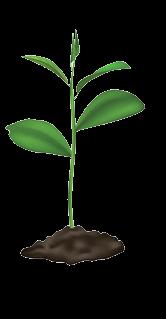

As is conditional with government funding, there will be an emphasis on attracting more advisers from people outside the current network. Specifically, the target is more women, new graduates, Māori and career-changers. This isn’t just about promoting diversity for diversity’s sake.
It is well understood that farming has an ageing workforce and is struggling to attract a new generation of workers. But it’s less often recognised that the advisory sector is suffering from the same phenomenon. It needs new blood and new faces as well.

In terms of the nuts and bolts, the Government will help fund salary and training costs for new and early career advisers with less than three years advisory experience - $22,500 per year (for up to three years) will be available. It will also provide one-off contributions towards integrated farm planning-related training costs, which can be made to experienced advisers with more than three years’ advisory experience. This latter category is for advisers who want to upskill to support farmers with integrated farm planning.
Independent advisory firms are encouraged to apply for funding, particularly if they want to grow their team’s diversity and can support professional development with a steady workflow.
For those still suspicious of the need for mandated farm plans, the Government’s stock answer remains focused on it being a necessary response to what the customer wants, as well as an attempt to reduce (yes, reduce) the amount of time spent by farmers on compliance. Announcing the Career Pathway Scheme, Minister for Agriculture Damien O’Connor said integrated farm planning is being adopted to “make meeting consumer, market, environmental and business needs easier and less timeconsuming for farmers and growers”.
It may be convenient for the Government to point to consumers rather than its own needs as the reason for all this work is necessary. But there’s no point dwelling on ulterior motives. Recent announcements on the way forward for measuring greenhouse gas emissions onfarm (as proposed by the farming sector itself) is a reminder that the farm plan train is well in motion.
Wairarapa-based BakerAg dairy consultant Chris Lewis says farmers are engaged and broadly understand what lies ahead. In terms of existing commitment to planning, he says “There are differences throughout the community. Dairy farmers for example have had compliance requirements through their dairy companies for some years now, and so they’ve already started the journey.

“There are others who are only just coming on board. But the consensus is farm plans are not going away and best that we start at least learning about it and understanding the implications for our farms.”
With all that in mind, New Zealand Institute of Primary Industries Management (NZIPIM) chief executive Jo Finer says the 100 additional advisers the Government is effectively funding into the sector is probably shy of what the real number required is.
O’Connor made a point of noting the Government had worked with organisations including NZIPIM to determine the most effective way to develop capacity in the sector, and there is definitely support for the
 Damien O’Connor, Minister of Agriculture.
New Zealand Institute of Primary Industries Management (NZIPIM) chief executive Jo Finer
Damien O’Connor, Minister of Agriculture.
New Zealand Institute of Primary Industries Management (NZIPIM) chief executive Jo Finer



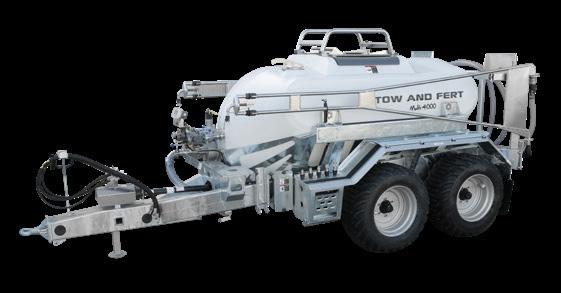




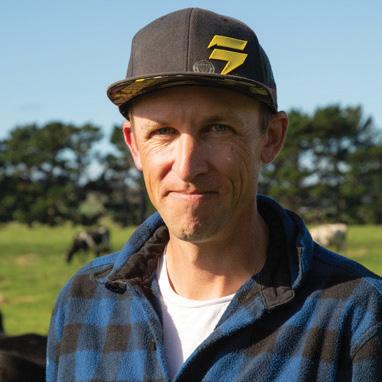
funding approach. However, Finer says “The extra 100 might deal with the initial work on regulation around freshwater farm plans, but by the time you start adding in GHG, and the requirements that will come out of the He Eke Waka Noa plan and then potentially indigenous biodiversity reporting then that number is looking conservative.”
With 2025 around the corner, the need for more people who have environmental skillsets and knowledge of integrated farm planning will be invaluable. This is the clear basis for getting the scheme underway now. Lewis says consultancies in some regions - Canterbury, Southland and Waikato – have seen a significant shift already in their workloads and needed to take on people to deal with environmental needs.
“Other regions have been a bit slower in bringing on the demand for compliance reporting, including Greater Wellington and Horizons but as that increases the need for people will grow.”


On one level you could say bolstering the advisory sector with new talent is breeding bureaucracy – if you happen to struggle with the justified need.

But with a more positive lens, it could be viewed as a fresh means to open new career opportunities for those with existing farm experience. In fact, it is likely to add more appeal to starting a career in the primary sector, with some visible evidence that a transition from gumboots to loafers is a realistic propositionbased on the work experience gained wearing gumboots.

“It will be highly advantageous to have people coming into this work with onfarm experience,” Finer says. “In a lot of cases, it will require tertiary qualifications, but we want to push the onfarm knowledge necessary for the job and highlight the professionalism of those who are (and will become) advisers on integrated farm planning.”
Not only that, but these types of jobs also show that career progression from farm work can lead to overseas opportunities – something other sectors make a strong play for when promoting the benefits of entering their industries.
While the link wasn’t specifically made between the $339 million the Government said it would be pumping into ag emissions mitigation research in May and the global opportunities NZ would have to capitalise on its advisory expertise, the political reaction was reasonably unified on the benefits of us becoming the world leader on solving agricultural emissions. Jump forward to NZ churning out the world’s most sought-after farm
advisers.
As in any situation where the Government chips in with cash, it’s right to ask whether the investment is worthy and will lead to net positive outcomes. For example, given the spotlight on Government spending and its beneficiaries, questions might be asked as to whether the independent advisory firms (those already identified as winners) should be investing themselves to take advantage of the work that lies ahead.

Lewis suggests however there are plenty of checks to make sure the funding achieves both its desired outcome, and the recipients of funding play their part.
“Firms are expected to take responsibility for the training, and they have to demonstrate that there’s an existing in-house programme with milestones that demonstrate the progress being made by the career pathway nominee.
“On the whole, the initiative is well measured, and it will make a difference to a range of businesses. It could make all the difference in their decisions to employ an extra person.”
Wairarapa-based BakerAg dairy consultant Chris LewisIt is likely to add more appeal to starting a career in the primary sector, with some visible evidence that a transition from gumboots to loafers is a realistic propositionbased on the work experience gained wearing gumboots.
The only way to get food during the early stages of the lockdown was by buildings and apartment complexes getting together and organising group buying, which is a large quantity of food.
Locked down inside a 20th floor apartment building in downtown Shanghai is not much fun, especially with a couple of young kids. On top of this it was a huge challenge to purchase food at the start of the latest lockdown.
Being worried about the food supply is one thing I didn’t think would happen in a modern city like Shanghai. We have been lucky as we did not run out of food but the food supply has been a bigger issue for many Shanghai residents.
This is Shanghai’s first full lockdown since the initial Covid-19 lockdown in early 2020. A full lockdown in China means just that. No leaving your apartment building at all. This time all shops (including food suppliers and all deliveries) were closed.

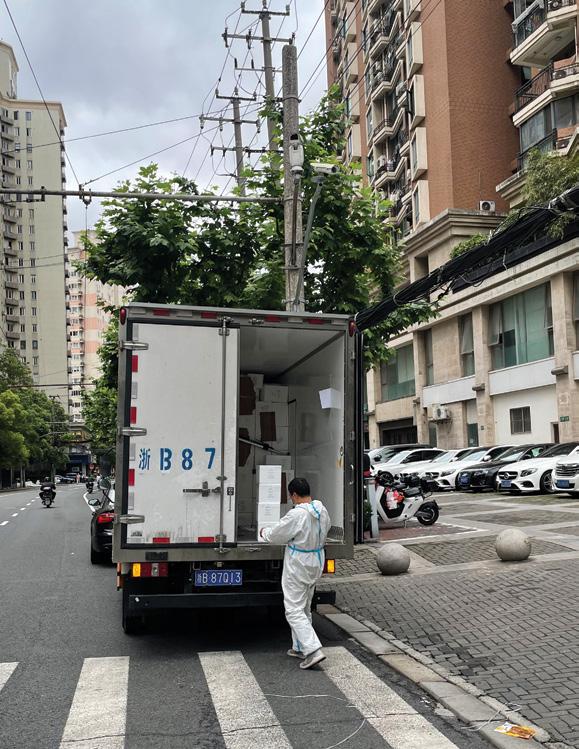
It started as an initial “four-day” city-wide lockdown and more than two months later it is still going without an end in sight.
In mid-March and for the first time ever in 15 years, I started to see logistics issues with some items in supermarkets.
There was some panic buying late March and full lockdown started April 1 for many. Our building lockdown occurred
a few days earlier than that. The panic buying focus was not on toilet paper, but dairy products, meat, fruit and vegetables.
Luckily I did panic buy some British butter as usual supermarkets had run out of Fonterra butter and cheese, well before April 1.
With all the standard places to buy food - supermarkets, wet markets, online shops all closed, buying food became a major issue and challenge for everyone.
The larger distributors, who usually supplied the retailers, were able to deliver in large trucks. There had to be a large volume or high value of orders for them to deliver. This is a very inefficient way to do things but many people, locked down, had the time to organise this. Also the quantity of food items were a lot larger than they normally would buy, so storage became an issue for some products.
Our refrigerator and freezer space is very limited, as in most Chinese kitchens. Storage space in general is limited within apartment buildings. We always make tradeoffs with products in “normal” times. We always use milk powder - Fonterra’s 1kg whole milk powder is our go-to option, instead of fresh milk. This means we freeup refrigerator space.
Our chilled storage space is now used for fresh vegetables and fruits. Our milk powder supply has now been used up, and we have moved to UHT dairy products.
UHT milk and yogurt are enormous markets in China and the range of products available always seems to be growing. Without needing to be refrigerated it’s the ideal product when supply chains are having issues. We would always buy about four times as much as anyone else in our building when there was a UHT milk or yogurt group order. Many people in the building found that a bit strange, but with a couple of young growing kids, you can never have too many dairy products available.

When China does lockdowns, everyone must stay home. Hunter McGregor describes his family experience of Shanghai’s latest lockdown.UHT packs we are currently drinking: UHT Yogurt 205g = NZD $0.95 each pack - it is a drinking yogurt (made by Yili). UHT Milk 200g = NZD $1.25 each pack (made by Adopt a cow company) Far left: Empty street in Shanghai in the middle of the day. It should be full of traffic and people… Left: A delivery driver dropping off a group order. It’s in a large truck, not the usual ebike.
Omicron-caused lockdowns in Shanghai and other major Chinese cities have skewed imports to New Zealand’s biggest dairy market, but it’s not all gloom, Stu Davison reports.
Exports and imports are the truth standards behind perceived demand signals, especially when looking at our largest export market. With lockdowns in Shanghai and other cities in China, long-term Chinese demand for dairy is being questioned.
Import data has now been printed negative for a run of consecutive months, the truth of demand can be seen in the numbers. There is lower demand, but it’s not catastrophic for the longer term, as some are suggesting. It’s not a complete decline either, it’s a reduction. Demand has not dropped on 2008 import figures: more like 2020 figures.
Now for the numbers. Whole milk powder (WMP) imports into China in April 2022 were 8.4% lower than the same month a year prior, with a total import figure of 60,177 tonnes. Now 8.4% seems a significant number when talking about a reduction, and it is, but there is always more to the data than a single data point during the year.
By the end of April 2022, Chinese imports of WMP were 7.9% higher year to date, than the same period last year. The biggest increase in WMP import volumes was in January, which was also a record volume of WMP imported in any month ever.
It is not unusual for China’s biggest import month to be January, as NZ and China have a free trade agreement, with a zero-tariff quota at the start of each year for milk powders. This protective tariff finishes after January 2023, by the way, which will see changes to the way Chinese buyers import their WMP. But right now, this large volume of imports helps to explain why I think demand is still strong in the Chinese dairy market.


This large import volume of WMP at the start of the year was impressive at the time. It was a good indication of how strong Chinese demand is for imported dairy products. WMP wasn’t the only product seeing good demand levels at the time; liquid milk and cream products continue to see solid demand, milk protein products continue to be in demand as health foods gain popularity in China and cheese volumes keep growing.
However, these large levels of imports are now a bit of a headache. Inventories in China were well-bolstered prior to the draconian Zero-Covid lockdowns put in place; these high levels of importation were because Chinese buyers expected demand to continue the same trajectory; this trajectory was interrupted with
government policy stopping normality in its tracks.
So now we know where we are: China’s underlying demand was hot prior to the lockdowns, but lockdowns have created logistical and consumer issues and as a result imports of dairy products have fallen like a rock in China, compared to the year before.
So, let’s put some colour on these numbers and create context of where things really are. China’s imports of WMP in April 2022 were lower than in 2021, similar to 2020, but significantly higher than in 2019 and 2018. Skim milk powder imports are now tracking at levels of around 2020 and 2019, butter imports over the last three months are above the last three years, and cheese imports are behind 2021, but much stronger than 2020 and 2019.
The way we’re currently looking at this situation is: if this is the demand that Chinese buyers are willing to register while some of the country is locked within their homes, what will demand be like when life returns to normal for the Chinese population? Strong is my bet.
We saw the same demand drag during the early stages of the Wuhan lockdowns, with demand exploding following that. Then pull the lens out a little and look to the wider world.
Demand is very strong elsewhere for dairy, all while milk production keeps slipping globally. Fundamentally it’s hard to be bearish in the current market. When China returns to normal is unknown, but when they do, I expect to see fuel added to the dairy industry fire.



Maybe the origins of Adrian and Jill Walcroft’s cheese-making business were working for a year in France as research scientists and falling for the slow food movement, or being given three sheep as a wedding present by Jill’s aunty, or Ade doing a cheese-making course and creating artisanal fromages on the kitchen table early in their marriage.
Regardless of the origins, when Ade decided to chuck in the crown research scientist life, in 2011, the couple wanted to start a small business and set up a small creamery in the Pohangina Valley, Manawatu.
Their 13-hectare smallholding on a former dairy farm in the valley gave them a base and setting up a creamery in a couple of kitted-out Portacoms on the property was a great choice, Jill told farmers at a Smaller Herds (SMASH) field day at Pohangina in April.

“During cheese-making things need to happen at odd hours - it’s a 24/7 process - so it’s great to be able to pop across to the creamery and do the various processes,” Jill said.
“The question was, how much cheese did we need to make to make a living? And how much equipment did we need to get started but also to allow us room to grow?
“The portacoms give us the ability to remove, repurpose or add-on and being the DIY kind of people that we are, we spent a couple of years setting up the cheesemaking process and equipment and designing our risk management plan (RMP).
“Our 400 litre milk vat is like the mothership - and while it was expensive, it is triple-layered stainless steel and can pasteurise the milk and then make the cheese in it.
“We decided not to milk our own animals, but to concentrate on making the cheeses so we have been super grateful to connect with local farms for milk supply.
“Our RMP is a beast, but it’s been worth taking time to set it up well - the annual audit has been pushed out to 18 months.”
The company also has a rigorous testing regime for pathogens, alongside access to milk test data from their milk suppliers’ results.
They began making cheese in 2014 and have slowly ramped up production and built up their suite of artisan cheeses. The cheese offering now ranges from soft cheeses Marama and Coppermine (similar to camembert and washed-rind brie) and a soft goats’ milk Opiki Ma and Do Rei Mi, semi-hard tommetype cheese Epitome, made from lower fat milk, (also with cumin and smoked, truffle and fenugreek seed flavourings), blue cheeses Blue Rhapsody and Nanny Blue (goats’ milk) and brined cheeses Fiesta (feta) and halloumi (also made in garlic, chilli and original flavours).
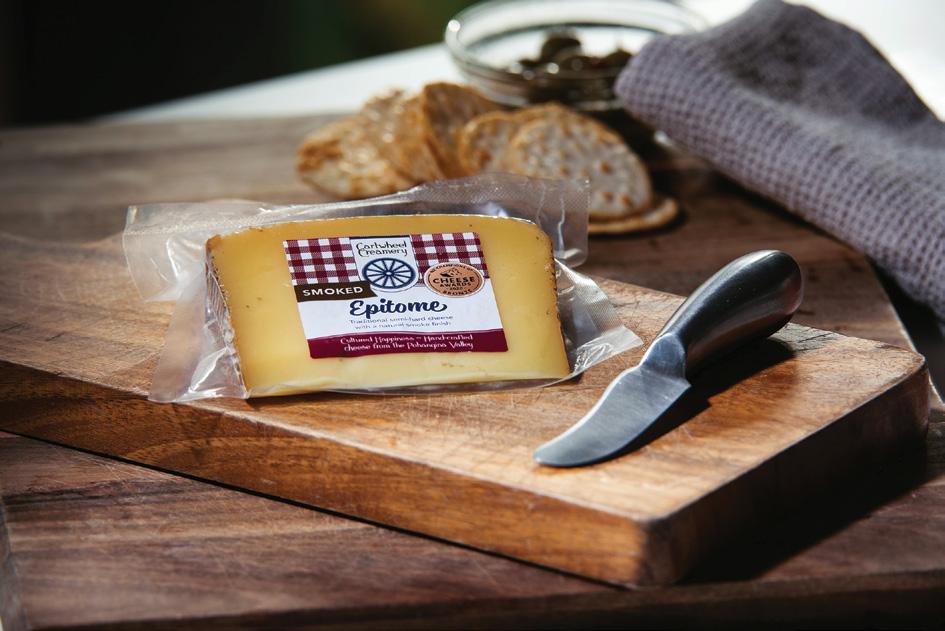
After a career in science a Manawatu couple are using local milk to make a range of artisan cheeses. By Jackie Harrigan.Left: Say cheese: the Cartwheel Creamery team: Adrian Walcroft, Wicki Pask, Alison Leber and Jill Walcroft. Above left: The Walcrofts set up their creamery at their small Pohangina property. Above right: Epitome, a lower-fat tomme style cheese.
Having decided not to try and supply their own milk, the couple have built numerous supply arrangements with local farmers and love that their milk is produced so locally that they can pick up a vat of it and be making it into cheese the same day.
They have four main suppliers of milk, Jersey milk for the soft cheeses from Ian and Aly Passey’s Pohangina Valley herd (see story page 30); Friesian lower-fat milk from the Stewart Dairylands herd at Bunnythorpe for the Epitome tomme-style cheeses; winter milk from Arran Farm of Feilding from their main herd through the winter and their A2 herd for a special range of A2 cheeses sold out of their farm shop; and milk from the Henson’s herd at Rongotea for the goats’ cheeses. Alongside locality, the quality of the milk is the most important factor the Walcrofts look for.
“All of our suppliers have very low cell counts - high counts change the quality of the flavours and the yield of the cheese,” Jill explained.
“They also let us know if they are feeding the cows on a crop of turnips or brassicas - because they can change the flavour profile of the milk and of the cheese.”
The couple tend to make cheese twice a week and have a cycle of production that sees the making, ageing, wrapping and marketing of the different cheese varieties depending on their individual ageing needs - followed by marketing at the regular markets the couple attend to sell their products.


They have been regulars at the Friday Feilding Farmers Market and Saturday morning Whanganui Riverside Market for many years now, and attend two Palmerston North farmers
markets each month, along with numerous regional fairs and shows around the Manawatu and the Wellington Food Show. Cheeses are also sold through more than 25 delis and cafes around the country and from the Creamery door by appointment.
The 2020 onset of Covid-19 encouraged them to set up an online shop to sell the full range of single cheeses along with a range of goodie boxes with artisanal crackers and preserves. Whole cheese rounds for weddings and parties are the latest product Jill has developed. She is active on social media, building awareness of the brand and using it as a way to keep followers abreast of new products and news of wins at the cheese awards, which have been plenty over the past few years.
She draws on the local themes - local milk made into local cheeses by locals, the beauty of the beautiful Pohangina valley through the seasons, new ways to enjoy the cheeses, flavour matching, and brand building messaging.
As with any small business the Walcrofts have been mindful of sustainable growth and have recently taken on some part-time labour to give a hand and take some of the manufacturing and marketing load.
“We have been slowly ramping up production, despite the Covid pauses and it’s great to have the freedom to organise an extra milk pickup whenever we need it. Its just a matter of making a phone call to the Passeys the night before,” Jill said.
“We are planning to move to making cheese four days a week and the ability to double production will allow us to grow the team and give us more time off and remove some key risk - by having another cheesemaker available.

“Eventually we might like to step back and keep an involvement but be more hands-off - Adrian has fallen for sailing so he wants to have more time to explore that.”

The cheesemaking process 101:

• Cows eating grass produce very fresh milk
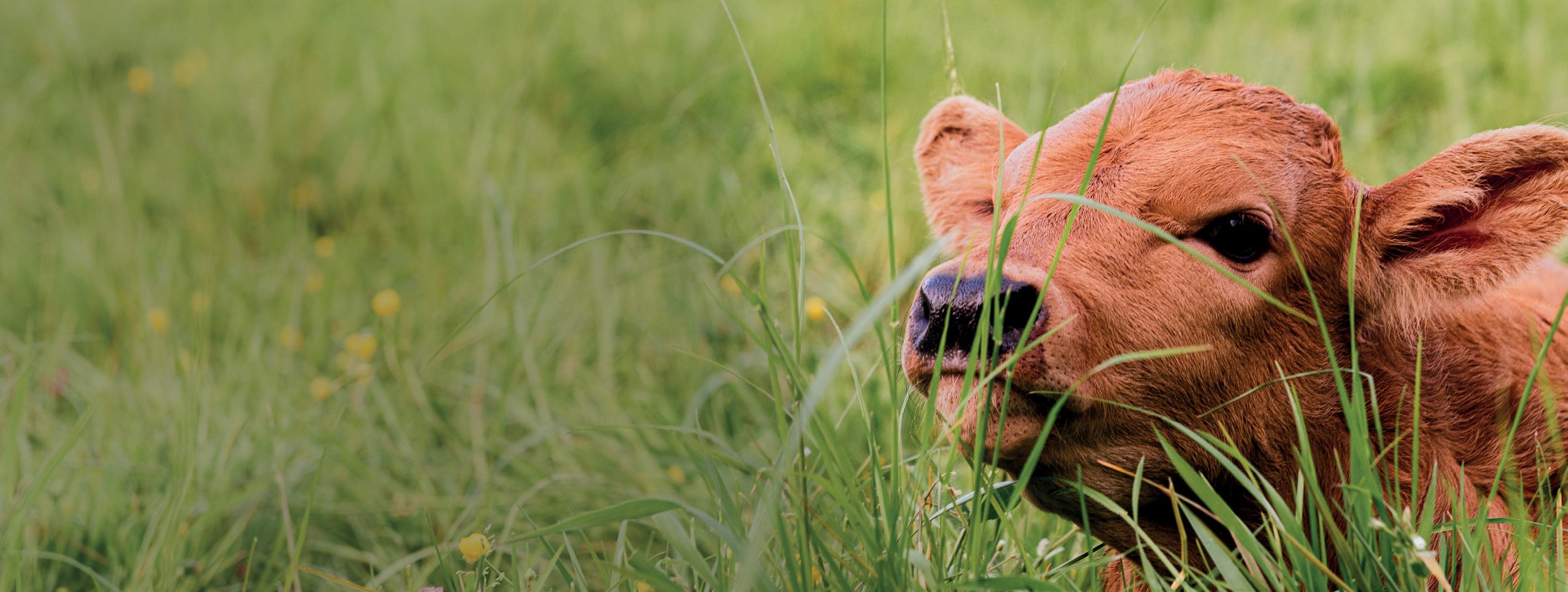
• Into the vat for pasteurisation (65.1C for 10 minutes then chilled to 32C)
• Making: Cultures are added to the vat, producing acid that changes the flavour and profile of the milk, a coagulant (vegetarian rennet) turns it from a liquid to a gel, and the enzyme reaction forms curd
• Cutting the curd - cutting into cubes releases whey, curds are stirred and held at temperature
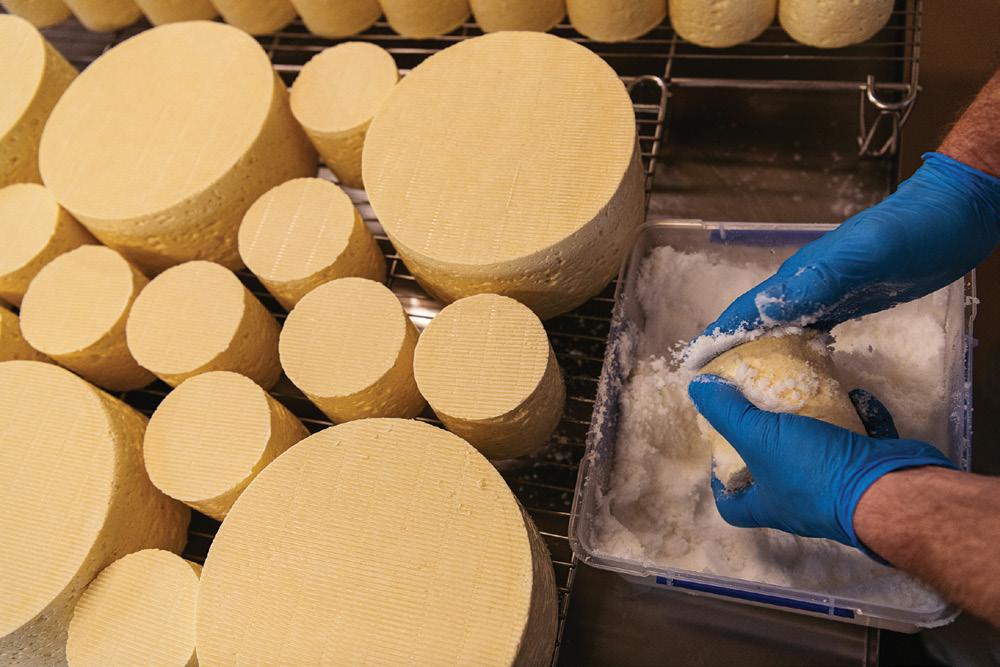
• Whey is drained and curds scooped into shapes and pressed or not - depending on the cheese - lots of turning of the rounds
• Salt added as preservative and for flavour, some are brine salted
• Added seeds/spices/smoked/rounds washed in beer to form rind using local ales
• Into the culture room - steady temperature and humidity. Matures and grows rind, ready for packaging and marketing
*
‘During cheese-making things need to happen at odd hours - it’s a 24/7 process - so it’s great to be able to pop across to the creamery and do the various processes.’Top: And the compliance goes on… Above: Salting the cheese
The Passey family have been locals in the Pohangina Valley for four generations now, and their high fat Jersey milk is featuring in a range of local cheeses.




Ian Passey’s ancestor was sponsored to come out from Shropshire to become a farmer by Bishop Monrad, an ex-Premier of Denmark who settled at Karere just out of Palmerston North with his family in 1866. The bishop only stayed in New Zealand for three years before returning to Denmark but his sons stayed on and farmed with their families.
The Passey’s bought their own farm in the Pohangina Valley in 1912 from the Wagstaff family who had cleared much of the land - they planted the 120 year old oak tree still growing near the woolshed and another, much older remnant totara tree was too large for the cross-cut saw to fell. The Passeys’ roots go deep in the valley and Ian has been on the family farm since a summer dairying job in the late 80’s, while he was a Massey student, “flicked a switch” for him and convinced him to take on the family farm. He and his wife Aly run 200 ‘Kiwi-cross leaning towards Jersey’ cows on the river terraces of the Pohangina river, and run 105 breeding ewes, all replacement dairy stock and 15-20 dairy beef steers on the steeper sidings between terraces.
The 90ha milking platform is run by Ian on his own with a part-time worker and while he says it’s busy with the two operations, he is passionate about low-input farming and loves the interaction with his animals and farming Jersey cross cows that will produce at an efficient level for 10-12 years. Of the changing times in the dairy industry, Ian told visitors at the April SMASH day that the farming industry has always been a place of change - solving problems throughout
the history of agriculture is what Kiwi farmers do, and have always done, well, he said.
On his own operation, he and Aly have changed to Once-ADay (OAD) milking in the 2021/22 season, which he says has been a mixed bag with a very poor spring season.
“We used to milk OAD for six weeks each spring and then go TAD, but I thought that this would be a good season to change, because the high payout will buffer the loss of production.”
Twice a day production was 79,000kg milksolids (MS) in the last season, about average for the herd, Ian said.
“We are 13% down on last season, but I think we would’ve been 5-7% down anyway, with the difficult season - but we hope to get back to 75,000kg MS production levels over the next three seasons.”
“There is quite a different feel to the season though, just milking OAD - there is less pressure, even though the daily milking is longer and the grazing has changed - I have more time to monitor and change things if I need to pull the cows out of a paddock or move them along.
“I was surprised at how many changes OAD has created.
“The cows are certainly happy on OAD, they have adjusted very well, and they have a cruisy life.
“Just having the morning milking is easier on them in the summer heat, they can stay under the shade and I think its better on the land.”
The supply partnership with Cartwheel Creamery came about after a phone call with Adrian and Ian said it is really nice to see his product being processed locally.
For the past four years Ade rings Ian in the evening before he needs milk.
“He turns up with his trailer and vat, listening to RadioNZ, I hear the dog bark and he’s gone again.
“He has been coming regularly a couple of times each week and the small volume means we are only selling about 1-1.5% of our total production to them for the cheese-making.”
“It does mean we have an audit with MPI as they require Cartwheel Creamery to have their own RMP for this farm as a supplier of milk for cheesemaking so we have to comply with that.” But the couple really enjoy seeing their milk being made into artisanal cheeses and sold locally, saying it’s a great local partnership.

With calving just around the corner, filling any gaps in your team is likely to be top of mind.
Unemployment is at a historical low and many sectors (including dairy) are finding it tough to get staff. Getting both Kiwis and international workers on to dairy farms in time for calving is a priority for us all.
To help attract Kiwis, DairyNZ’s new GoDairy Go Now campaign is highlighting the benefits of working in dairy and the opportunities available to job seekers. It also points candidates to the latest sector vacancies.
The campaign is helping raise the profile of the jobs available and it’s then up to farmers to ensure those are great jobs.
In such a competitive job market it’s important your job ad is accurate and appealing. As people increasingly seek work-life balance, there’s a growing expectation that roles will offer good rosters and hours. Adding in factors like flexible milking, development opportunities and a competitive salary package will make roles more appealing and help attract quality staff.
Coming up with fresh ideas on how to improve your workplace – to both attract new staff and keep the ones you have – is a challenge. But I encourage you to explore what you could do to attract, and keep, good people.
DairyNZ has a webinar on recruitment and retention online that has some great tips from other farmers and a rural recruitment specialist. Visit www.dairynz.co.nz/ffseries.
Where farmers are struggling to fill a position locally, workers can come into New Zealand through the dairy border class exception.
Sustained advocacy by DairyNZ led to the Government increasing the number of international dairy workers. For 2022, the number increased from 300 to 800. The minimum wage requirement for these international workers is $28/hour.
The process is much simpler than last year – as there are no isolation or MIQ requirements. There is also no cap on farm assistant numbers. With air travel opening up again, booking flights is becoming easier too.

If you will need an international worker on board this spring, we recommend you apply now to allow time to work through immigration processes.
To find out more visit www.dairynz.co.nz/border
If you have an onfarm dairy role available, list it at nzfarmsource.co.nz/jobs. You can list a vacancy, even if you’re not a Fonterra supplier. The campaign underway now directs job applicants to farm positions advertised on Farm Source. If you’re having trouble filling a role, and want to apply to bring an international worker into NZ, the dairy class exception visa is a good option. The visa is currently the only pathway to bring in international workers. To find out more and apply, visit www.dairynz.co.nz/border





0094320
60x267


CW Sheep 1/3 Page Multi


A PETA dispenser is the simplest way to dispense magnesium, trace elements and salts to treat grass staggers or trace element deciencies. Developed by agricultural scientists at Ruakura Research Centre, the correct amount of treatment is dispensed per-animal per-day. Available in 24 hr and 48 hr models. Simply place in the trough and the job is done.
Purchase a PETA Dispenser from your local rural supplies store or veterinarian.





www.peta.co.nz

Pāmu have led the way with their innovative farming from the beginning, so it was no surprise when they decided to expand their deer milking empire into the North Island.
Deer milk has proven to have significant health, nutrition and skincare benefits compared to regular milk, and provides an opportunity for the farming sector to expand into new areas of the world while driving the milk industry forward.
So, who better to head the experiment
than Mason Jones, a current Pāmu farmer with five years experience with deer after starting as a junior shepherd on their Te Anau farm. Mason spent time working with deer both in Te Anau and later in Rangitaiki, and said this previous experience was invaluable when it came to him deciding to take on the job of managing the milking side of things.
“Milking definitely doesn’t come naturally to me, being from a dry stock background, but having experience with deer and knowing how to behave
around them is far more valuable. Deer can be unpredictable at times and so it is important that we have a good team who behave accordingly.”
Picking the right staff is extremely important when working with deer, and Mason said he has been very lucky so far. Alongside him he has his 2IC Scott and a team of milkers with previous experience milking sheep, which helps when it comes to having a calm attitude around the stock.
Both Scott and Jo, another milker, came over from other Pāmu farms which meant that they already knew the high standards that Pāmu set and aim to achieve.
The team have started off milking 90 hinds once a day through their brand new seven-aside herringbone shed on Tukairangi Road, just outside of Taupo, and soon hope to expand this number to 140. Choosing the deer that are transitioned into milking is the hardest part, Mason said, made easier by the fact that the deer all come from within Pāmu and are chosen mainly on temperament rather than milk production.
“Sometimes it can be difficult choosing because you don’t know how an animal is going to act until they are in the milking facility. The great part is that there is no waste; if a hind does not adapt well to being milked, she simply dries herself off and returns to another Pāmu farm.”

Mason wasn’t completely in the dark about what he was signing himself up for, and spent time with Pete and Sharon McIntyre in Gore before starting the job. The McIntyres are a fifth-generation farming family, and Mason said his time with them was extremely valuable in preparing him for what was to come. While the industry is still learning, it is important that fellow deer farmers have each other’s backs, because we all want each other to succeed and show the world how beneficial deer milk can be, Mason explains.
Another advantage to milking deer is the handling of young stock. With the help of Jamie Ward from AgResearch, Mason has developed an efficient way to rear fawns and guarantee accurate recording of replacements. Fawns are currently born between November and December, and
while the hinds are still adjusting to the milking procedure, fawns are left at foot which has proven a natural success.
They are weighed and then tagged and weaned over 30kg, while anything under this is left with the hinds to continue to naturally grow. The fawns are all DNA tested ensuring the most accurate results in regards to keeping everything in house, and Mason hopes they will be able to accurately produce replacement hinds from those that prove themselves to be the best overall milkers.
“Our best hinds are producing 1.1 litres/ day, which is quite impressive considering that’s just once a day and looking at the size of their udders. It is important that they are milked out properly, and we pride ourselves on having zero mastitis issues so far after two short seasons milking.”
At the end of the season (usually about the end of April) the hinds dry themselves off naturally, and then they are scanned at the end of May. While it is very much still a case of learning on the job, most hinds won’t cycle until the middle of March,
which is why scanning happens so much later. This works well with drying off being earlier and gives the hinds time to adjust, while relieving stress both for the deer and the staff.
Developing the system to work well onfarm has been easy so far, Mason said, and the smaller milking window alongside a 6/2 staff roster has kept everyone happy.
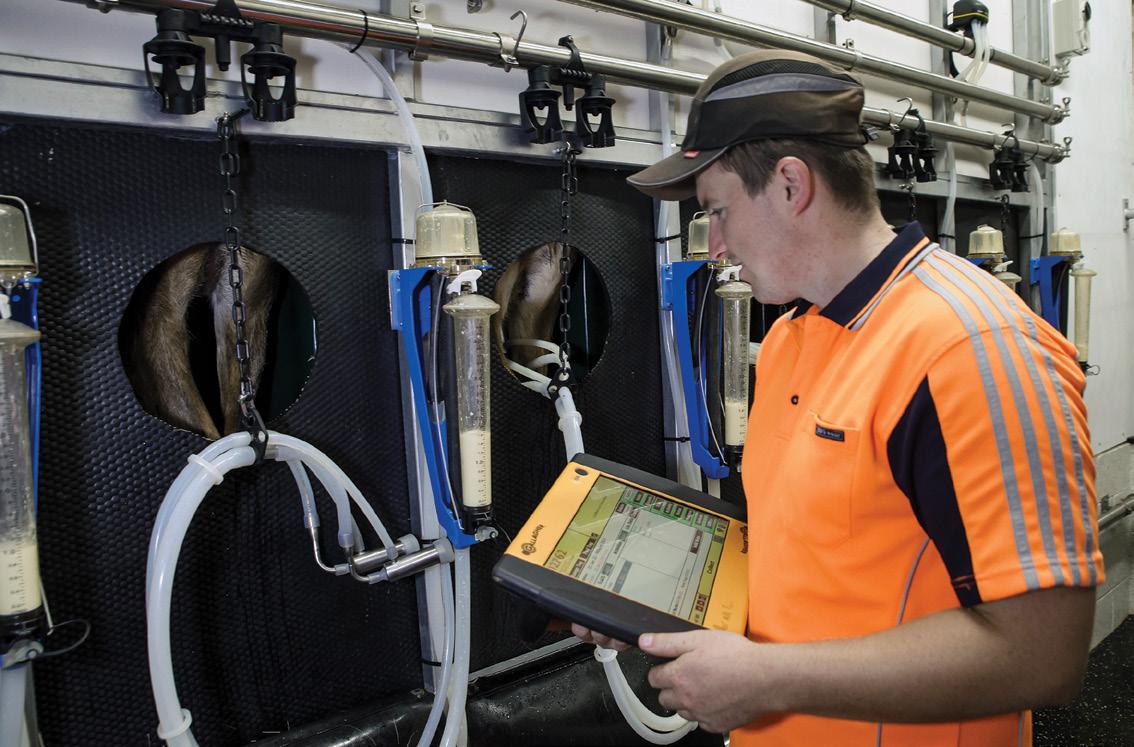

All the milk produced is frozen and transported off farm fortnightly to be used by Pāmu for a variety of products.
These include cosmetic products mostly sold in South Korea, but also as milk and powder to restaurants in New Zealand, Australia and Hong Kong.
The plan in the future is also to make products available to buy direct from the Pāmu website.
Deer milk’s rich nutritional profile lends itself to foodservice, but other components useful for skincare and healing service have also been identified.
The latest venture is research into the benefits of deer milk in regards to healthy ageing, something already strongly
supported by traditional Asian beliefs among the older population.
“Although this particular venture is new for us here at Pāmu, the research into the benefits of deer milk has been around for years. It’s proven itself as a product with multiple benefits, and our job is to make it as efficient as possible while keeping to Pāmu’s high animal welfare and production standards.”
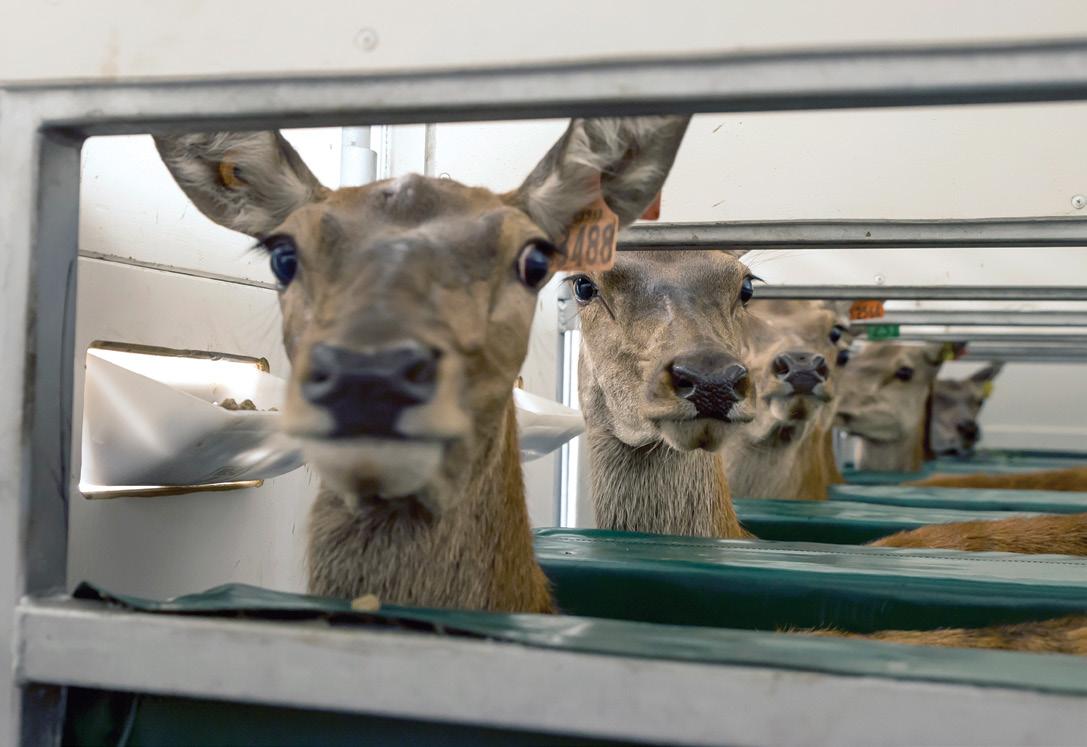
Plans include making the deer products fully organic, which Mason believes is easily achievable. With no mastitis issues and flexibility within Pāmu in regards to which hinds are getting milked, antibiotic usage is rare and the farm is already spray free. In future seasons Pāmu hopes to increase the number of hinds being milked onfarm, while improving breeding in house with a focus on good temperament as well as milk production.
The milk production for each hind is closely monitored and recorded daily, and as the business continues to expand, it will be easier to track and breed from the hinds that consistently produce the most.
‘Milking definitely doesn’t come naturally to me, being from a dry stock background, but having experience with deer and knowing how to behave around them is far more valuable.’Above: Mason Jones has five years experience working with deer production. Right: Ninety hinds are milked by Jo once a day through the new seven-aside herringbone shed just out of Taupo.
They say make hay while the sun shines, and although returns are good, the potential to lose margin within a farm business is a real risk with inflation creeping up steadily.
So how can farmers ensure they have a firm grip on the situation?
New Zealand Agri Brokers client director Chris Laming says while rising costs are evident, profitability is very strong.
“Right now, we are facing one of the greatest periods of agricultural profitability we have ever seen.”
He says if handled well, there is an opportunity for many farming businesses to set themselves up as excellent operations for the next 5-10 years or beyond.
“But cost creep right now is relentless, everyone is worried about inflation.”









Consumer Price Index for the year ended December 21 was 5.9%, the biggest change since June 1990. The quarter to September 2021 was 2.2%, and December 21 quarter was 1.1%. Rents and housing construction were the biggest culprits, with the latter driven by supply-chain disruption, higher labour costs, and higher demand. The oil shock has further exacerbated the situation.
“These are significant economic changes happening right before our eyes,” Laming says.
With inflation comes a rise in interest rates. Following the GFC, the OCR fell from 8.25% to 2.50%, and since then, inflation and rising interest rates haven’t been a feature. In fact, the opposite has happened - credit has ballooned, and the price of credit has only dropped.
But a headline inflation rate of 5.90% cannot be ignored. “It is here in the flesh and farmers are living and breathing it.
“Not so much in the interest rate area (yet), we are still at historically low costs of funding, but certainly in the input costs.”
Laming is seeing it every day in meetings with clients.
“There’s a sea of red in the expense lines.
The typical places are fertiliser, wages, fuel, feed and grazing, and compliance.”
He says understanding costs and shaping
the business for the year ahead can be an effective way of preventing cost creep. Understanding the difference between true running costs and discretionary costs, such as extra feed brought in as a response to lower production this season, is one way of doing this.
“It is very clear there is cost pressure.
He was looking through one of his farming customers’ accounts recently, and their cost structure is up 36%.
“And you think gee, that’s bloody hard.”
“But the trading surplus (EBITDA) is up about the same as well. So, when you think about what pays the interest, it’s EBITDA, so margin is still increasing.”

The tricky part is if a discretionary cost becomes an overhead and becomes embedded in the system.

“That kind of stuff can be quite hard to unwind, particularly if the current level of pricing isn’t retained.
Farmers should think about the decisions they would make in their business if payout was halved.
“From a dairy perspective, if we were looking more like a $5.00 or $7.00 payout, what would we be doing differently around fertiliser, feed and stock numbers?”
He has made some observations about the situation, based on experience with clients.

When farmers think prices will increase, there is a strong desire to beat the system. They will pre-purchase or “inventory build” a lot of their inputs – i.e. fertiliser, spray, feed. This creates more perceived demand and further drives inflationary pressure on supply chains. Fear creeps in and decisions are made quickly and probably in a lot of cases, without proper analysis.
Constant messaging around inflation gives an excellent pretext for supply businesses to reprice their goods and services. Farmers see it and hear it constantly and therefore, when the servicing bill is a little higher, there is a greater rate of acceptance.
Inflation is striking everywhere, but agricultural profitability is strong, Victoria Rutherford writes.
3. HIGH COMMODITY PRICING CAN QUICKLY ERODE COST-MANAGEMENT
Despite the international backdrop, times are good right? It’s easy to let the cost creep occur due to the ballooning top line.
4. BE MINDFUL OF SYSTEM CREEP
System creep occurs when the perceived answer to rising costs is lifting production. Marginal increases in production can result in structural changes to the business model lifting fixed costs. These costs become embedded and are hard to unwind.
5. CREDIT METRICS CAN BECOME QUICKLY “OUTDATED”
Bankers have a tough job right now. They will have to try and fit your current (and likely inflated) cost structure into their credit-decisioning tools, which are likely to be based on product prices about 40% lower than the high prices you are receiving.
What does this mean for the big picture, and how can we capture it?
1. UNDERSTAND YOUR BUSINESS –WHAT DOES IT REALLY COST?
Understand what it really costs to produce a kg milk solid, a ton of grain, or a kg of beef. What discretionary spending have you undertaken this year, that aren’t true costs of production, and more a response to favourable pricing or unfavourable growing conditions? What about last year? Have you got it recorded?

2. ‘WHAT IF’ ANALYSIS – HOPE FOR THE BEST, PLAN FOR THE BEST, BUT WHAT CAN YOU CHANGE IF YOU HAVE TO?
What would you change if the payout dropped by 20%? What about if it dropped by 40%? Would you drop cow numbers? Reduce a labour unit? Mine your soil fertility? Present this strategy to your bank so they can understand your true running costs, and how you would react to a changing environment. This will give them confidence in you and your business.
3. ARE YOU GETTING THE BEST DEAL?
Review your suppliers. Should you reprice some of your supply arrangements or could you negotiate better terms with your existing suppliers? Could you increase your business with them to become more valuable to them? Where are their
cost pressures coming from and are those longer- term issues or shorter-term ones? Can you work with other farming businesses to create buyer groups, or pooled buying?
4. INNOVATION
The answer isn’t always the same. What are your competitors doing? Break the norm and challenge your thinking. If you do what you’ve always done, you’ll get what you have always got. Only, it will cost you more.
5. CHANGING UP (OR DOWN) YOUR BUSINESS
Understand your business’s value chain. Could you diversify up or down your supply chain? Should you look at support land to fulfil your grazing needs? Or a dairy farm so you own the cows you winter graze? Or a cropping business supplying you grain? Or do you expand to spread overheads, or sell the poorest performing blocks that require significant fertility improvement?
6. UNDERSTAND HOW YOUR BANK IS ASSESSING YOUR MID-TERM CREDITWORTHINESS.
Your bank is still going to be using a payout of $6.50-7.00 to “stress test” any lending decision they make with your business. Your costs, whether due to price rises or one-off discretionary items, might look a bit ugly against that payout. Learn how to present and validate your numbers at this lower payout bringing in historical numbers and other narrative to support. All banks have different processes here for how they look at your present and past data to make their lending decisions.
7. BUILD A STRATEGY NOW Laming encourages those worried about cost creep to engage the experience of their advisors or agri consultants.
He says these are big topics which require much thought and robust discussion with your governance team. The landscape is a wonderful opportunity to create outstanding businesses and set them up for years to come.
• First published, Country-Wide June 2022.
Lucerne has successfully replaced summer turnips on a Southland dairy farm, providing the feed needed in the midst of the autumn drought.
“After Christmas, our covers were down at 2300kg drymatter (DM)/ha,” farm manager Michael Kiernan said at the region’s second only SMASH (Smaller Milk and Supply Herds) field day at the start of May.
“There was no rain in the forecast and I think we bottomed out at 1600 cover. Every time we did get some rain it blew a gale and it was gone.”
They started feeding out their lucerne balage, cut on three and half hectares on the runoff, and the cows ran to eat it.
“It’s the first thing they go for. They eat it instead of the grass,” Michael said.
“With summer turnips, when they grow well we didn’t need them because we had enough grass and the seasons we did need them they were no good,” farm owner Dean Rabbidge said.
“And it was always a problem to get those paddocks back into grass because of the time of year.”
So in autumn 2020 they sowed lucerne as a trial and this season will get four cuts off it – about 11T DM for the year.
It’s double wrapped as balage, just in case they don’t need it until another season.
“This year I don’t think it hardly had the plastic on it,” Dean said.
They’ve worked out it costs them
about 25c/kg DM, not bad when grass balage is currently getting freighted from Canterbury at $65/bale just for transport.
Their only problem is the winter weed spray lucerne needs if conditions get too wet to get gear on the paddock.
When it runs out in a couple of years, Dean and Michael are thinking of increasing the hectares so they don’t have to feed so much grain in the dairy.
Covers on the Wyndham farm in early May were at 1860kgDM/ha, still far too low for the time of year even though day temperatures were still hovering in the high teens.
“We put 95kg/ha of urea on in April with the rain we got then and that really changed things. Last week we grew 30kg DM/ha a day and this week we’ve grown 42kg.”
The 68ha dairy platform running 174 cows is part of an extensive sheep farming operation over multiple blocks. Dean converted it in 2011 as a way to buy into his parents’ sheep and beef operation and after four years was glad to hand it over to

Michael from Ireland.
“I very reluctantly get roped into milking once or twice a year now,” Dean said.
“There are efficiencies with the sheep operation and the different classes of stock do line up at different times of the year. When there is an excess of grass on the sheep farm we can put it into the cows. And equipment is shared across the two.”
The conversion was done with the aim to later grow the number of cows – the tracks are six metres wide and the herringbone dairy has 24 sets of cups. However recent changes in regulations have stopped any increase in cow numbers.
“We just have to grin and bear it,” Dean said.
Although the ground was solid underfoot in early May, the farm can get wet so cows are wintered off at graziers near Balfour.
“We always dry off 20 May. You can ruin the whole spring in one week by trying to milk to the end of May.”
“It’s nice at the moment,” Michael said,
The success of a switch to lucerne featured at Southland’s second only SMASH (Smaller Milk and Supply Herds) field day in Southland. Story and photos by Karen Trebilcock.The farm walk at the SMASH May field day on Dean and Sarah Rabbidge’s dairy farm took in the cows and the dairy.
“but it can flip very quickly. The only shelter we have from the south is the Tiwai chimney.”
Another tool they’ve used to combat the dry conditions is switching from twice-aday to ten-in-seven milkings.
“We thought about three-in-two but it just did my head in having to go through the calendar figuring out which days we were milking twice a day and which we were milking once a day,” Michael said.
“With ten-in-seven, every week is the same which works for all of us.”
Ten-in-seven milking is milking twice a day on Mondays, Wednesdays and Fridays, and once a day on the others including in the weekend.
“It took the cows about a week to adjust and the somatic cells spiked but then everything settled down,” Michael said.
“It’s certainly put the condition on the cows.
“There were times before we changed that they didn’t really want to come into milking in the afternoon but now they want to.”
He also credits the system for keeping their relief milker.
“She reared the calves for us then we offered her some milking time but she wasn’t keen to milk twice a day so ten in seven works really well for her and she’s stayed.”
DairyNZ senior scientist Paul Edwards
of Lincoln said at the field day farmers were finding reduced milking frequencies a business saver with the lack of dairying staff in the country.


“It’s working on large corporate farms as well as smaller, owner-operated ones,” he said.
“It also means a whole group of people who have to structure their day around school times are available to milk cows in the middle of the day.”
Further trial work was still to show the effect on milk production but there were other trade offs such as increased cow condition, better fertility, staff gaining more sleep time and savings on plant costs, he said. One farmer at the field day pointed out dairy farmers were there because they liked milking cows which caused some laughter among the 40 people there.
“We’re 10,000 people short in the dairy industry,” Paul replied. “Something has got to change.”
‘With summer turnips, when they grow well we didn’t need them because we had enough grass and the seasons we did need them they were no good.’Dairy farm manager Michael Kiernan (left) and owner Dean Rabbidge. All that is left of lucerne balage after it was fed out to the milking cows.
Since the April announcement, farmers have already approached their regional councils asking for wintering consents for next year and have been turned away as the new regulations don’t come into effect until November 1.
“Farmers are making decisions now about next year,” Justin said. “They’re already thinking about which paddock they want to use and, the reality is, the crops will be planted well before the start of November.
“Farmers are trying to do the right thing. They know there is a shortage of consents officers so they are trying to be proactive and get in early but we need councils to be constructive and help farmers get through the consent process.
“November is just too late. There will be a tsunami of consents going in if that date doesn’t change and councils won’t be able to handle them.
“DairyNZ will be pushing for councils to provide more clarity on consent processes, and we would like councils to start processing consents sooner.”
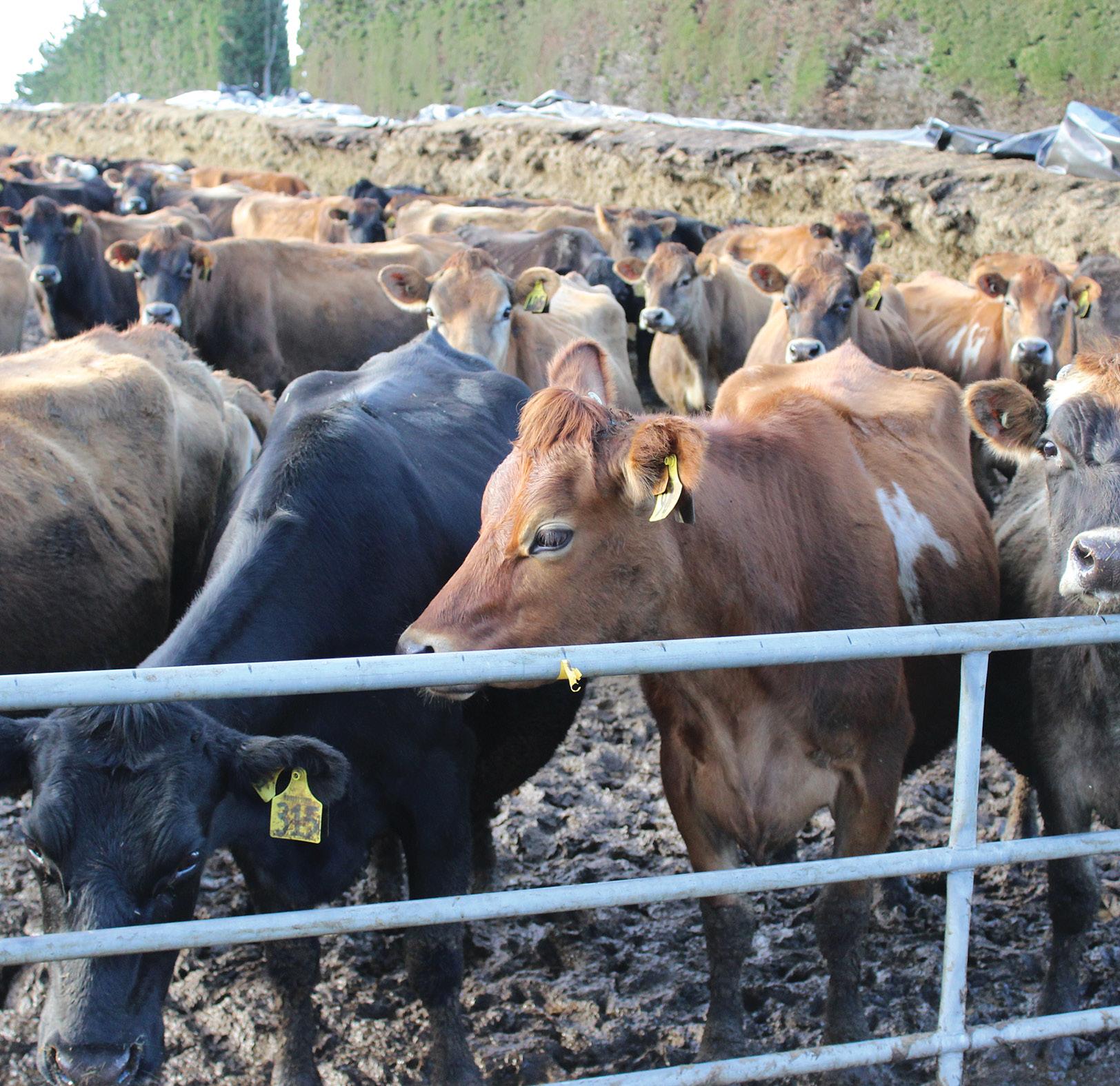
The slope rule has been refined “to the maximum slope across any 20-metre distance in the wintering paddock must not be 10 degrees or more”, but Justin said it was still too vague.
“We didn’t support the previously proposed 10 degree slope rule, and we’re waiting for government guidance clarifying how slope rules will be interpreted. We want the government to work with the farming sector to ensure the guidance is practical and clear.”
A spokesperson from the Ministry for the Environment (MfE) said slope maps, as proposed in the past, would not be used.
Farmers might have had a small win with the latest announcement in late April by government on the Intensive Winter Grazing (IWG) regulations, but it’s not over yet. DairyNZ lead adviser solutions and development Justin Kitto said there was a lot of detail missing and hopefully there would be some clarity from the government by the end of July “fingers crossed”.
Until then, farmers should continue planning for next winter using best practices and sit tight.
“At face value, the government’s announcement is a positive outcome as pugging has been left out as well as the resowing dates with new rules that are more practical and good for the environment.
“But we’re now waiting for an interpretation of these new rules,” he said.
“There are various tools that farmers can use to assess slope with additional information due to be released by MfE later this year,” the spokesperson said.
“Under the amended intensive winter grazing regulations, slope is no longer measured as a ‘mean across a paddock’, but the area being used for intensive winter grazing.
“This makes it possible for parts of a paddock to be used, such as any areas where the slope is below the 10-degree
Farmers want the government to work with the sector to ensure Intensive Winter Grazing guidance is practical and clear. Story and photos by Karen Trebilcock.Feedpads such as these may no longer meet minimum standards.
slope threshold would meet this permitted activity condition, and any areas over the threshold would not, regardless of paddock boundaries.”

Properties neighbouring wintering
blocks would not be tied up in the new critical source area rule.
Anyone undertaking IWG activities must, from next year, protect critical source areas by leaving them ungrazed,
Mastitis pain accompanies infection and can slow her recovery.
Using a single shot of METACAM® pain relief at the same time as antibiotic mastitis treatment will ease inflammation and pain, ensuring a more rapid, comfortable return to the milking herd.


METACAM‘s proven 3-day pain treatment helps her to heal and return to the herd faster, without a prolonged, complicated recovery.
Talk to your vet today about making METACAM part of your mastitis treatment programme this spring, and put your cows on a better recovery pathway.

have vegetation as a ground cover and they must not be cultivated in annual forage crop.
“Farmers are not responsible for managing critical source areas beyond their
‘Farmers are trying to do the right thing. They know there is a shortage of consents officers so they are trying to be proactive and get in early but we need councils to be constructive and help farmers get through the consent process.’Concrete feedpads may need a rethink on how they are used.
own farm,” the spokesperson said.
“However, the ministry expects farmers to work with their community and catchment groups to improve freshwater health in their catchment.”
Wintering on grass and balage which was becoming more common, would also not be caught in the new regulations.
“As intensive winter grazing is defined by an annual forage crop which excludes pasture, these other grazing practices will not be regulated by the intensive winter grazing regulations,” the spokesperson said.
However, National Environment Standards for Freshwater regulations for stockholding areas were expected to apply in grass-only wintering.
Stocking holding areas were defined as “an area for holding cattle at a density that means pasture or other vegetative cover cannot be maintained”.

Stockholding areas must be sealed to a minimum permeability standard; the effluent must be collected, stored and disposed of in accordance with a rule in a regional or district plan, or a resource consent, and must be at least 50 metres away from any waterways.
Justin said it would depend on how regional councils interpreted the national rules whether farmers could continue to all-grass winter.
“Farmers will also have to think about their sacrifice paddocks because they could be caught up as well.”
However, sacrifice paddocks are usually only needed if the weather turned bad, and regional councils were unable to consent


ahead of time for weather events which may or may not happen.
“This is another area where we need to know how councils see the rules applying,” Justin said.
Although farmers may wish to build standoff pads or wintering barns so they avoided IWG regulations, he said changes to animal welfare regulations also need to be considered.
“We have the case at the moment, that two sets of government policy changes are happening by two different ministries.”
The Ministry of the Environment was responsible for the wintering rules but the Ministry for Primary Industries was at the same time reworking the Code of Welfare for Dairy Cattle (page 68).
The new code’s proposed minimum standards states dairy cattle must have
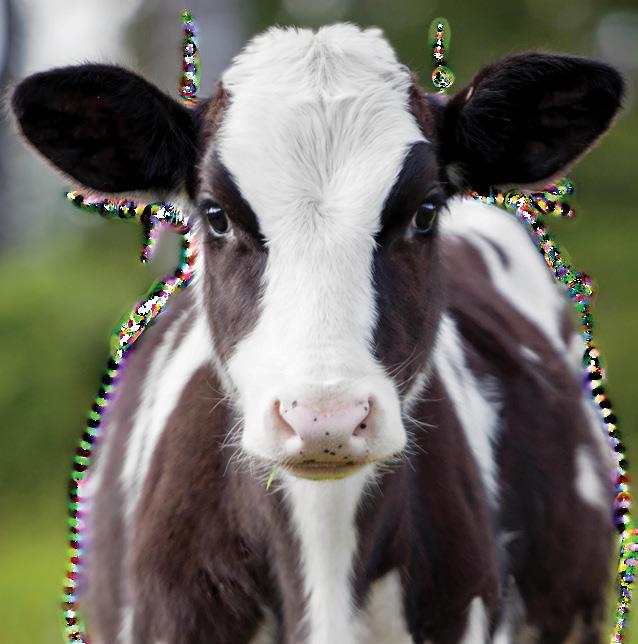
“sufficient space for all animals in a herd to lie down and rest comfortably at the same time” and they must have access to a “compressible well-drained surface”.
Both conditions will stop farmers putting cows on concrete or gravelled surfaces such as tracks or dairy yards in times of bad weather.
“DairyNZ is still working through the changes to the dairy cattle welfare code and will have more information for farmers on the proposed changes soon.”
“With wintering regulations changing and the new animal welfare changes proposed, and more information needed from the government and councils on how wintering rules will work in practice, it’s a complex situation for farmers.


“Hopefully, once more information is available there will be more certainty on what farmers need to do.”
A 14 to 1 return on investment.
A 14 to 1 return on investment.
In 2012 MPI funded a four and a half year study * to test the effectiveness of BioBrew’s CalfBrew® probiotic supplement on calves.
Early results showed that the use of the fresh, intact probiotic increased the rate of calf growth by up to 10%. As adults, the treated calves produced significantly more milk solids and were also less likely to die and more likely to remain in the herd.
Ultimately, the benefits associated with CalfBrew® equated to a 14 to 1 return on
investment, showing that use of a fresh probiotic on calves has both short-term and long-term benefits for both stock and farmers.
BioBrew’s CalfBrew® is a fresh, live and active probiotic and the finest microbial tool available. It is designed to bring your calves, lambs, and kids through their first year in optimum condition at a truly affordable price. Visit


Clover needs 16 essential nutrients to grow well, but soil scientist Doug Edmeades says we often aren’t even soil testing correctly to know which nutrients are missing.
Speaking at a SMASH field day near Hokitika, the often-controversial Dr Edmeades said there is a generation of younger farmers who don’t know what a good ryegrass-clover pasture looks like.
Ideally, dairy pasture should be between 35 and 40% clover which will then put about 100kg of free nitrogen into the soil. Clover has a poor root structure though, so has higher requirements for nutrients. Because of that, it shows up deficiencies first which makes it the “canary in the mines” for farmers.

“If one of those 16 nutrients isn’t there, clover won’t grow. If your pasture isn’t pulling its weight, there will probably be an underlying nutrient problem. The chain is only as strong as the weakest nutrient.”
The nitrogen fertiliser cap and rising fertiliser costs should be making farmers look at clover as their friend.
“But we’ve lost sight of how to grow clover-based pasture.”
On his workings, a farm with a good clover pasture could produce 800 to 900kg milksolids (MS)/ha without nitrogen supplements – about 150kg N/ha/year. Whereas, applying nitrogen to pasture stimulated the growth of ryegrass which then shades clover so that it can’t do its job as well. Or clover doesn’t need to fix as much nitrogen.
“If there’s too much nitrogen in the soil, the clover decides it will use that rather than make its own.”

Regardless of its nitrogen-fixing capabilities, clover is also a better feed source than ryegrass and that makes it important in the pasture and worth looking after.
Clover has disappeared from many pastures though for a number of reasons, including nutrient problems. But he said it often only takes the right nutrients to kick start it. A bank of clover seed can remain viable in the soil for up to 20 years.
Getting all the nutrients right depends on soil and herbage tests. Animals don’t put nutrients back on the pasture evenly and if you take a soil sample from a urine or dung patch, it will alter the true results for a paddock.
A sample from a urine patch will produce results that may not match the poor-quality pasture you are looking at in the paddock. When urine patches are not obvious, the underlying soil fertility is probably good.
He advised farmers to get an expert to take soil samples – someone who knew how to look at pasture and where to take relevant samples. Then be aware of the variability of soil tests and use that data carefully. For those farmers struggling to grow clover, he recommended clover leaf samples and again, not from dung or urine patches.

On farms he has worked with, about 70% had one or more nutrients missing and often it was potassium, sulphur and molybdenum. The latter is usually only tested in herbage tests so farmers only doing soil tests don’t know if it is missing. Molybdenum is only required in small amounts but that small amount is essential for clover’s fixation of nitrogen by the rhizobium bacteria in root nodules. Clovers are more often affected by molybdenum deficiency than grasses.
“A sure sign you need molybdenum is if you can’t find any clover.”
A rule of thumb for soil testing is to take them the tests when pasture is actively growing and Edmeades pointed out that most soil sampling on the West Coast tended to be carried out in winter, when farmers had more time.
Clover is more dormant in winter, so you need to take samples when it is growing. Moisture and temperature drive clover growth and he said it fixed nitrogen
in proportion to its growth. Clover fixes nitrogen, then animals eat clover which puts nitrogen into the soil, or the plant dies and goes back into the soil as organic nitrogen.

When clover is not growing, there is no nitrogen fixation occurring. It also can’t compete with ryegrass through the months it isn’t growing, but once the conditions are right, it will take off.
When the soil fertility is low, the pasture will generally be full of weeds and the whole composition of pasture could be improved by simply getting the clover growing well because it would then compete with weeds.
If farmers think they aren’t growing enough pasture by trying to rely on clover for nitrogen, it could be due to one or more of those 16 nutrients missing in the soil.
“Get the soil nutrients level right and clover does well.”
Edmeades is a fan of the older species of clover that have survived in a region, rather than newer species bred elsewhere. If older clover doesn’t emerge from the soil once nutrients are right, he said the bank of seed may have been depleted and then it is time to sow more seed.
Likewise, older pastures don’t always need to be replaced. Often it is a fertility problem.

“I see no reason why you have to be ripping up pastures every few years.”
• Dr Edmeades’ booklet, Pasture Visual Assessment, is aimed at providing farmers with the visual skills to identify possible nutrient limitations in clover-based pastures.

‘If one of those 16 nutrients isn’t there, clover won’t grow. If your pasture isn’t pulling its weight, there will probably be an underlying nutrient problem. The chain is only as strong as the weakest nutrient.’ Doug Edmeades.

There’s no discussion on Ivan and Denise Hoppers’ farm near Invercargill about going 16-hour milking, or three-in-two, or even ten-in-seven.
Instead it’s left for their 360 cows to decide.
And with autumn here, the cows are enjoying a longer lie-in and don’t get up until dawn to walk to what used to be a 30-aside herringbone but now houses five DeLaval robots.
“There is always a period between
about three and five in the morning when the cows don’t come in. They must be sleeping,” Denise said.
“But with the sun coming up later in autumn, that becomes six and then seven in the morning.”
And Denise and Ivan enjoy the sleep-in too, although they get to sleep in every morning. Since they installed the robots four years ago life has changed pace for them.
“Robots aren’t for everyone,” Ivan said. “You don’t shut the cows in the paddock after morning milking
at seven and then don’t think about them until you need to get them in for the afternoon milking.
“Instead there is always something happening. There are always cows walking to and from the dairy, there are always cows getting milked and paddock gates shifting over. It doesn’t stop.”
The couple and their kids moved from the Waikato to buy the 126-hectare farm at Woodlands in 2007. Ivan was from a dairy farming family and has milked all his life.
Once the Hoppers gutted their herringbone and installed robots, there was no looking back. Story and photos by Karen Trebilcock.
“With the robotic calf feeder, it’s still hands on. You still spend a couple of hours every day with the calves,” Denise said.
“But you can get the kids off to school and then go see the calves. You do it when you want to. You don’t have to fit your day around feeding calves.”
Through the calf feeder they also got to know DeLaval Southern rep Mark McMillan, of Southland Farm Services and when Ivan walked into his office and said “we might be interested in milking robots”, Mark already knew they were the right couple to take it on.



“It was also the perfect timing for us because we were really interested in installing them for the first time,” Mark said.
“It’s not about selling as many robots as we can for us, it’s making sure they’re the right fit for people.
“We don’t want people buying them because they think they can then give up farming and go fishing all day. It’s not like that at all.”
For Ivan and Denise, it also meant they could continue farming without employing staff as milking was taking its toll on their bodies.
The cows were dried off at the start of May with the robots ready to be installed. The herringbone was gutted in a week.
“There was no going back then,” Denise said.
With the dairy in the centre of the farm it made sense to use the infrastructure already there.
The cost of the whole changeover was comparable to a full specification 54-bail rotary at the time, Mark said.
“Everyone put in 100%. Everyone from the builders to the plumbers to the electricians wanted to make it work.”
Calving started early August and on August 10 the first cow was milked by the robots. Denise and Ivan were there full-time pushing cows towards the robots and watching them get used to the paddocks changing over.
“Then about mid-September we thought we’d go have breakfast together and when we came back we realised the cows had it figured out. We were making it worse being there,” Denise said.
“So we left them to it.”
They still have to train heifers each spring but with the DeLaval robots, the cows can still be hand-cupped if needed.
A robotic arm washes each teat, which also stimulates milk flow, before attaching the cups one at a time. It takes between six and eight minutes for each milking while the cow chows down on a grain and mineral mix.

After more than a decade since its introduction, DeLaval’s farm management support systems for Asia and Pacific Graham Hardy believes robotic milking’s time is still to come in New Zealand. However, there needed to be a shift in attitude first.
“Originally, robotic milking was designed for European family farms with housed cows, not our pasture-based systems and although we have adapted it to work for cows on pasture, there is still that perception that it’s not profitable,” Graham said.

“It all falls into the level of proper management and cow performance to make the system work.”
As well, farmers with robots had to get used to cows moving when they wanted to.
“We created the concept of three-way grazing, where the daily grazing area is divided into three or even more areas to stimulate cow traffic through the robots.
“The cows want to come into the dairy to be milked because they know they will then go to a fresh paddock.
“But it means some cows still need to be fetched from paddocks so although most of the time the cows and robots need little help, someone still has to be on hand,” he said.
“There are many robotic pasture-based farmers that have managed to master these aspects and achieve voluntary cow traffic in grasslands operations very successfully.”
Herd sizes and the number of robots per cow were important, as well as the grazing area around the robotic dairy so cows did not have to walk too far to pasture.
“All these aspects are not a limiting factor to adopting robotic milking technology in grasslands operations, but they create a need to change, for the farmer, from the traditional grassland farming system that we currently operate in.”
Decreased labour requirements, more flexible work hours and less-repetitive work such as cupping cows which was hard on the body, as well as data gathering from each cow which enabled better farm management were all pluses with robotic milking, he said.
Then it’s back to the next paddock allocated with the gates switching over as Ivan and Denise have programmed them.
“It’s funny to watch the cows push a heifer through the gate to see which way it goes, whether it goes back to the paddock it’s come from or the gates have changed and there is a new paddock. They’re intelligent animals.”
Instead of cupping cows, the couple can now concentrate on putting up electric fences as needed, pasture maintenance and animal health.
“The enjoyable parts of farming,” Ivan said.
And the chilled-out cows are producing more than ever. The farm average before the robots on an all-grass system was 155,000kg milksolids (MS) and now it’s 180,000kg MS.
“We did use grain one year when we were milking and we got to 164,000kg so it’s still a lot more with the robots,” Ivan said.
In the spring, the top cows are coming in to be milked three times a day and on average, through the whole season, the cows are milking 2.3 times a day and the heifers 1.7 times a day.
“It could be the heifers are milking less because they get pushed out of the way by the cows, but it means their body condition score is always great. The heifers always seem to hang out together and come in for milking together.”
And for Ivan, there’s less topping of paddocks to do with paddocks evenly grazed. The robots check for somatic cells and draft out animals which may have mastitis. A DeLaval camera checks body condition scores and lameness is spotted with cows not wanting to leave the paddock. The DeLaval robots handle cows with oddly spaced teats well and, for a season, a cow with only two teats was milking successfully.
“She was still doing 30 litres a day so we kept her going,” Denise said.
However, the Allflex collars they use for heat detection needs a separate gate to draft them for AI.
“If all the systems talked to each other it would be so much easier,” she said.
There are instructions on the vat for the Fonterra tanker driver and a buffer vat for milk to go into while the main vat is being emptied and washed. When things go wrong, they receive an alert on their phone and if one robot isn’t working the others can easily handle the cows until it gets fixed.
“Ivan is pretty good at pulling things apart and putting them back together the rare times it’s needed and the software is bulletproof,” Mark said.

It means the Hoppers can leave the farm whenever they want for the day and for longer with their relief milker checking the system on her phone.
“You still have to hose the yard down and change gates over and check everything,” Ivan said.
As well, Denise spends about 15 minutes every day watching the data coming in from the robots.
Cows are progressively dried off towards the end of May with late calvers and empties still milking into June.
The cows are wintered on fodder beet and kale on the farm although Ivan and Denise haven’t decided against a wintering barn yet which could mean they would milk year-round.
After three years, they’re losing their vet, Tom Essink of VetSouth based in Winton, who is returning home to Holland.
His only robotic farm, Tom said he’d been impressed with how much data the robots gave on individual cows.
“It’s a much more relaxed way to milk cows as well. The cows certainly seem to enjoy it. And Ivan and Denise really love their cows so to see the cows happy makes them happy as well,” he said.
Agrowing number of technologies and systems are providing labour saving advantages but they’re also saving labour.
Craigmore Farming is trialing a number of them, Halter cow management, 10 in 7 milking and the SmaXtec bolus to name a few.
They’re saving labour and not just labour saving because they’re freeing people from repetitive or less enjoyable tasks, relieving pressure and giving people more time to do other tasks better – tasks that improve productivity and create returns in terms of profit, environment, cows and people.
The company’s efforts towards sustainability across the spectrum of environment, people, cows and profit were recently recognised in its win of the Fonterra Responsible Dairying Award and the John Wilson Memorial Trophy.
Craigmore general manager of farming Stuart Taylor says the company, which has 22 dairy farms and 17,000 cows as part of a wider primary sector portfolio, has a philosophy of purposely being a first-adopter at the
commercial scale of new technologies.
“We believe it’s our responsibility to try and create solutions for the New Zealand dairy industry.
“We can spread the risk because we can trial a technology on just one farm or use it for part of a season.
“Then we share what we’ve learned –that’s going to make it easier for others to take up,” he says.
“We’re doing it in a way that’s ‘safe to fail’ – and that’s a strategy that can be good for others in the industry too, regardless of size.
“When you have a dairy business, you can’t risk everything on a new technique, so if you can do the small, safe-to-fail trials – trying different things on a part of your farm, with one herd or for part of the season – that allows you to get comfortable and gain some knowledge and experience with it.”
Craigmore agri-relationship partner Caroline Amyes says they’re also led by their people when it comes to bringing an innovation onfarm.
For instance, they’re not going to push a technology that makes a lot of
data available on a manager who isn’t that way inclined.
“Our people and the farms are all different, they each have unique attributes so we’ll look at a technology that’s going to make a difference to a particular need on a particular farm and make sure it’s aligned with the manager’s way of working – their passions as well, because they’re the people who will work with it and get the most out of it,” she says.
Craigmore’s farms are located from North Canterbury to North Otago with only one, near Geraldine, operating without irrigation.
The company has been replacing K-lines, Rotorainers and long laterals with pivot and fixed grid irrigation which can be a significant timesaver, freeing up staff from the timeconsuming process of shifting them.
“There’s the people aspect and there’s also the win of better water use efficiency that gives you better pasture production and the environmental gains – you don’t get a lot of those triple wins so that’s something we’ve been investing in,” Stuart says.
Labour-saving technologies help make better use of workers’ time. Anne Lee reports.
The company also sees a good business case for automatic cup removers and auto drafting systems when it comes to saving labour, freeing up time, easing pressure and allowing more flexibility with staff time.
“We’ve been installing those systems over time, starting with the farms that might be a little under-spec’d in terms of shed size for example.
“It’s not necessarily about reducing the number of people onfarm permanently, it’s about making it possible to operate these farms with fewer people at specific times – so reducing the pressure when we have people off for holidays for instance.”
It also gives some sense of security that, if need be, a farm can be run with just two or even one person if it had to – something Covid has made everyone think about.
This year Craigmore has been trialling Halter on a 500-cow, 40-a-side herringbone farm near Culverden.
The farm’s business manager Matt Redmond had been keen on trialling the new technology which uses solarpowered, GPS-enabled smart collars to ‘virtually’ fence and move cows as well as monitor animal health.
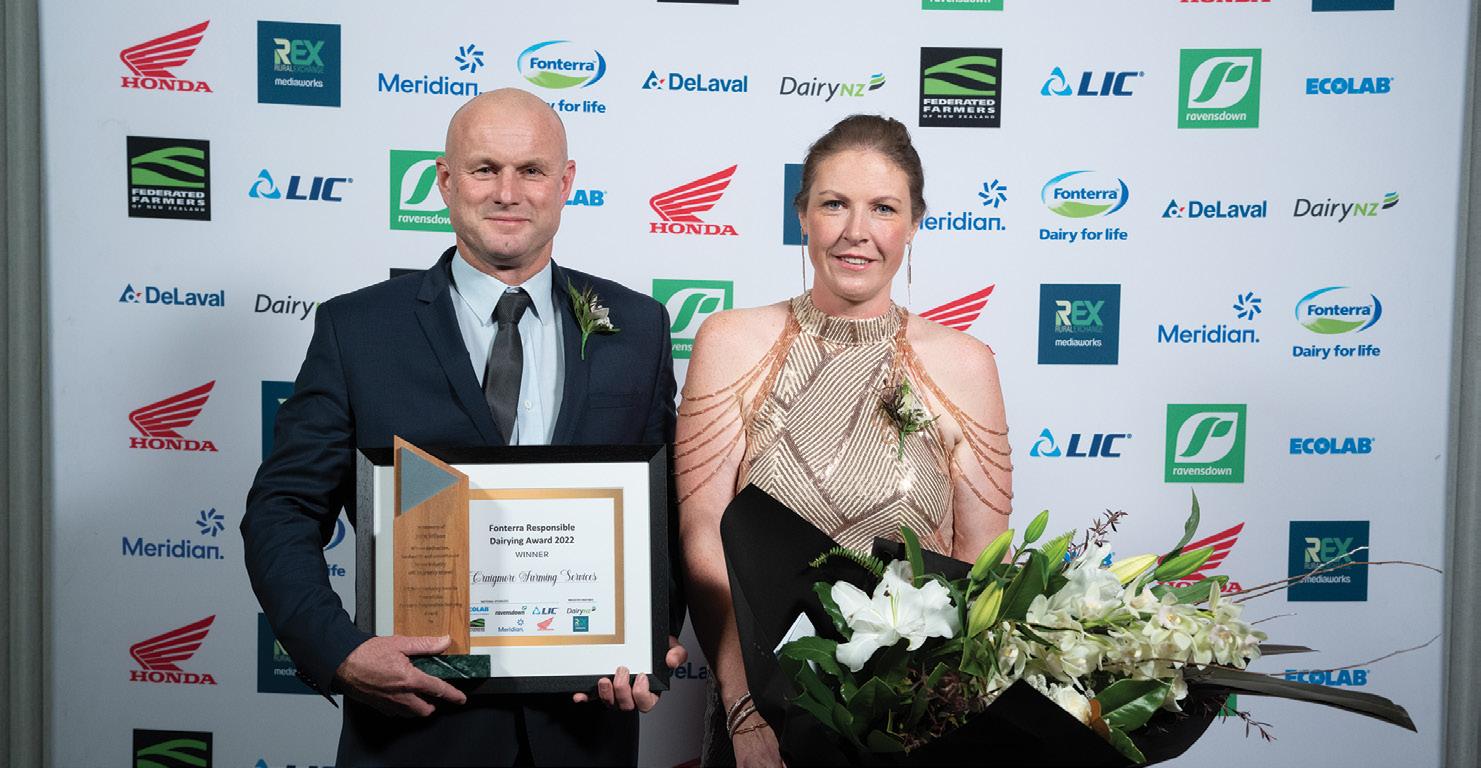
“It’s gone well. The farm sits in between a two- and three-person operation so we wanted to see what the capability of the technology is,” Stuart says.
It’s given the farm team stability knowing the farm can be operated with just one person if needed.
“In the past Matt’s run one herd but he can now run two – it’s easier to draft cows in the paddock, to back fence and have greater control over pasture allocations and management - be more precise.”
He’s using it over winter for managing herds and break-feeding and the team is looking forward to seeing what they can do in spring – being able to manage different herds and draft out cows in the paddock.
“You don’t have people out with reels and standards putting up and moving fences.
You cut down the time people are on motorbikes either out in paddocks or getting cows in so there’s that big time saving but also the health and safety aspect,” Stuart says.
While they’ve already seen significant time-saving benefits from the Halter system, they haven’t reduced permanent staff numbers on the farm.
“You don’t want the technology to fail because you didn’t have the people on the ground while you’re in the learning phase. You want to be able to get the best out of it.
“In the end it may be that it’s not about replacing people with the system but enhancing the people you have, giving them the opportunity to do their job better and getting productivity results from that.
“Every situation and farm will be different, so you need to do a business case for each,” he says.
The company is also trialling SmaXtec
bolus technology on a 900-cow farm also at Culverden. The bolus is delivered into the reticulum of the cow and monitors a range of data including internal body temperature, rumination, activity, pH and water intake.
The technology is providing animal health reports and alerts and heat detection, helping the farm team be proactive with early detection of health issues such as mastitis, lameness and milk fever and reducing the time spent overall on treating and managing sick animals.
“It’s meant the manager on that farm has been able to go to no bulls onfarm, relying instead on the technology for heat detection over a 10-week AI period.
“It’s been a massive benefit to him in not having to be on the mating stand every morning, no need to tail paint cows,” Caroline says.
That’s given him time to be focusing on other important management decisions over that time, freeing him up but also helping reduce fatigue.
Labour saving is often thought of as reducing the need for lower-skilled staff but big productivity gains can be made by senior staff and managers with more time to focus on factors such as planning, feed management, people and managing the business.
Moving to a 10 milkings in seven days milking regime (10 in 7) has proven itself on several farms this season, helping to ease pressure on staff, particularly on farms where there are issues such as longer walks for cows or
If you can do the small, safe to fail trials – trying different things on a part of your farm, with one herd or for part of the season – that allows you to get comfortable and gain some knowledge and experience with it.
- Stuart TaylorStuart Taylor and Caroline Amyes from Craigmore Farming with the John Wilson Memorial Trophy presented as part of the Fonterra Responsible Dairying Award.
the farm dairy is slightly small for the number of cows or where irrigation has been more labour intensive.
Stuart says about half of Craigmore’s farms have used 10 in 7 for at least part of the season over the last few seasons.
“We have farms using once-a-day milking up till the end of mating and then going 10 in 7 and others just using it from after mating so it’s a flexible tool we can use depending on a farm’s particular situation and what the farm teams want.”
In the initial trial it took a little time to get feed allocation right given the varying milking intervals through the week but that was worked through.
“Going to 10 in 7 at the back end of the season doesn’t have such an influence on milk production and we’re seeing improvements in cow condition and reproduction.
“That will have a cumulative effect so I’d say that, like a number of new
techniques and technologies you shouldn’t be too quick to make an assessment on one season alone or one part-season.”
Caroline says the company has had a focus too on building leadership skills in its farm teams and that in itself can be a
Left: Making more time for the important things – Stuart Taylor, rear, discussing farm plans with, from left Rico Lim, Matt Redmond and Amelia Ingell.
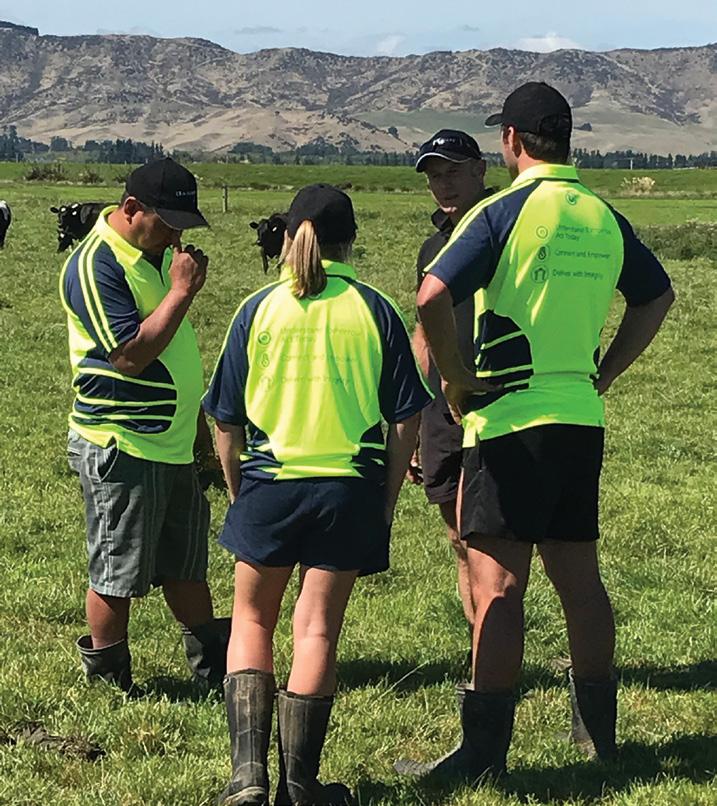
labour-saving tool enabling teams to get the job done more effectively and efficiently in an enjoyable way.

“Overall, it’s about just doing what you can when it comes to making changes that will improve sustainability.
“You don’t have to go big straight away. Understand your drivers and purpose and make the changes in areas you’re interested in first.
“Some things don’t take any capital at all but can create change for the better,” Stuart says.
“We understand New Zealand farmers are facing a lot of change and pressure.

“As an individual you can’t solve it all. So focus on one area that lights your fire, be the best at that, and then don’t be afraid to share your success.”
Now even inexperienced staff can make informed decisions using data collected around the clock, 24/7.
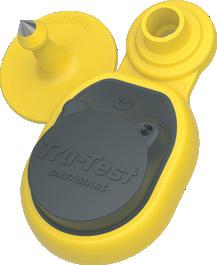
Receive accurate, timely updates on your cows’ reproductive status. Reduce instances of silent heats and heat detection fatigue.
Receive alerts about changes in behaviour that signal a potential health concern, often before the cow presents with any visual signs of illness.
“The collars were picking up on heats that even with my trained eye, I’d never have picked up.”
The extra eyes and brains you’ve always wished you had around the farm.
The ability to do away with reels and standards and fence cows “virtually” as well as get cows to and from milking on their own could save a 520-cow farm like the Lincoln University Dairy Farm (LUDF) 38.5 hours a week during the milking season.
Halter business development executive
Theo Beaumont outlined how the new technology works at a recent LUDF focus day and while LUDF doesn’t have the solar-powered, smart-collar technology a desktop exercise for the farm estimates possible time savings across several activities could be significant.
In addition to the 38.5 hours per week saved on not moving and fencing cows through the milking season it could also allow:
• 21 hours per week to be saved on moving break fences in the winter.
• 17.5 hours per week saved during calving.
• Seven hours per week to be saved not having to tail paint cows due to heat detection abilities.
• Seven hours per week saved on detecting heats.
• 4.2 hours per week saved on drafting AB cows.
The Halter system enables farmers to set up virtual fences with the solar-
powered GPS locator system identifying where cows are relative to that “fence.”
As the cow approaches the fence it receives cues from the collars as sound and vibration with sounds getting louder and more frequent the closer the cow gets.
Training over a six-to-seven-day period gets the cows familiar with what the vibration and sounds mean and initially an electrical pulse signals to the cow it’s reached the fence.
While a cow will receive a visual cue from a typical electrified tape break fence or the wire on a permanent fence, the virtual fence gives its cues through sound and vibration.
The consequences of not heeding those cues in each case is the same although once through the initial few days of training, the Halter system will use sound and vibration to guide a cow back through the virtual fence if they’ve breached it rather than a pulse.
The ability to “draw a line” on a map in the app on your smart phone means the virtual fence can be shifted without people having to go into the paddock.
Breaks can be adjusted and shifted any time and can even be pre-set to occur over future hours or days.
Halter’s cowgorithm (their patented sophisticated set of algorithms ) guides cows around – asking them to move left or right or forward – means there’s no need to physically get cows out of a paddock and bring them to milking.

Cows can be trained to turn right when they hear the sound from their left side and will turn left if the cues come from their right side.
The Halter business model involves the farmer leasing the hardware – the collar and physical smart technology components – and paying a subscription for the software modules accessed via an app.
That software can be updated, just as smart phones are updated, so there’s no need to be removing hardware from the cows.
Currently the company is rolling out the ability to draft individual cows or groups from the herd while the cows are still in the paddock.
Individuals are directed away from the main herd and can then be brought back to the yard or sent to another area of the farm. LED lights on the collar light up to make those selected cows more visible.
The system can also “passively” draft cows – switching the collar on a specific cow into “neutral“ so a calving cow, for instance, could have access to the whole paddock area rather than an area virtually fenced for springers.
As well as the ability to manage cow movements a raft of other farm management efficiencies are available such as heat detection, rumination insights and pasture management with environmental monitoring now on the company’s radar.
Halter’s head of business development Steve Crowhurst says the company has found the time savings on farms using the technology are substantial.

“I’m pretty confident we really have the answer to labour shortages we’re seeing onfarm today.
“So often farmers are compromising in terms of what jobs they can get done onfarm in the time they have available and what we’re seeing is that this technology is removing that need to
choose between one job and another or having to compromise on the jobs they are getting done.
“What we’re seeing is that it’s opening up more options on how farmers can operate.”
At LUDF, for instance, the farm team is establishing pure plantain paddocks and grazing cows on them for short periods through each day in an effort to get the nitrogen leaching reduction benefits plantain can give.
“But shifting cows on and off all takes time. Halter can do that for them so they can get their 9kg N/ha leaching reductions without any additional pressure on staff time at all,” Steve says.
The monitoring device on the collar measures the 3D movements of the cow and the strength of those movements.
From those measures powerful data analysis and algorithms can distinguish the animal’s behaviours such as rumination, grazing, standing, lying and walking and from that data it can provide heat detection and health alerts.
There’s no need to tail paint cows
or have anyone standing in the farm dairy each morning picking cows for insemination. There’s also time to be saved by acting early when it comes to health alerts. Along with time savings the system also offers some significant opportunities to improve efficiency and productivity gains Steve says.
The ability to include pasture growth and cover information for instance means that as virtual fences are set up the app can give the farmer information on how much feed on a per cow basis is being allocated.
“That knowledge – the ability to get more precision with feeding and allocation, the ability to back fence cows easily and move cows so easily to the next break all drive pasture utilisation and that’s the big driver of productivity and profitability.

“Halter is an investment where farmers can reduce costs but they can also unlock new value opportunities with operational efficiencies.”
The farmer feedback loop is an integral part of Halter’s strategy.
It means top farmers feeding back information and working with some of the country’s leading minds when it comes to data, software and firmware development, Steve says.
“We’re constantly looking at how we help farmers achieve their longterm goals, how we provide them with a robust system for the future and keep on improving and updating that – that’s why this technology is so transformational.”
So often farmers are compromising in terms of what jobs they can get done onfarm in the time they have available and what we’re seeing is that this technology is removing that need to choose between one job and another or having to compromise on the jobs they are getting done.
In the 2020/21 season Lincoln University Dairy Farm (LUDF) operated with four full-time staff and ran an eight-on two-off, eight-on threeoff roster.
This past season the farm’s had just three staff and has run a five-on two-off roster with staff working 38-45 hour weeks for most of the year.
The difference – a 10-in-7 milking regime.
That’s 10 milkings in seven days rather than the traditional twice-a-day (2AD) milking.
For LUDF it means once-a-day (OAD) milking at the weekends as well as Tuesday and Thursday with 2AD milkings on Monday, Wednesday and Friday.
The benefits of using the regime on the farm this year have been greatest by far for the team.
They shared their thoughts on the system in a webinar hosted on LUDF’s FaceBook page and website with the farm’s manager also giving an overview of how it all went at the farm’s latest focus day held in May. LUDF 2IC Cody Mulligan says at his previous job he worked 12-on and two-off – he has two young children.
That kind of roster coupled with the hours he’s worked in the past were tough on family life.
“This is better on the body and the mind,” he says.
His two days off, in LUDF’s fiveon two-off roster, are Sunday and Monday.
“I get to pick up the kids from school and go to after-school sports.”
The milking regime means he gets more sleep and it reduces fatigue.
For any farm teams considering
doing 10-in-7 after Christmas he says the benefits include allowing people to get away for their annual leave.
“This year was the first time I’ve been able to take two weeks off in a row,” he says.
It’s also meant that when farm manager Peter Hancox is away, Cody has more time to plan and prepare or carry out maintenance.
Georgia Berg has worked on farms with typical 2AD milking programmes and worked rosters such as 11-on threeoff and nine-on three-off.
LUDF’s system is hugely different, she says, and so much better for wellbeing.
It’s meant you’re more rested and that makes you more productive, allowing you to get more done in the fewer hours you’re at work, she says. Being fresher means being more alert and instead of just trying to get through milking it means you can be more engaged – picking up cows sooner where something’s amiss, for instance. It also means that instead of just working and sleeping on your days on you have energy to do other things – even mundane chores like cleaning the house or doing the washing, that would otherwise have to wait till your
Lincoln University Dairy Farm’s switch to 10-in-7 milking means fewer staff and a better work/life balance. Anne Lee reports.
days off. That way when your two days off come you can actually have days off to do what you want to.
Peter says it was the people not the cows who had to adapt the most at the start of the season and it took a bit of time to get into a good routine.
“We had to get our heads around how to manage our day.
“When you’re milking 2AD you milk in the dark in the morning and then have the daylight and time till the next milking to get things done.
“On our OAD days we have cups on at 9.30 in the morning so we had to adjust how we worked around that.
“At the start of the season there was just Cody and me with casuals, our heifers had come home early and it was a wet start to the season.
“We have three of us full-time now and now we’ve worked out good routines, I think this coming spring should be easier,” he says.
Because of the varying morning milking times – 5.00am, 9.30am, 8.00am and 11am, they decided to make their set calf feeding time about 10.30 or 11am.
It meant buying milk warmers to keep the early morning milk warm for the latemorning feed.
They found cows took longer to milk at the 5.00am Monday morning milking because the long milking interval of 21.5 hours meant cows were full of milk.
There were also some issues in spring keeping cups on cows where udders were full and tight with the longer milking intervals – particularly heifers.

“We needed to have people in the shed dealing with that for a while – but it came right.”
Cows were keen to get to milking so cow flow was great and further time savings came from using a BattLatch on gates earlier in the season to automatically let cows out of the paddock before milkings.
It meant the team could turn up to the farm dairy and the cows were there waiting for them.
Initially they saw a lower incidence of lameness with cows doing less walking, also saving time treating or managing animals. Peter says OAD over the weekends had a positive effect on the team, especially over the busy spring period. The regime meant hours worked were kept down to about 50 hours a week through the peak spring period and Peter expects pressure will be less this coming spring.
LUDF milking times - 10 in 7
MONDAY 5.00am & 2.30pm
TUESDAY 9.30am
WEDNESDAY 5.00am & 2.30pm
THURSDAY 9.30am
FRIDAY 5.00am & 2.30pm
SATURDAY 11.00am
SUNDAY 8.00am

The varying morning milking times didn’t cause problems for staff or the AI technician over mating with arrangements made early for the AI tech to come to LUDF at the start of their run on the 2AD milking days and at the end of their run on other days.
The expected benefits for the cows though didn’t shine through the whole season, likely due to the dampening seasonal effects of a wet spring and then a wet December.
Cow condition did hang on longer after calving but the lack of growth and energy in the pasture became a factor as they went into mating.
He had hoped to see benefits in a lower incidence of lameness and mastitis along with improvements in reproductive performance with less walking for cows allowing for improved body condition.
But they didn’t tick those boxes and Peter says he’s “pretty gutted about that”.
December brought 80mm of rain and the incidence of lameness spiked even though cows were walking less. It may have been worse under a TAD system.
The incidence of mastitis was also higher this year than previous years adding to workload.
Peter says they didn’t alter grazing management markedly with cows still offered 24-hour breaks.
“If we were allocating feed based on the time between milkings we’d have bits and pieces left in paddocks,” he says.
That would have meant more frequent shifting of cows and complicated the system.
Breaks were shifted about 4.30pm each day but one significant change to previous years is that the new paddock wasn’t necessarily the one with the highest cover.
“One of the big benefits of 10-in-7 is less walking for the cows so if the next paddock on the feed wedge (next highest cover) was further away than the second highest one we’d go to the second one.
“It’s all done within reason so if there was only one or two paddocks difference, we’d stick to the highest.”
Fewer milkings doesn’t mean feeding the cows less though, and it’s important that cows are still fed well if a drop in milk production due to fewer milkings is to be minimised.
The farm finished the season about 8% down on production with about 3% of that likely from seasonal effects.
Anecdotally milk production in Canterbury has been back by 3-4%.
It is a requirement to have your milking machine tested annually by a MPTA Registered Tester. Refer NZCPI: Design & Operation of Farm Dairies - Code of Practice (Page 48).

Check that your Tester is on the list and book your test now with a Registered Milking Machine Tester listed at www.nzmpta.co.nz

In addition, DairyNZ studies have found farmers shifting to 10-in-7 for the whole season might expect a drop in production of about 5%. •
videos/5034045276618104


‘We have three of us full-time now and now we’ve worked out good routines, I think this coming spring should be easier.’
IT’S TIME TO GET YOUR MILKING MACHINE TESTED
Milking machines that perform at full capacity maximize profitability and minimize risks for your herd.
Machinery isone of the most expensive and by far the most vital piece of equipment on your farm, which is why it is
crucial to ensure it is always working at its best.

What if you had a simple way to get yourself an extra half an hour in bed each morning?


Logan Bowler and Cathy Craw use a programmable Batt-Latch to do just that.
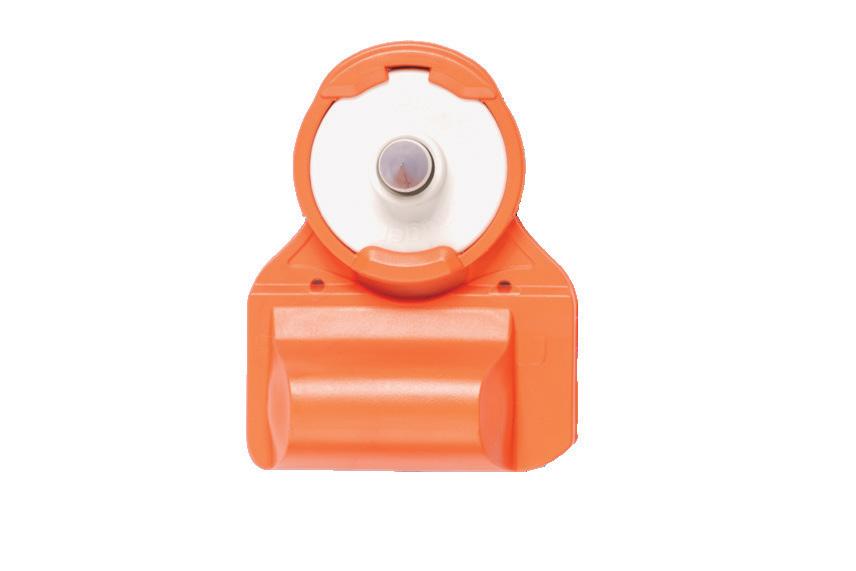
When Cathy gets up she heads straight to the cow shed and starts cupping cows on their Marton dairy farm because their Batt-latch gate release timer is programmed to release the gate at the same time as the couple’s alarm goes and the cows bring themselves up to the shed.

Any laggards are fetched by Logan once the first ones are milking, but allowing them to take their time means the system is great for preventing lame
cows. The couple say they use the device up to four times each day in the summer supplement season - holding some of the cows up after the milking to allow them all to get a fair crack at the turnip crop as well as for the two milkings.
Even the dry cows get used to shifting themselves and Cathy says new users would be advised to start using it at the start of the season, the cows quickly get used to it and love the routine.
“We wouldn’t be without it, although I would love to upgrade to the new model that you can control from your phone - that would be great on a rainy night to get them off the paddock to stop pugging,” Cathy says.
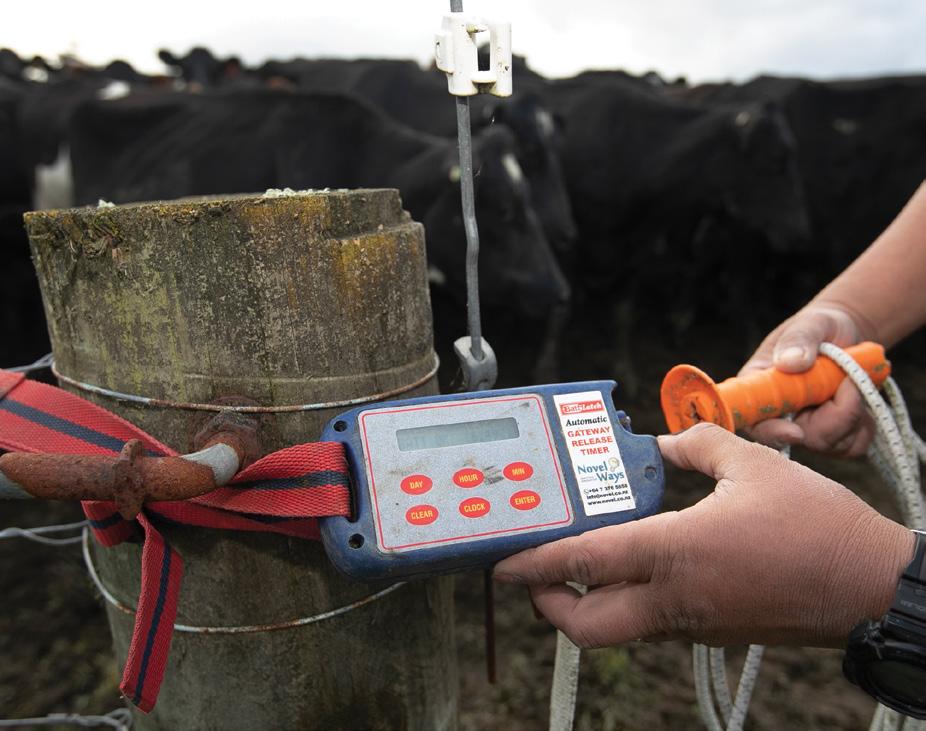
We wouldn’t be without it, although I would love to upgrade to the new model that you can control from your phone - that would be great on a rainy night to get them off the paddock to stop pugging.
Treating staff well is important for the Marshalls of Rongotea, so it was a relief for them when they found a payroll system that worked for them. Jackie Harrigan reports.
Virginia and Kyle Marshall have been working two sharemilking jobs side by side on opposite sides of the road at Rongotea in the Manawatu for the past 16 years, and while the situation gets complicated, the couple have found plenty of strategies to simplify the operations and save time and labour.
The cow sheds on either side of the 139-hectare property are both small and old but the couple have invested in good genetics and run a high BW crossbred herd and target 150,000kg milksolids (MS) each season.
Virginia is a seventh generation Rongotea farmer and laughs at the irony of the fact that her sawmilling great great great grandfather cut down all the trees in the district and she says her goal is to replace some of them!
The couple have had very long term staff and understand the importance of treating them well.
“One of our staff members was with us
for 10 years and another recently moved on after 14 years.”
They put a lot of emphasis on making systems and processes run well for their staff - saving work and saving time and in the process enhancing their mental health. A couple of years ago Virginia felt she was struggling to keep up with changes in the HR space in regards to their team members, and says she realised the changes would not stop.
“Time to outsource it, I thought.
“Up until then I did it all manually and by gut instinct but it was getting more and more complex.
“Who would’ve thought that every week was not seven days long - there were lots of things changing and I thought as business owners we really needed to be more professional.
“I didn’t have the time or the inclination to keep up with all the legalities and changes to the minimum wage, new leave entitlements, new public

holidays… the rules and regulations were ever increasing and I didn’t have the time or the capacity or interest to keep up,” she confesses.
“I also felt like I was flying by the seat of my pants and was well out of my depth - so it was a relief to find a helper that made it all easy and who I could trust was doing it properly.”
She was pretty impressed with the comprehensiveness of the payroll programme she first found - it was comprehensive, the language really resonated with her and the website had a great understanding and knowledge of the agri industry.
All of the maths, regulations and the compliance involved in paying team members is hidden in the back end of the PaySauce programme and Virginia says it was simple to set up, especially with the help of the “excellent” Help Desk.
“We pay for the service per pay run and it only takes five minutes every
pay run - which is fortnightly for us - it used to take a lot longer when I was doing it manually.”
Along with saving time, Virginia says the reassurance she gets from knowing the team are being paid fairly, promptly and compliantly is definitely worth the cost.
“Our staff are incredibly important - and we know that if we look after them, then they will be happy and look after us.”
Virginia can’t believe how much time she and husband Kyle used to spend writing cheques, stuffing envelopes, licking stamps when paying the bills at the start of their sharemilking business.
“Now we use internet banking and Farm Focus, and it’s a huge time saver.
“From paying invoices online through to confirming the pre populated fields and the automated coding when doing our GST, online accounting packages are a huge time saver.”

Once-A -Day milking is one of the strategies Kyle thought was a great time saver and labour saver on one half of their farm. Geographically split by a road, the couple run two operations, but cows used to be arbitrarily in the early calving mob or later calvers.

But when they decided to go OAD with their smaller herd of 160 cows, the couple called upon the LIC production OAD index to give
them a steer on which cows would better suit the milking regime.
“We found 168 cows that were more suitedincluding the two-year heifers - and went cold turkey with a new worker at the start of the season.
“OAD just gives us so much flexibility, a couple of hours each afternoon are freed up to do other things and it means heaps to our new worker - he has full custody of his two grandchildren, with OAD he can milk at 9am when he has put them on the school bus in the morning. It means heaps to him and his ability to work and also for his mental health.”
Kyle says the cow condition is up by 0.5 of a BCS and so they are milking the herd longer this season. Despite milking OAD, the two herds are on track to produce their second best ever milk production - although he concedes the OAD herd is down and the TAD herd is up.
Inspired by friends extolling the virtues of the OAD system, Virginia says while the shed costs are down and less effluent is being created at the shed, the real win for them is in mental health for the team.
The couple list other time and labour saving tools as the MINDA APP. “I can check cows records from my phone down at the shed” and the Fonterra APP “great to be notified of grades and be informed on when the tanker is coming so we don’t waste time waiting for it.”
I also felt like I was flying by the seat of my pants and was well out of my depth - so it was a relief to find a helper that made it all easy and who I could trust was doing it properly
“ “Virginia and Kyle Marshall.
It’s easy enough to run your eye over a paddock and get a reasonable handle on how pasture growth is going. But it’s not always easy to see why one part of the farm is high-yielding compared to another part, or why some paddocks struggle in the summer heat while others don’t. Electromagnetic surveying (EM) is a good way to find out, and usually only needs doing once.

The gadget which looks a bit like an enclosed drainage pipe is pulled behind a quad or mule and sends microwaves into the soil which reacts with different amounts of water in the soil and the clay content. Coarse soil texture like sand has low electrical conductivity, clay soils high, and silt soils medium conductivity.
Business manager with agri-tech company Vantage Phil Neill says the technology is especially good for areas with high soil variability like Canterbury. It also shines in this area as there is also high density farming and water allocation for irrigation. EM surveying is one of the services the company offers.
“We can work out what the water capacity of the various soils are on the property. This will help if different parts of the farm need more irrigation than others and help farmers use allocations more wisely.”
The same applies to fertiliser although it’s not quite as straightforward, he says. While some areas will need more fertiliser, some will need less but for different reasons.
“If an area is more stony, fertiliser will likely leach faster. If there are no stones you can put more on and know it’s likely to stay there longer. That’s important with nitrogen caps,” he says.
“With 2.5cm accuracy, you get altitude and aspect as well, and potentially can show runoff – if it wasn’t obvious,” Phil says.
Armin Werner, Group Manager Precision Agriculture Science at Lincoln University’s Agritech agrees the technology has significant benefits.
He also considers getting an EM survey done on any new farm purchase is important.
It’s good for dairy farm investment when buying a farm to find out the hot spots in the farm that are low yielding or high yielding, he says.
“Assessing the pasture growth, especially to create the sequence of to be grazed paddocks - with the ‘feed wedge’ concept - is an utterly important prerequisite for profitable and sustainable dairy production.”
This also gives a new owner the ability
to spread their investment load - ‘can I leave some areas without investing in irrigation there this year’, he says.
He considers it a useful tool even for an established dairy farm.
When taking over the family farm, for example, a lot of the knowledge parents have about the performance of certain areas around the farm isn’t written down.
Rather it is an accumulation of knowledge over the years and stored in their heads. This can see them almost farming intuitively.
It could take years for the next generation to get to that point, and without knowing why parts of the farm behave the way they do.
Looking at diversifying into mixed farming – cropping or arable farming like seed production – it is wise to know what’s under your feet, and especially important for starting a new on-farm venture like vineyards or orcharding, he says.
Until EM surveying came along soils samples had to be taken and a soil map of sorts made up from those.
“It was expensive and not very accurate,” Werner says. ”Almost no other tool for the price can give that information – it’s very useful.”
Understanding soil conductivity saves labour and money in the long term. Delwyn Dickey reports.
differences in density and coverage can easily be related to yield. Dry Matter is easy to see with NVDI.
While it can also be used in places like orchards, that’s more challenging as it doesn’t relate to yield, rather growth. In apple orchards, for instance, big robust trees don’t give the highest yields as too much effort goes into new growth rather than producing fruit.
NDVI uses two wavelengths of the electromagnetic spectrum of which visible light is a part. The red part of the visible light spectrum is correlated to the ground and biomass. Infrared light sits close to visible light on the spectrum, and the lower areas of near-infrared light gives a correlation to the amount of water in the plant.
companies have produced computer modelling, though they are not as accurate. For his part Werner believes satellites are the future of farming in NZ but satellites need to move beyond visual imagery – to ‘see’ through the clouds, he says.
Werner is not alone in his thinking.
Lincoln’s Agritech is looking at developing a combined tool of NDVItype assessment with optical sensors from satellites with microwaves/radar that can ‘look’ through clouds.
Satellite cameras have been around for 60 years, as long as satellites, and have become much more sensitive over time. They can also now capture images with much higher resolution –down to less than 30cm. This enables them to calculate the amount of standing biomass to a very high degree.

Satellite technology has come a long way in 60 years and can now capture images with much higher resolution
By Delwyn DickeyNDVI (normalised differential vegetation index) mapping looks at the plants on the land and is a service offered to farmers using satellite technology. Values are between 0 and 1.
LIC in New Zealand offers this service through SPACE, with Pasture.io - based in Australia also covering New Zealand, along with DCAT in the United Kingdom.
The technology was originally developed for arable crops like wheat and barley, says Armin Werner, Group Manager Precision Agriculture Science at Lincoln University, and is ideal for pasture and grass where
Making sense of the data is where the companies selling NDVI services come into it. Different parts of the country will have different calculations attached to them to come up with the correct amount of dry mass – garnered from years of manual data and other measurements. They also have different calculations for different countries - Australian pasture compared to New Zealand pasture for instance.
But it’s not just pasture differences that count.
Twenty years ago Australia and NZ developed a programme ‘Pasture from Space’ which is still used today in Australia. NZ has too much cloud cover for the programme to be useful and it is no longer used here.
Cloud cover is the bane of NDVI as it can leave gaps in the data.
“Dairy farmers want to know the 7-10 days amount of biomass to prepare their feed wedges. Knowing which paddock is ready first is an important part of management. But cloud cover can leave you with no data for a couple of weeks or more,” Werner says.
To compensate for these gaps the
Under the leadership of remote sensing specialist Dr Francelino Rodrigues and radar specialist Yiwen Zhou, they have set up a consortium and designed a research programme for this, and plan to approach the Ministry of Business, Innovation and Employment (MBIE) for an Endeavour grant to get this new research underway. While it’s likely it would take five or so years to develop, it would overcome challenges around hilly areas, and be of use for sheep and beef farmers, Werner says.
Satellites aren’t the only way to measure pasture growth.
Some farmers do tried and true eyeballing, or grass height on the gumboots, while others use rising plate meters.
Relatively new to the market is Farmote which measures density across a paddock from a single spot, as can the Grass Master Pro.
Then there are the faster options which can be towed behind quads like Pasture Meters from C-Dax.
“All of these sensors have their strengths and weaknesses,” Werner advises. “As long as they are used properly and well-calibrated to the manufacturer’s specifications they deliver comparable and good data.”
Senior Scientist with DairyNZ Callum Eastwood recommends farmers discuss farming tools with their neighbours, and farm groups before investing in them to find which best suits their needs and which products are most durable.
“Unfortunately we don’t have an independent research group like Consumer for farmers.”
Ten years ago Murray and Tanya Frost’s new farm on the edge of the Marlborough Sounds had no power to the paddocks, no water systems, a tiny overflowing effluent pond and was covered in browntop and rushes.
Today it is a different farm and they have won an environmental award for their efforts.
Turning around a non-compliant dairy farm won them the farming category at the Cawthron Marlborough Environmental Awards, winning praise from the judges for embracing compliance standards and going beyond requirements, while building up herd numbers and production.
They were looking for a new challenge to sink their teeth into when they bought the farm, having bought their first dairy farm on the West Coast when it was in its developing stages and flipping pakihi soils.
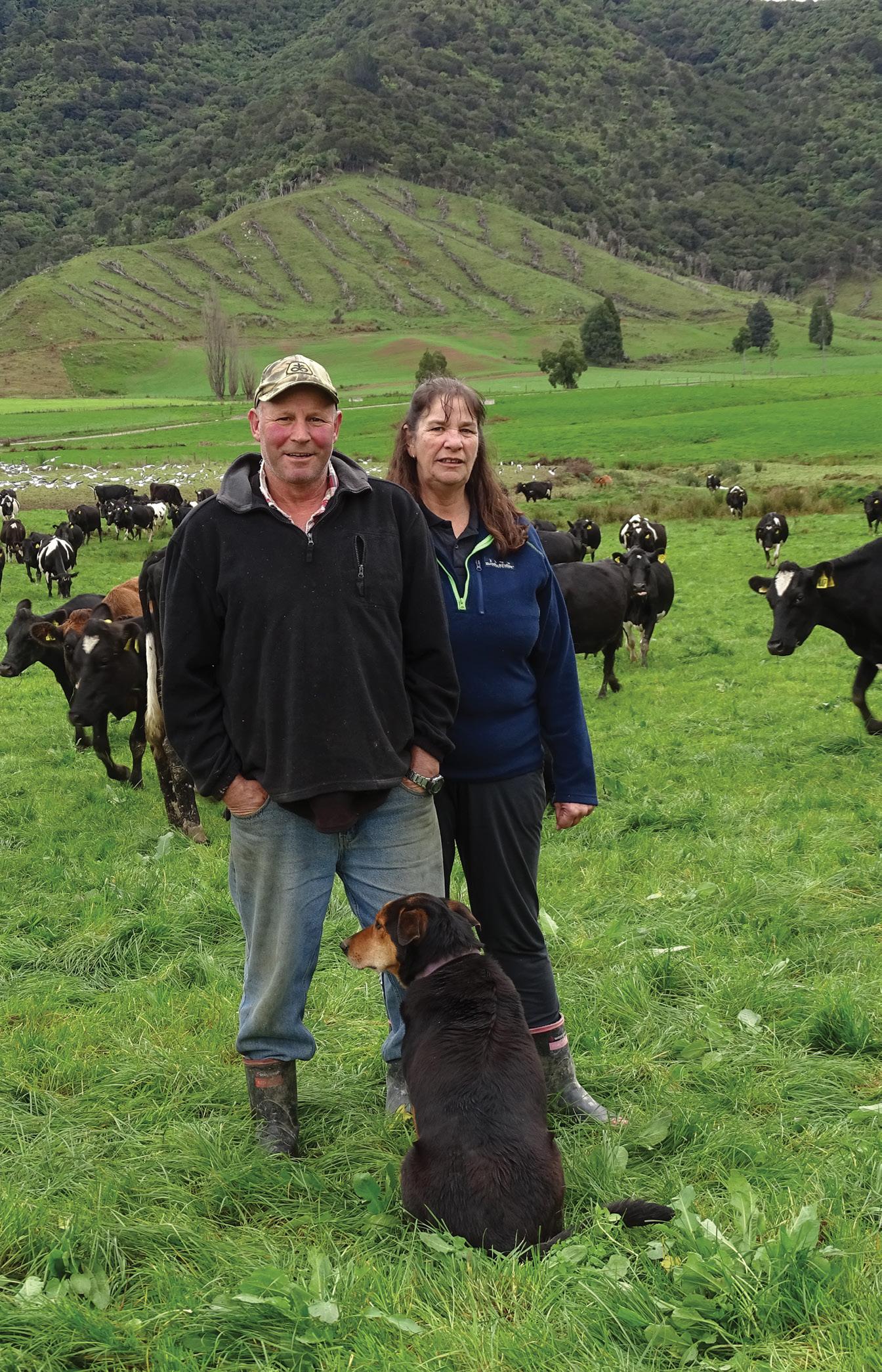
They found a dilapidated dairy farm at Linkwater, nudging on to the edge the Mahakipawa Arm of Pelorus Sound and flanked by steep bush-clad hills.
Mt Oliver, as it is known, only had power up one side of the laneway and the back of the farm was barbed wire and netting. Cows drank from streams or the few troughs that filled slowly from streams.
Gorse flanked the streams, while rushes covered the paddocks. A travelling irrigator didn’t make its way successfully across the paddocks because of the rushes and rough ground. The lack of stormwater diversion from the dairy to the effluent pond meant it quickly overflowed to the stream. Fonterra deemed the farm a new conversion.
The 220-cow herd on the 263 hectares was averaging 77,000kg milksolids (MS) and running a few beef cattle on rougher hill country, while scrub covered a chunk of the farm.
Murray and Tanya now milk 450 cows on a 160ha milking platform, producing about 180,000kg MS and they have a goal of reaching 200,000kg MS next season. Plus, they run 110 calves and 30 drystock on the property. The rougher hill country has been improved and they have recently cleared the remaining 20ha of scrub to develop into pasture.
Their first priority on the farm was simply adding an earth for the electric fences and getting power to all the paddocks to stop the cows wandering.
Next was adding a storm water diversion from
Turning around a tired, neglected farm in the Marlborough Sounds has earned Murray and Tanya Frost award recognition. By Anne Hardie.
FARM FACTS
• Owners: Murray and Tanya Frost
• Location: Linkwater, Marlborough
• Farm: 263ha including 160ha milking platform

• Runoff: 44ha at Kaiuma Bay
• Herd: 450 Friesian-cross cows
• Production: 180,000kg MS
• Winter crops for cows on farm: kale, swede, rape. Early calvers green-feed oats.
• Summer crops: Turnips, chicory
• Nitrogen: 160kg N/ha/year across farm
• Latest improvement: Dung beetles
the dairy so it didn’t enter the effluent pond. During the next two years they installed three water systems for stock, the dairy and the house. For the stock that meant buying and installing 60 troughs around the farm and putting in 5km of pipe.
As the water systems went in, they fenced off waterways and began planting with plants grown by father, Rex. Recycled vineyard posts have been used to fence
waterways and there is no shortage of them in Marlborough. Numerous culverts have been added, even before regulations required them and Murray says it was simply good management practice as well as being better environmentally.
It hasn’t all been straightforward in their bid to build production.
After buying 79,500 Fonterra shares with the farm, they could only buy more as their income increased. But they could only increase income with more shares to increase production. It slowed the development of the farm, though they have still been able to make staggering change.
A third house was built for their second full-time employee, the dairy expanded from a 24-aside herringbone to 40-aside and the yard extended for a second time in 10 years to hold 500 cows.
The effluent system had a major upgrade three years ago to become a plastic-lined, 2.6 million litre pond that provides 75 days of storage. Effluent passes through a GA
Slope Screen solid separator and the pond has had a stirrer added just recently.
All up, it is a $200,000 investment that more than caters for the size of the herd and can now be spread over 70ha of the farm via K-line which also irrigates from a 22m bore. From October they direct the stormwater into the pond because they have the capacity. It not only provides more irrigation for Marlborough’s typically dry summer period, but also reduces the amount of nitrogen applied to those paddocks.
This year they applied just 160kg N/ha/ year across the farm and that was even after a major flood last July that held grass growth back. The scale of the effluent pond proved its worth during the flood as they still had the capacity to store effluent until September when the ground was dry enough to distribute it over paddocks.
The flood has been a speed bump for the farm. It brought forestry slash down across
‘We always reckoned we were getting a lot of our lameness because the cows were pushing and shoving around the troughs.’Left: Caption: Murray and Tanya Frost have made a dilapidated farm productive and won an environmental award. Above: The herd grazes on paddocks that were covered in rushes and browntop.
paddocks and left silt in its wake. But the biggest problem was damage to the roads. Nearly a year after the flood, the narrow winding road between Linkwater and Havelock is cluttered with lights as repairs continue. Trucks for fertiliser, stock and just about anything connected with farming need permits and a pilot vehicle to negotiate the road.
The Frosts own a 44ha runoff the other side of Havelock near Kaiuma Bay where the calves go at the beginning of July and in-calf heifers return home. It usually takes about 20 minutes to drive there and check stock, but for a couple of months they had to drive in the other direction to Picton to get there which was a 6.5-hour trip one way. Every second week the tide was right for them to take the boat from Mahau Sound to the runoff which saved them hours.
Fences were a casualty on the runoff in the flood, so half the heifers were sent to a grazier near Seddon and this winter they sent 100 cows as well.

That is aimed at reducing pasture damage, growing more grass for spring and hopefully using even less nitrogen. Part of their plan is to find another runoff so they can winter most of the herd off the milking platform and reduce the amount of crop they grow. But that second runoff has been elusive.
This winter they have 4ha of kale planted which is 5ha less than last year due to fewer cows, plus 2ha of swede and 2ha of rape which are the same as last year. Three hectares of oats have also been planted to feed early calvers in spring. Because they need winter crops to feed the cows on the farm, they buy straw to top the cows up toward the end of the season because those paddocks are out of the round.
For summer, they grow 6ha of turnips and 3ha of chicory for the dry. In the past the chicory crop has been hit hard by large numbers of Paradise ducks which prompted them to try raphno for a while. But the raphno bulb broke up too easily under cows’ hooves and it was expensive to grow so they have returned to chicory with the help of duck shooters.
Even with irrigation to 70ha and summer crops, they still switch from

twice-a-day milking to 3in2 for summer, depending on the season, then once-a-day at the beginning of May to build condition on the cows. When they switch to 3in2 milking, they milk 5am and 5pm one day and then 10am the second day. As daylight saving finishes, they change that to 5am and 3pm the first day followed by 10am the second day. That way, everyone is home in daylight at the end of the day.
Regrassing and pasture have massively improved production. In the past decade they have disced and regrassed the entire farm at least once and now have their own air seeder so they can top up the paddocks with a mix of ryegrass, clover, chicory and plantain.
Pasture is benefiting from improved fertility in the soil which gets good doses
of local mussel shell lime for calcium and magnesium as well as dolomite. In the early days the soil’s pH was about 5.5, but now it is between six and seven while Olsen P is in its mid-30s. They have carried out all-farm soil testing in the past and this year they will repeat that to make sure it stays on track.
Another change in feed has happened in the dairy, with a meal-feeding system installed last winter. That is aimed at decreasing palm kernel and enables them to feed blends of feed that can be varied as nutrition and costs dictate. This past season they fed dairy pellets in the dairy and dropped 100 tonnes of palm kernel.
“It also means every cow is getting fed and we have less lame cows now,” Murray says. “We always reckoned we were getting
a lot of our lameness because the cows were pushing and shoving around the troughs.”
In the future they will consider barley, meal or whatever is cost effective at the time and the in-shed feeding also provides the opportunity to get minerals into all the cows.

Two years ago they decided they wanted to make less balage because of the plastic wrap, the cost and also the round shape that made it harder to cart to the runoff. They bought a hay turner and will still make balage, but less. All balage plastic wrap has been recycled for years.
Wildlife issues
They cut about 8ha of silage on the runoff each year as well as making some on the farm out of surplus. This past season they made 50 truckloads of grass silage and 30 truckloads of maize silage. Pukeko love to dig holes in the plastic to get to the maize pit silage, so netting has to be placed over the plastic cover to keep them out.
Deer add to the wildlife problem, heading out of the neighbouring bush to graze pasture - at least they put venison in the freezer.
Their latest improvement to the farm is dung beetles and they have teamed up with four other Linkwater farms to distribute them through the catchment. They paid $6000 for two packs of beetles which were subsidised by the Te Horiere/ Pelorus Catchment Restoration Project. The Ministry for the Environment has identified the area as an exemplar
catchment and the Frosts have been actively involved in the project.
All properties throughout the catchment have had streams mapped and measured for clarity, nutrients, sediment and E.coli. That has created a baseline that can be used for a monitoring and evaluation programme, with improvements made where needed. The dung beetles are one way of improving environmental outcomes on the dairy farms by taking dung down into the soil. Not only will that reduce runoff, but also aerate the soil.
The first batch of their dung beetles arrived in November, with further batches released in January, February and the last in March. Four different species have been released that suit Linkwater’s climate and soils. Each species has its own seasonal activity and even day versus night activity.
Tanya says the farming community should benefit from their combined efforts and they are hoping the dung beetle population will multiply faster. In three to five years they will see how the population is tracking and possibly add another pack. They also plan to buy a pack for the runoff.
In their bid to protect the estuary at the edge of the farm that is part of Pelorus Sound, Murray and Tanya did the research and planted species specifically for the location. Last July’s flood wiped most of those plants out, so it is a project that is back to square one. This time they will plant further back from the estuary and hopefully the plants will get established before another flood.
Another goal of the business has been reducing bobby calf numbers. Sexed semen is used for the first three weeks of artificial insemination (AI) and Hereford semen is used over the poorer-producing cows. Angus and Murray Grey bulls then run with the later-cycling cows. The herd is made up of Friesian and crossbred cows, so they have buyers for the four-day-old Friesian bull calves as well as the beef-cross.

Photo albums show the progress on the farm during the past decade and Tanya says it is very satisfying to look at them and realise what they have achieved.
“It has had its challenges, but all in all we have loved and still love what we are doing.”

These days it seems everyone has an opinion on what’s best for your farm - but opinions aren’t facts.
Local knowledge, good science, technology and expertise matter. Which is how our environmental consultants bring insight and experience to compliance conversations.
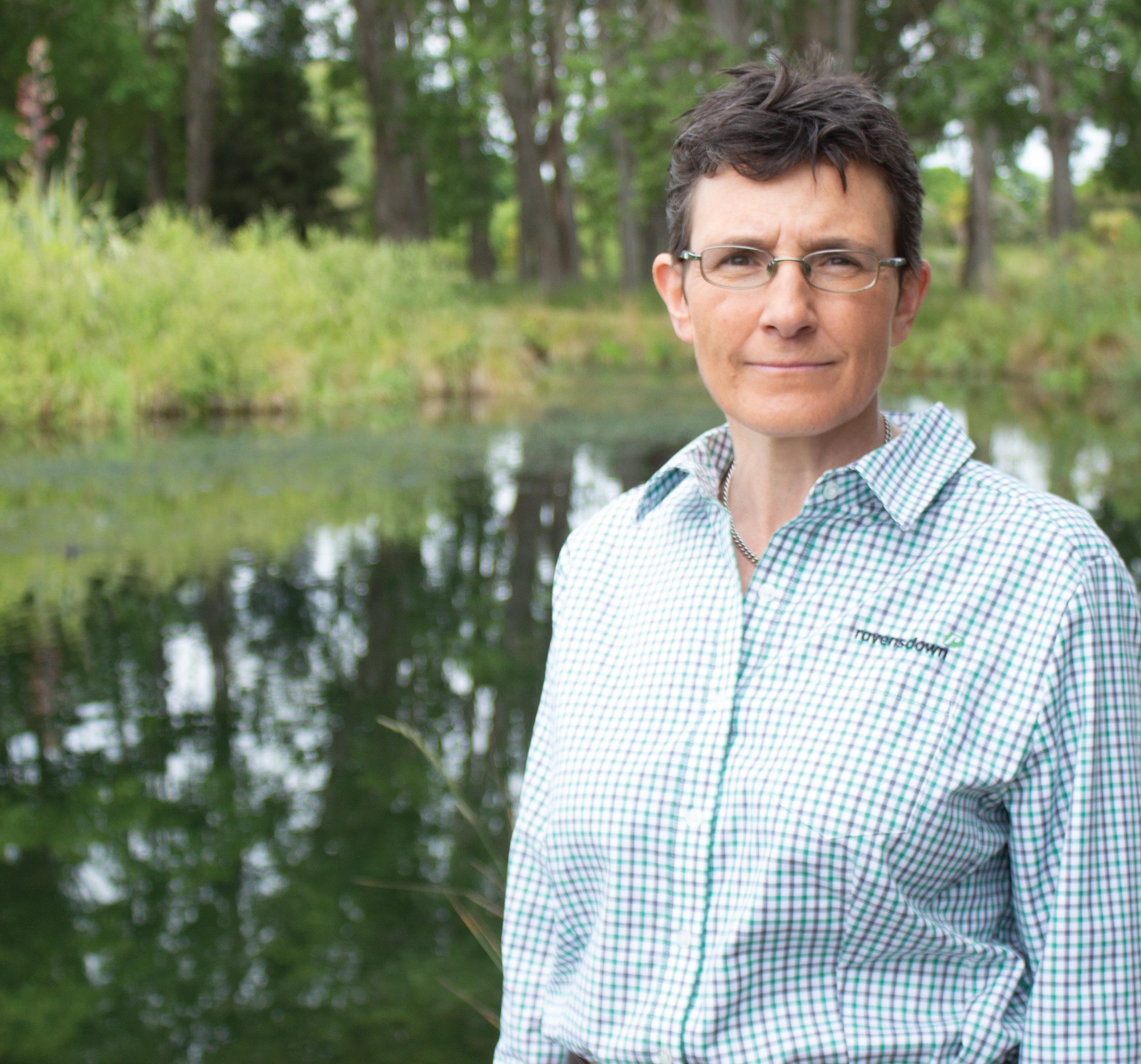
Besides, you know what they say about opinions ... Talk to the team that works for you. Your Ravensdown environmental consultants.
Smarter farming for a better New Zealand
0800 100 123 ravensdown.co.nz

Trying to safely apply effluent on farms with subsurface drains can be a headache with the drainage system heightening the risk of phosphate (P) and E. coli loss.
Subsurface drains, such as tile drains, are efficient at whisking excess water away from paddocks but they can also act as highways for nutrients and contaminants, directing them into waterways.
But Lincoln University scientists have found that an effluent treatment solution they’ve been working on can drastically cut P and E. coli losses even when subsurface drains have been installed.
The findings could have significant ramifications for areas where extensive drainage is present, helping simplify management and dramatically reduce the potential for nutrient and bacteria to get into waterways.
A high number of waterways including lakes are susceptible to P inputs with any increases in P concentrations likely to promote algal growth.
The latest research on the effluent treatment system has just been published in the scientific journal, Soil Use and Management.
Lincoln University PhD student Xueying Che carried out the studies, in conjunction with Professor Hong Di and Emeritus Professor Keith Cameron, using lysimeters designed to mimic an area where subsurface drainage had been installed.
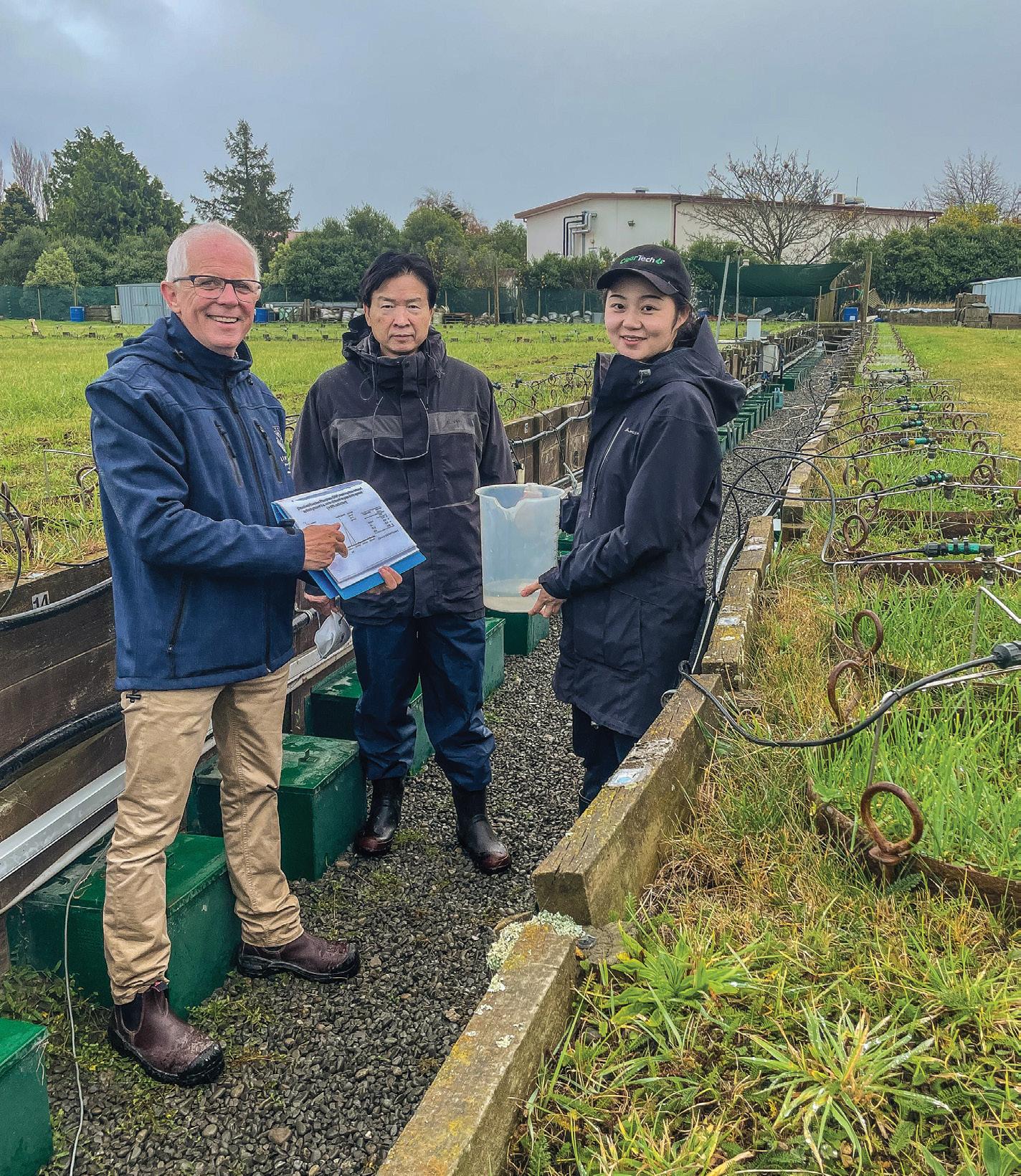
The drainage collection point at the bottom of the lysimeters was overlayed with 55cm of gravel which in turn was overlayed by a 15cm layer of soil in which pasture was growing.
Xueying used fresh effluent and treated it with the same active ingredient and
An effluent treatment system has been found to significantly cut the risk of waterway contamination through tile drains. Anne Lee reports.
methods used in the Lincoln University and Ravensdown-developed ClearTech and EcoPond system.
Those treatment systems use polyferric sulphate, also commonly used in drinking water treatment plants.
In the ClearTech system, the treatment occurs in a large tank and separates clarified water from the treated effluent, making the clarified water available for yard washdown. The concentrated treated effluent has been proven to show reduced levels of P and E. coli leaching loss through soil.
The EcoPond system treats the effluent “in-line” on the way from the farm dairy to the storage pond providing the same reductions in P and E. coli loss potential through soil but without the clarified water capture.
Until Xueying’s work, the ClearTech and
EcoPond research had looked at leaching losses through soil but Xueying aimed to find out what effect the treatments would have on leaching losses through subsurface drains given they are typically topped with a gravel layer.
She says it was already known from previous studies that treating the effluent with polyferric sulphate sets up a chemical reaction which transforms water soluble P into less-soluble, more stable forms of iron phosphate.
These forms of phosphate are more
readily held by soil particles, but in a situation where soils have been drained there’s a gravel layer to contend with which has virtually no capacity to hold back nutrients.

To test the effects on soils with tile drains Xueying applied the treated effluent to the surface of the lysimeters on the same day it was treated.

She also applied it after it had been treated and then stored for eight weeks simulating both situations that would occur onfarm.
She applied untreated effluent as a comparison and plain water as a control. Two applications took place for each of the four situations – one in May and the other in September.
Xueying applied spray irrigation following the May treatment so it supplemented rainfall and created conditions similar to those at the 75th percentile of winter rainfall records.
Irrigation over the summer period –to early December – followed typical irrigation patterns for Canterbury.
Xueying collected the drainage samples every week or more often if there were periods of higher rainfall and analysed the samples for total P, dissolved reactive P (DRP) and total dissolved P (TDP) as well as E. coli.
She also measured pasture production on the lysimeters.
Compared with applying untreated effluent she found the loss of DRP was reduced by 93% when the effluent had been treated and reduced by 92% when it had been treated and then stored.
• E. coli data were log10 transformed
• FDE - farm dairy effluent
• TE - treated farm dairy effluent
• TE-S - treated and stored farm dairy effluent
The TDP losses were 87% lower for treated effluent and 83% lower for treated and stored effluent when compared with untreated effluent.
Total P losses were 60.5% lower for treated effluent and 45% lower for the treated and stored effluent when compared with untreated effluent.
Total E. coli losses to drainage water were almost nil with reductions at 98% for
treated effluent and 99.99% for treated and stored effluent compared with untreated effluent.

Pasture growth was unaffected by the different treatments confirming P is still available to plants while being protected from leaching loss.
Xueying says the storage of the effluent didn’t appear to diminish the effectiveness of the treatment on limiting nutrient losses. She believes the lower total P loss reductions found when compared with previous studies using lysimeters could be attributed to the differences in the depth of soil between those studies and hers.

In her study the soil was 15cm deep whereas in other lysimeter studies the soil has been 70cm deep giving greater capacity for the iron phosphate to be held in the soil. Cameron says the research team hoped Xueying’s research findings will give farmers confidence the new technology will help them reduce farming impacts on water.
“With farm environment plans and new freshwater plans expected to demonstrate action to reduce nutrient losses to water, this technology provides a

new tool for farmers to reduce phosphate loss and E. coli loss to water, especially those with subsurface drains,” he says.
 Figure two
Total dissolved phosphorous (TDP) loss
Figure 2. Total dissolved phosphorus loss
Figure two
Total dissolved phosphorous (TDP) loss
Figure 2. Total dissolved phosphorus loss
Farmers have until the end of June to make submissions on proposed new regulations and changes to the Code of Welfare for Dairy Cattle.
Some of the proposals could have significant impacts on farming practices such as once-a-day feeding of calves, the use of electrified backing gates and wintering. While many of the proposals are changes to minimum standards within the Code of Welfare, and are therefore not enforceable by law, they are considered to reflect good practice and do form the background on which regulations are drawn up.
As best practices and minimum standards, they’re also likely to be
increasingly looked to by dairy companies or their customers and expected to be adhered to for auditing or supply agreement conditions. Several regulation changes relate to wintering including a proposal that farmers must provide animals a minimum of 10 square metres/ animal of well-drained, “compressible” area to lie down. Fodder beet has attracted attention with the draft document stating the National Animal Welfare Advisory Committee (NAWAC) has concerns around fodder beet due to “its nutritional profile and associated impact on the health and welfare of dairy cows.”
The draft proposes a minimum standard that calls for fodder beet to make up no more than 60% of a dry cow’s diet.
That’s well below the proportion fed by many farmers on “ad lib” fodder beet diets. Changes to the transport minimum standards also look set to form the basis of new regulations as part of efforts to reduce the chances that animals will go down (be recumbent) on arrival at slaughter premises. Federated Farmers dairy industry group chairperson Wayne Langford is also the group’s animal welfare spokesperson. While the aims of many of the proposed changes are fair, he says there are aspects that reflect a classic pattern of the government in trying to get too far inside the farm gate.
He cites the proposals for calf rearing specifying an increase in volume of milk per day required to be fed to calves along with the requirement to feed them twice a day until they’re three weeks old.
“We haven’t seen widespread animal welfare issues with calves not being fed properly under the various systems farmers use now so it’s hard to know what’s behind some of these proposals.”
Specifying lactating cows being transported to slaughter or saleyards must be treated with minerals to avoid down cows in trucks is another example, he says.

Proposed updates to animal welfare standards are on the way. Anne Lee reports.
SOME OF THE PROPOSED CHANGES: No use of electrified backing gates and top gates. (To be prohibited by regulation.)
Body Condition Score (BCS) must not fall below 3.5 or go above 8. (Minimum standard.)
Persons in charge of dairy cattle must have a documented contingency plan in place to address any anticipated adverse events which can negatively affect the welfare of the animals. (Minimum standard.)
All cattle in intensive wintering situations have access to clean water in the gazing area at all times. (By regulation.)
All cattle in intensive wintering situations have access to a well-drained, “compressible area” of at least 10m2/ animal for lying. (By regulation.)
Cows should be moved to an area suitable for calving at least 14-days prior to scan-dated calving date. (By regulation)
Cows must be provided with a compressible, well-drained surface and effective shelter at least 14 days prior to scan-dated calving to prevent calves being born into unsuitable conditions, including surface water or mud.
(Minimum standard)
Where a change of feed is incorporated into the diet it must be introduced gradually and abrupt changes must be avoided. (Minimum
Plenty of farmers never have those issues so making a blanket regulation creates unnecessary cost and additional time requirements. Regulating increased veterinary involvement is a concern too, given vets are under pressure with not enough vets in the country as it is.
“On top of that there’s the additional cost farmers will have to pay.
standard.) Fodder beet does not make up more than 60% of the diet of dry cows and growing cattle and no more than 30% in lactating cows with remaining feed made up of supplementary feed and/or pasture. (Example indicator.)
All dairy cattle must be provided with shade or other means to minimise the risk of heat stress due to warm and/or humid conditions. (Minimum standard but regulation may be set pending feedback.)
All dairy cattle must be provided with shelter or other means to minimise the risk of cold stress due to cold and/or wet conditions (Minimum standard.)
Photosensitive animals must be provided with protection from exposure to direct sunlight. (Minimum standard.)
River stones must not be used as a surface cover or bedding in off-paddock facilities. (Minimum standard.)
If cows are in off-paddock facilities for more than 12 hours/day for more than three consecutive days they must be provided with a well-drained lying area with a compressible surface or bedding, maintained to avoid manure accumulation. (Minimum standard.)
Calves removed from their mothers must receive
colostrum/colostrum substitute within two hours of being removed to ensure that any calves not fed by their mother receive colostrum within 24 hours of birth. (Minimum standard.)
For the first three weeks calves must be fed suitable quality liquid feed at not less than 20% of body weight divided into no less than two feeds per day. (Minimum standard.)
Calves cannot be fully weaned off milk before six weeks of age. (Minimum standard.)
Lactating cows must not be held off green feed for more than six hours prior to transport – 12 hours for dry cows. (Minimum standard.)
Water and roughage must be available in collection area at all times until the point of loading. (Minimum standard likely regulation.)
Dairy cows transported to saleyards or slaughter must receive mineral supplementation prior to transport to prevent metabolic complications – such as hypomagnesaemia and hypocalcaemia. (Minimum standard likely regulation.)
Lactating cows transported to saleyards or slaughter must be milked as close to transport as possible. (Minimum standard likely regulation. Example indicator says must be within two hours of transport.)
READ THE FULL LIST OF PROPOSALS AND DISCUSSION DOCUMENT HERE:
“We’re not saying having vets involved isn’t justified but putting it into regulation – that’s going too far.”
Wayne urged farmers to read the proposals and to feed their concerns back to Federated Farmers who will be making a submission.
DairyNZ will also make submissions on the proposals.
https://www.mpi.govt.nz/ dmsdocument/50974-ProposedCode-of-Welfare-for-Dairy-Cattle-andAssociated-Regulations-Discussiondocument
https://www.mpi.govt.nz/ dmsdocument/50998-NAWACproposed-Code-of-Welfare-for-DairyCattle-draft-for-consultation
Paul Muir and staff from On-Farm Research at the Poukawa Research Farm in Hawke’s Bay have been researching the calf rearing market since 1996. They have put together an update of how they think the market for calf rearing will look in the 2022/23 season.

Estimates for the final 2021/22 milksolids payout are about $9.60/kg. For a Friesian cow with a milksolids content of 8%, this makes milk worth 77 cents/litre. As Jersey milk has a higher milksolids content (typically 9.8%) Jersey milk is worth about 94 c/l. At this price vat milk is less likely to be used to rear calves.
CMR supply and prices: As the dairy commodities price market is at record levels (see graph for whole milk powder prices) it is not surprising that premium
milk powders are also well-priced. Premium milk powders range from $95-$102 per bag (excl GST). These are for tonne rates and the cost is unlikely to include farm delivery except when reasonable tonnages are ordered for delivery close to town.
While CMR prices seem high, a glance back to the archives (our newsletters) showed that premium CMR prices ranged from $80 to $95 in June 2001 and reached $100 that spring.
This was a result of the Foot and Mouth outbreak in the United Kingdom meaning
Some rearers have ready access to cheaper calves and/or low-cost whole milk.
no CMR component ingredients could be imported from the European Union. This led to a strong export demand for New Zealand-produced ingredients. CMRs became so scarce that in mid spring, food grade whole milk powder was eventually released on to the market for calf rearing.
Non-curding or whey powders have also increased in price but are still typically $20/bag cheaper than premium casein
The number of whey products has increased and most (80%) are imported but a few brands are formulated in NZ. At present, these brands are typically a blend of whey powders and infant formula which was unable to be marketed in China because of their current Covid lockdown and recent scares about the quality of infant formulas. Current prices for noncurding powders range from $75-$82 per bag (excl GST).
Our recommendations are the same as in other years – feed a curding powder for the first few weeks then switch to non-curding milk powder if you need to cut costs.
Once calves are two or three weeks old, they are starting to develop both their rumen and immune systems and are better able to handle non-curding powders.
Pick a premium powder that curds. A curd test is simple to apply if you can find some rennet in the local supermarket –though often it’s hard finding someone who knows what rennet is!
A simple curd test involves making up 500ml of milk replacer as per the instructions on the bag. Keep at 39C (set the oven and use a thermometer) and then add 5ml of rennet.
A good curd should have formed within 20 minutes. Do the same with some blue top milk so you can see what a really good curd should look like – though it is
unlikely any milk replacer will ever curd as well as whole milk.
At $100/bag of premium CMR reconstituted at 125g/litre works out at 62.5 cents/litre and at $80/bag of noncurding CMR works out at 50c/l. When the price of whole milk is 77c/l this is likely to result in more dairy farmers switching from vat milk to CMR, particularly later in the season.
If this happens it is likely to put more pressure on both the supply and price of CMR. Given the current world volatility and the obvious constraints on supply chains, this may well be a good year to order your CMR early.
Calf meals: Most rearers will find themselves paying in excess of $1000/T for meal. Current pricings appear to be around $1030-$1050 plus GST for 16% protein pellets in 25kg bags and $1050-$1100 plus
Standfirst: Paul Muir and staff from On-Farm Research at the Poukawa Research Farm in Hawke’s
h been researching the calf rearing market since 1996 They have put together an update of how
the market for calf rearing will look in the 2022/23 season.
Estimates for the final 2021/22 milksolids payout are about $9 60/kg For a Friesian cow with a milkso content of 8%, this makes milk worth 77 cents/litre. As Jersey milk has a higher milksolids content (typ 9.8%) Jersey milk is worth about 94 c/l. At this price vat milk is less likely to be used to rear calves. CMR supply and prices: As the dairy commodities price market is at record levels (see graph below for whole milk powder prices) it is not surprisingly that premium milk powders are also well-priced Premium milk powders range from $95-$102 per bag (excl GST). These are for tonne rates and the cos unlikely to include farm delivery except when reasonable tonnages are ordered for delivery close to to
While CMR prices seem high, a glance back to the archives (our newsletters) showed that premium CM prices ranged from $80 to $95 in June 2001 and reached $100 that spring This was a result of the Foo Mouth outbreak in the United Kingdom meaning no CMR component ingredients could be imported f the European Union. This led to a strong export demand for New Zealand-produced ingredients. CMRs became so scarce that in mid spring , food grade whole milk powder was eventually released on to the market for calf rearing

GST for 20% protein pellets, excluding delivery.
There can be discounts of up to $150/T for bulk orders. Because of the uncertainty around supply and cost of imported ingredients that go into calf meals, few suppliers will guarantee prices beyond June.
Calf prices: Normally autumn-born calves are sought after as by summer they are often 100kg heavier than spring born calves and have a better shot at handling the lower quality summer forage.
Reduced availability of these calves means sale prices (May) are around $150 for the better Friesian calves. Spring calf prices will, as always, reflect supply and demand.
Rearers: When we surveyed calf rearers back in 2003, we found there was a 20% turnover of rearers largely because of a
lack of profitability. It is hard to imagine much has changed since then. This supply chain issue could be solved with rearing contracts but there are still very few contracts on offer. Many farmers don’t want to farm calves through the summer so simply look to buy calves in autumn. Supply and demand means the price of weaners usually falls rapidly in November/ December leading to poor profitability for the rearer.
Rearing cost: It is always difficult to provide an accurate indicator of calf rearing costs as every situation is different. Some rearers have ready access to cheaper calves and/or low-cost whole milk. Larger rearers get better discounts on milk and calf meals and have economies of scale with labour. Large rearing sheds may have a higher capital cost but reduced labour costs/calf. There will be differences
Given the current world volatility and the obvious constraints on supply chains, this may well be a good year to order your CMR early.
in mortality and animal health costs which all impact on the bottom line. Nevertheless, we have tried to provide an estimate of costings.
The milk powder price is about $100/ bag this year. While the aim might be to feed one bag of CMR, the reality is this seldom occurs – there are small or late calves which take more CMR. So we have used a CMR price of $100/bag, 25kg/ calf and a CMR cost/calf of $125 per calf. This assumes a casein-based CMR is fed throughout the rearing. However, switching to a budget CMR for the last two or three weeks of rearing has the potential to save $10/calf.
Our indicator budget is for a system feeding out 75kg of meal – 25kg pre weaning and 50kg post weaning. It is worth noting there would be a number of rearers on limited land areas feeding out higher quantities of pellets, with grass becoming a much smaller component of their system.
A typical Friesian bull calf will consume around 100kg of grass drymatter between weaning and when it leaves the property. We have valued this at 20c/kg DM to reflect the lost opportunity cost from grazing other stock.
We have used $130 as a rearer margin. This means “fixed” costs of rearing are about $425 per calf. Variable costs of calves, cartage and commission at point of selling also have to be considered. Assuming $100 for a good early spring calf, it seems a rearer will need to secure their CMR, meal and calves and achieve a return in excess of $525/calf to be profitable.
• For more information www.on-farmresearch. co.nz or facebook – Calf Rearing NZ
In 1996 it looked like very few calves were going to be reared and Poukawa started evaluating lower cost rearing systems and did much of the pioneering work on once-a-day feeding which allowed the calves to be reared economically at scale. Since 1996 around 8000 calves have been reared on a wide range of trials – covering effects of colostrum, milk feeding systems, meal type, roughage and calf breed on calf performance. Much of this is covered on the website www.on-farmresearch.co.nz

After rearing calves on cow’s milk for 20 years, in 2021 Rosemarie Costar did things a bit differently. She reared 220 calves with Sprayfo Blue calf milk replacer. Based on excellent results, coupled with financial benefit, she’ll be using Sprayfo Blue again this year.
Rosemarie and her husband Bryce are dairy farmers at Onewhero. They milk 300 cows, rearing approximately 60 replacement heifers annually, plus another 160 calves to sell.

She notes that changing from a whole milk system to milk replacer feeding was simple. New equipment included digital scales to weigh the milk powder and a flow meter to measure the milk coming out of the feederbecause she was feeding numerous mobs, she needed to make sure each mob received the correct volume.
Rosemarie fed her calves Sprayfo Blue from about day 10 (once she ran out of day 3 and 4 colostrum). They were on TAD feeding for three weeks, then OAD until weaning off milk at 90kg.
Premium quality Calf Milk Replacer

Can be fed to calves from 4 days’ old
Whey protein for faster digestion
Hydrolysed wheat protein aids digestibility (no soya)
Dissolves easily, even in cold water
“We have definitely seen better results with Sprayfo Blue” confirms Rosemarie. “The first thing we noticed was no nutritional scours…
“We know that one of the benefits of Sprayfo Blue whey-based powder is enhanced rumen development… The calves consumed a kilo of highquality meal a lot faster than they did on the whole milk system.”
The Sprayfo calves achieved better growth rates too, averaging just on a kg/ day with CMR and meal. Rosemarie had expected that to slow post-weaning, but it didn’t.
“They just kept eating meal and pasture and growing… To us, this was evidence of good rumen development.”
The Sprayfo calves achieved the 120kg target weights 10-12 days earlier than previous mobs, so they were weaned earlier too.
Save money and grow better calves with Sprayfo Blue. To find out more, or place an order, call Jaco on 021 370 222.

For more details on Rosemarie’s Sprayfo experience, visit our website.
Superior suspension – won’t drop out of solution
“Post-weaning… they just kept eating meal and pasture and growing… To us, this was evidence of good rumen development.”Sprayfo Blue Premium CMR
Ihave been involved with the milk quality and mastitis scene for a number of years now, and one of the most consistent problems identified on farms struggling with rising cell counts and grading situations is bad teat spraying.
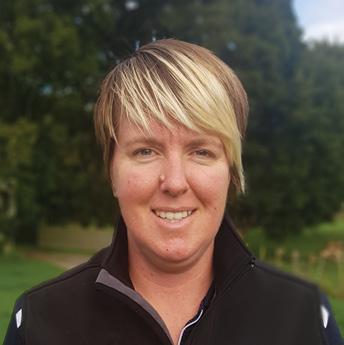
Most farms are doing this very important job already, but are you actually doing a good job? Do you know what a good job looks like?
One of the first clues a farm is not teat spraying particularly well is seen in the results of milk cultures from high cell count cows.
A bacteria called Corynebacterium bovis, which lives on the skin of cows and loves to colonise the teat canal is what we see grow from milk cultures when teat spray application is not effective – either the teat spray is not being applied to everywhere that needs it, or bacteria are able to hide from the teat spray which happens when there is teat end damage. Coryne is readily killed by iodine or chlorhexidine-based teat sprays.
When the teat canal becomes colonised with Coryne, it results in mild to moderate increases in the cow’s cell count – often individual cows will sit between 200,000 cells/ml and 1,000,000 cells/ml.
You might not think those are particularly high cell count cows, but when poor teat spraying is a chronic problem, and 90% of the herd have teats colonised with Coryne, you may well push very close to grading on cell count.
I was initially taught that good teat spray application was achieved if a drop was formed on the end of the teat and this is the level that many farms currently achieve. However, since then, I have learnt that effective teat disinfection means teat spray should cover every part of the teats where the liners touch.
That’s not just the ends of the teats – and it is a lot more coverage than you might expect. The entire barrel of both the front and rear teats should be covered.
The most common area missed is the front of the front teats, however the worst situations are when the teat spray is being applied to the belly, or not applied at
all. Automatic teat sprayers have come a long way in the last few years, however, wherever automation is involved in the dairy, it is important that someone actually checks the machines are doing what they are supposed to do.
Problems which arise from automation include weather disturbance (wind blowing the teat spray off course), nozzles pointing in the wrong direction or not firing at all, and the inability to cope with a wide range of udder shapes and sizes.

Another common error is stopping with teat spray part way through the season. This is a major problem as it enables bacteria to proliferate on the teats, and enables more spread from cow to cow. Major pathogens such as Staph aureus thrive in a no-teat spray shed.

Teat spray should be applied after every milking, throughout the season.
Emollient is an important component of teat spray. The disinfectant component of teat spray, whether it’s iodine or chlorhexidine, tends to dry teat skin out if used alone, so the addition of emollient helps to counter this and support healthy teat skin.
Dry teat skin is a common problem –
dry areas tend to develop where teat spray is routinely missing, such as the front of the front teats – and these spots will readily harbour bacteria such as Coryne.

On some of the farms struggling with cell count, fixing teat spray issues has dropped the bulk tank SCC by 1 00,000 cells/ml within a matter of weeks.
Remember, high cell count quarters produce less, and mastitis cases are money down the drain – post-milking teat spray application is one of the critical control points for mastitis – you are already doing this job every day – so make sure you are doing it well.
The New Zealand Diploma in Primary Industry Business Management gives you the flexibility to study while you are working.
Course modules:
Financial Planning and Management
Environment and Sustainability Management
Strategic Planning for Primary Industry Business
Human Resource Management (Staff Management)
Wherever automation is involved in the dairy, it is important that someone actually checks the machines are doing what they are supposed to do.
Thrifty savings, investing in stock, and low drawings in their 20s has helped Bay of Plenty sharemilkers Josh and Aleshia MacDonald earn substantial cash equity. Sheryl Haitana reports.
Having a good understanding of your onfarm costs and your financial figures is what will make your business successful, Josh MacDonald says.
Josh, 30, and wife Aleshia, 28, are moving to a new sharemilking job this season to milk 550 cows at Maketu in the Bay of Plenty.
The couple have 340 cows of their own, including their current herd, rising two-year-olds and cows they have leased out. The only debt they will carry into this job is from buying 200 Kiwicross cows from the departing sharemilking who has been on the farm for nine years.
Josh grew up on a family dairy farm at Nukuhou North and has been investing in stock since he was a teenager. He left school and worked as a farm assistant beforing managing his parents’ sharemilking job in the Waikato.
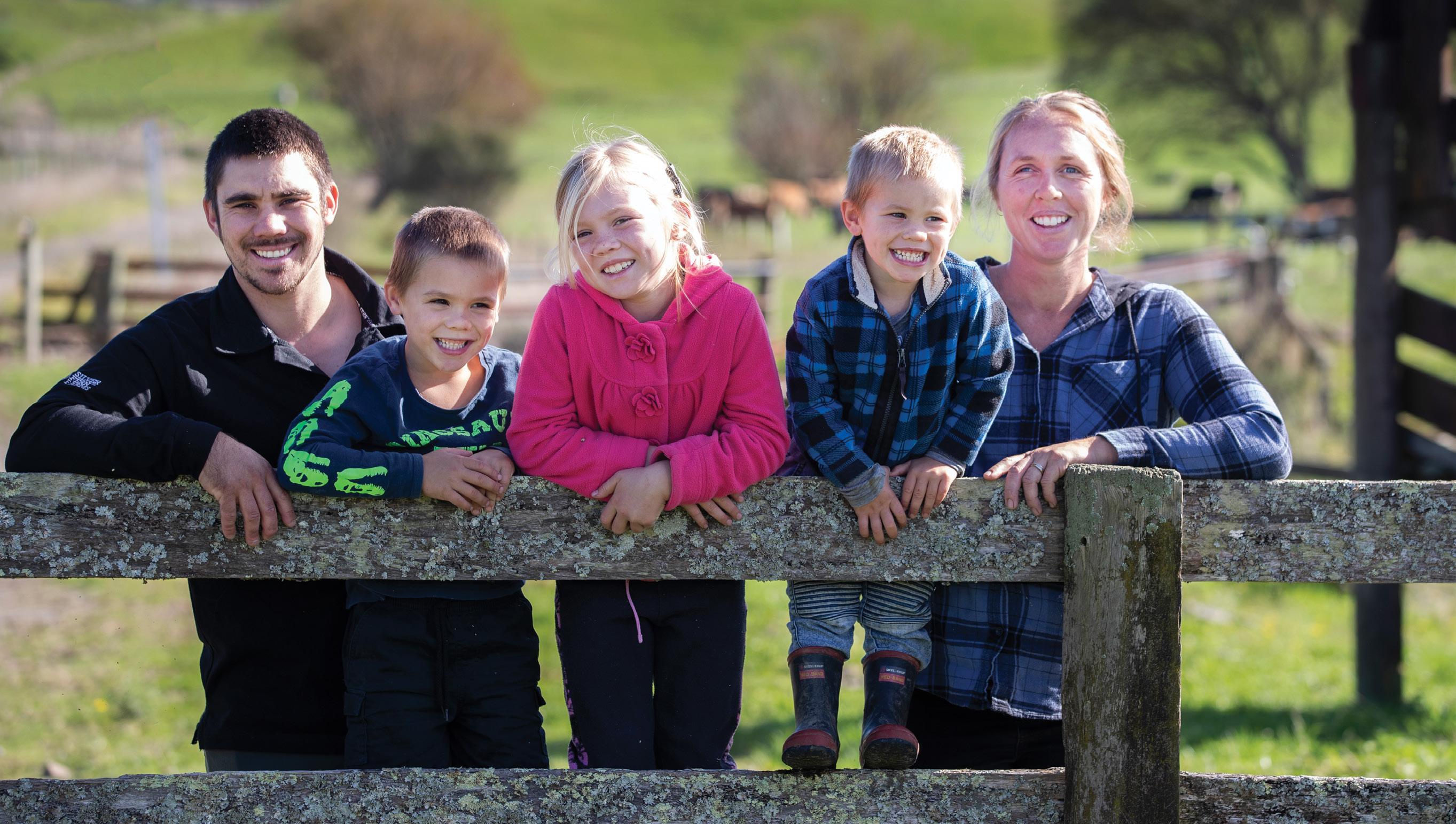
“I started rearing animals when I was 18 and I would lease them out for free. My deal with my parents was I could rear one calf for every three cows I leased back to them. They grazed them as part of my contract, and then they got the production out of them in the herd.”
Aleshia grew up on her parents’ dairy farm near Huntly and studied for a certificate in vet nursing after school.
The couple met through Young Farmers and managed
a farm together for a year before going into their first sharemilking job milking 175 cows at Pukekohe when they were just 21 and 19.
“We raised capital by saving a lot while we were working for wages, and rearing stock and leasing them out,” Josh says.
When they went sharemilking they had enough animals (80 cows and 30 rising twoyear-olds) to use as equity to buy the rest of the 65 cows they needed.
“That was enough to get the loan and we also had the ANZ Young Farmers Start Up package which really helped us. We didn’t need security for our overdraft which helped.”
Aleshia’s parents grazed their youngstock on their runoff for 12 months prior to going sharemilking.
“We haven’t had financial backing, but our parents have helped us in ways like that,” Aleshia says.
The couple have managed to continue to pay off debt through low farm working expenses and keeping their drawings under $35,000/year.
“Our drawings were only $24,000 when the payout was $3.90/kg MS.”
After three years at Pukekohe, the couple moved back to Matahi Valley in the Bay of Plenty to sharemilk for Josh’s uncle and aunty Paul and Heather Warneford.

They were milking 200 cows and stayed for three years, also contract milking the neighbour’s farm milking 400 cows for a

season before shifting to their current farm, also owned by Paul and Heather.
Josh’s father had recently passed away so the couple were reluctant to move away so decided to stay sharemilking in the area and Paul and Heather have also been great to work for.
When the $3.90 milk price struck the industry, the couple also felt it was going to be hard to find a bigger sharemilking job as they were still young.

“The banks were willing to back us but it was really competitive (finding a job) and we thought maybe we hadn’t proved ourselves enough. There were lots of other people who had been in the industry longer than us.”
They would like to be in a position to own their own farm in the next 6-8 years.
“We didn’t want to move out of this area, but if we move now and make the gains financially we have the ability to live where we want later on.
“We are debt free now, it’s time to move.”
The couple entered the Dairy Industry Awards last year and placed second in the Bay of Plenty Share Farmer.
That has helped get their name out there and give them the boost to go looking for a bigger sharemilking job.
“It was a great process to validate our business and show us our strengths and weaknesses,” Aleshia says.
The judges pointed out that they were
• Sharemilkers: Josh and Aleshia
MacDonald
• Location: Nukuhou
• Area: 120ha, 90ha milking platform
• Cows: 230 Jersey, Jersey/cross
• 2020/21 Production: 71,000kg MS, 285kg MS/cow (250 cows)
• 2021/22 Target Production: 61,000kg MS (230 cows)
• Farm dairy: 24-aside herringbone
• Pasture eaten: 7.8t DM/ha
• Supplement: 80t palm kernel
• Lease blocks: 35ha & 20ha.
• 6-week incalf rate: 68%
• Empty rate: 10.5%
than to stay where they were and diversify and invest in property.
They had been contemplating investing in property, but feel they’ve missed the boat with house prices skyrocketing.
“We will stick to what we know - we know cows. This is a three-year contract so we will look to pay off debt and grow stock numbers for a larger sharemilking job or a second sharemilking job.
“We think an 800-cow job is big enough to springboard into farm ownership in our 30s.”

One tip Josh has to other young sharemilkers is to invest in decent gear to set yourself up for bigger jobs in the future. They are debt-free going into this job with the right gear already paid off.
“Get gear that will be big enough in three or four years’ time. I always had in my mind a 500-cows job, so I bought a tractor and feedout wagon that would be suitable for that.”
Being able to fund your own grazing for youngstock is also a way to save money. They managed to secure two leased runoffs and managed their calves and rising twoyear-olds themselves.
“That meant our grazing bill was less than half what you’d pay a grazier, only costing us $3/head.”
The couple have three young children with a fourth due in May. One of their strengths is being able to job-share between the farm and the children.

“I think what has added to our success is 90% of the jobs can be swapped, so either Aleshia or I can be doing them. It makes you a good team.”
The farm where they currently are is steep which equals low production, but cost efficiency is good, with low farm working costs of $1.96/kg MS.
“The cows use 2.5 times more energy on the hills, but we increased milksolids by 22,000kg since being here.
“The hills here are tough, we have lost cows on the hills so that’s one of the reasons we milked less this year and took out more land from the milking platform.”
They have a strong focus on pasture utilisation and days in milk, which they average 256 DIM. The Bay of Plenty average is 248 so they are getting an extra eight days of milk in the vat.
Their target production this year is 61,000kg MS milking 20 fewer cows than last year, which has improved their sixweek in-calf rate and empty rate.
They did five weeks Artificial Insemination and four weeks with
registered Jersey bulls, which they also use over their yearlings, and DNA the calves to sire match.
They use a mixture of NZ genetics from LIC and CRV Ambreed, and United States and European Jersey genetics.
They have also used a lot of polled genetics and about 30% of their youngstock is now polled, which they believe is a good trait to breed for the future.
Their Jersey herd has produced 400kg MS/cow in the past so the couple are looking forward to moving to the flat farm at Maketu with a bit of extra supplement so the cows can thrive.
“My long term goal when we own a farm is to milk 100% Jersey. We have cows from my grandfather and father’s Jersey Stud Poplarbrae,” Josh says.
“Jerseys are short - like me - they are efficient producers, they are easy calving and fertile.”
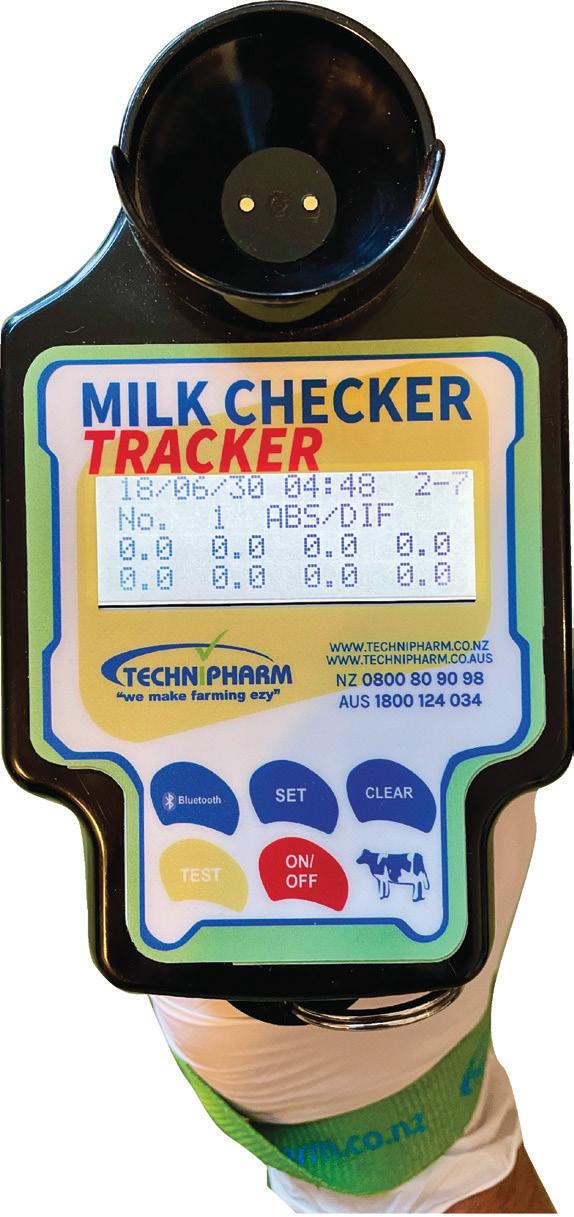

Christina Bright has always been interested in environmental science as well as land management and she’s managed to combine the two into a career.
And because the 28-year-old is based in Cromwell working for Landpro covering Otago and Southland, that career involves a lot of time spent on dairy farms.

She started with Landpro in 2017 as a graduate, using her environmental science, hydrology and water quality skills. However, she now works mostly with farmers helping them to manage regulatory risk and explaining how they can implement change on farm to meet consent requirements.
“I do lots of work supporting nutrient budgeters by preparing mitigation plans, and I work closely with our farm environment team to implement Farm Environment Plans (FEPs) to achieve regulatory responsibilities but also maintain farm performance,” she said. Landpro, which started in 2007, now has more than 77 staff covering most of the country.
“We just seem to keep on growing.”
Christina grew up in a rural community in Marlborough where her parents grow grapes. She still enjoys the free bottles of wine dropped off at their vineyard, especially with a wedding coming up.
Sean Railton, her fiancé, is a cadastral surveyor, also employed by Landpro in Cromwell. The couple met while studying at the University of Otago.
Christina had headed south for the university’s famed Health Science’s first-year course with becoming a doctor in mind but, when she realised it wasn’t for her, switched to geography and a science degree which became a first-class honours which then became a PhD in hydrology.
“Everyone thinks that, because of my doctorate, and because I live in Cromwell, I know all about the Clyde Dam, but I don’t. I’m not an engineer. My interest is freshwater management and environmental science and it’s great I can do the two together and carve a career path.”
It’s an eight to five job, five days a week and involves everything from working at her desk in the Cromwell office to visiting farms and even installing flow gauges in rivers.
Most farmers are being very proactive with new regulations looking five or 10 years ahead and what they will need to do, a young scientific adviser says.
Photos and story by Karen Trebilcock.New regulations offer opportunities, says Landpro environmental consultant Christina Bright.
“Because I’m so short I have to wear full chesties instead of gumboots even when the rivers are shallow.”
After so long in academia, she enjoys getting outside.
“Whenever I can, I’ll be out onfarm talking to farmers. I love the rural landscape so much.”
Her role also saw her as an expert witness, during the Otago Regional Council Plan Change Seven Environment Court hearings two years ago.

“I was there on behalf of our clients and Landpro. A lot of what we do is about educating councils, working with them, so they understand what farmers need.
“We have a really good relationship with regional councils. Our approach is collaborative. It’s not about personalities or regional council versus farmer. We’re all trying to do the best, to work together, to meet the requirements needed.
“All of us, farmers, consultants and regional councils, are all trying to navigate fundamental changes together and if we all work together then we can achieve it.”
While the Southland regional council, Environment Southland, has for many years required most dairying activities to be consented, it is not the case with Otago Regional Council.
“We’ve had change at national level instead, to hold the line until some of the regional plans, like Otago’s, can catch up.”
And what she sees needed to make policies workable on farms, she can then discuss with colleagues in the office who are advising government directly.
“We can see the effect of the regulations, the practical changes required to make them work on farm.”
As well as being a go-between, she says one of the company’s tag lines is “no bull environmental solutions”.
“We’re explaining to farmers what the regulations are, what consents they need, and applying for them on their behalf.
“Most farmers are being very proactive,
very progressive, looking five or 10 years ahead and what they will need to do.
“It’s about strategic planning. What you want to do and why and how you can achieve it, whether it be a new effluent system, a wintering barn, establishment of a new young stock block or an expansion of the dairy platform.”
And some of it was just understanding the rules. Two years ago the new National Environment Standards restricted farmers to intensive winter grazing only 10% or 50ha (whichever is the greater) of their property without consent.
But as Christina points out, some farmers may be able to grow a winter crop such as fodder beet and lift it to feed to cows on feed pads instead of grazing it in the paddock, and still meet the regulations.
She also works with people looking at purchasing farms.
“It used to be they would go to their bank or accountant first. Now they come to
us at the same time and ask if they should buy the farm, whether they can farm it the way they want to or not.”
And the next generation of farmers who are buying farms, many of which have been to Lincoln or Massey universities, are better at understanding the new regulations and why they are happening.
Farming will keep changing, especially with the government’s new Intensive Winter Grazing (IWG) rules coming into effect later this year, but no one should be worried.
“I’m optimistic that farmers who are prepared for the upcoming regulations will be able to navigate them. They should look at them as an opportunity.
“We will be able to keep farming.”
However, farmers had to apply for the necessary consents ahead of time, and not ignore the changes.
“We are seeing a fundamental shift for wintering in the south but if farmers are carrying out best management practices now they will be in a strong position to manage the change in regulation.
“The regulations may not see an improvement in our waterways for a while, it might take generations for that to happen, but it will happen because of them.”
‘I’m optimistic that farmers who are prepared for the upcoming regulations will be able to navigate them. They should look at them as an opportunity.’Christina Bright has combined environmental science and land management into a career.
Are the decisions you make every day on the farm, suitable for molding our future generations while knowing we are keeping them safe in the best possible way? Or are some of your actions cringe-worthy as we think about the marginal behaviours you exhibit in front of your most influential onlookers?
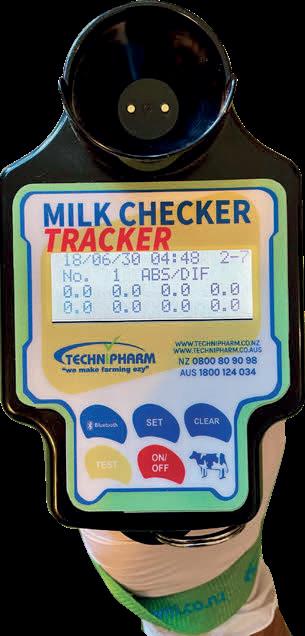


To get adults and children talking and on the same page when it comes to health, safety and wellbeing I have spent the past two years developing the ‘Think Safe Brain’ campaign, with our second farming day kicking off in two rural primary schools in June.

The idea came when I heard a sixyear-old child say; “I can stand on the road and won’t get run over because I have got my high vis vest on”. Vests, for sure, have their place but we cannot and must not just expect that simply wearing a vest will keep us safe. It helps one be more easily seen but you can still die if you make a marginal decision while wearing one.
To me, this is part of everything wrong

when it comes to health, safety and wellbeing and looking at it with fresh and literal eyes - such as our children’s. They have not had health and safety tarnished with bureaucracy, instead, they are literal in their approach to staying safe. For instance; ask a child why they should wear a helmet on their motorbike? They will simply tell you that if you don’t and you fall off and hit your head then you could die. Why do we, as adults, make health and safety so complicated?
The farming school day starts with a morning session with NZ Police - they talk about emergency situations with the children, things every one of them needs to know about. Following this, students are split into mixed-aged groups where they then spend the day going around different farming modules discussing, learning and teaching each other, and adults, about all things farming safety. It is important that the community is involved and adults are part of these conversations as children have an incredible ability to point out things
How our future farmers - our young ones - act onfarm is important for the safety of themselves and others, writes Harriet Bremner.
that can be life-threatening that we have had no consideration of. By the same token, the adults highlight things they perceive to be dangerous or what can go wrong in different scenarios.
We have stock trucks, roadside hedge trimmers, tractors, implements, fire brigade, Police, tractors and horses, motorbikes, side-by-sides, trailer loading and stropping, obstacle courses, chemicals, firearms and more. Each module has specific learning outcomes where the children develop a specific understanding of the dangers around them.
Often I hear people say to their child simply; ‘don’t stand there’. This is as good as telling a dog, ‘who is a good boy?’ It is far too general and the words actually don’t mean anything. We need to be more specific with our use of words for children, they need to understand why.
So rather than saying not to stand behind the stock truck, the module at the farming day allows each child to sit in the driver’s seat and see for themselves how little the driver can really see. This helps the child to understand the dangers of
hooning around the yard on their little bike while the truck is present.
Interwoven into the day are the police tractor and horses, Rural Support Trust, school PTO sausage sizzle and more. The day encompasses a whole community feel and it’s amazing how suddenly everyone is engaged in talking about and doing activities that will keep them safe when out on the farm. We also ensure mental health is part and parcel of the whole day because if you don’t look after your mental health, it is very hard to be able to make good decisions in the first place.
It’s incredibly difficult to put into words on one page how much this campaign means to me and how much it will help communities in the future.
The pilot day two years ago was a massive success and now that events are able to be run again, the plan is to run these nationwide so that every single rural school in the country has access to it and also every single rural family takes home a set of books. This helps take the conversations from the farming safety day back home and then out on to the
Gain a strategic and entrepreneurial edge with the Value Chain Innovation Programme.
“The Value Chain Innovation Programme will allow participants to lift the lid on New Zealand’s leading value chains, exploring their working components and how they create value.”
Programme Facilitator, Prof. Hamish Gow.
Applications for the Kellogg Rural Leadership Programme close 14 November, 2021.

farm. I have developed work booklets for the children to do as follow up in their classroom for a week after the farming safety day to ensure learning is solidified for future reference.
I give a massive thanks to PGGWrightson for being the main sponsor of my upcoming day, coupled with NZ Police and Farmstrong NZ. Without their support, the day could not go ahead.
I am always on the lookout for funding so if your rural community needs to up its game when it comes to putting people first and your company wants to support this, then please get in touch with me as we are all about prevention.
We want to ensure the people we love come home from work, every single day, while we help grow a practical generation of future farmers who are great decisionmakers and who know that health is safety and everything in between. Let’s not wait for an ambulance at the bottom of the cliff, instead, let us be proactive in saving lives before they are lost unnecessarily.
Step up in 2022 as an agri-sector leader of change. Register now at ruralleaders.co.nz/kellogg/
Applications for September’s programme close 10 July. To register your interest visit ruralleaders.co.nz/value-chain/
When is a good time to weigh-in on your cows’ breeding worth?
Story and photos by Karen Trebilcock.
Dairy cows come in all shapes and sizes and with more crossbreeding going on than ever, and the introduction of new European breeds, it’s not going to stop.
Tall and lean cows, short and fat cows – what is the best to have?
Breeding Worth (BW) ranks cows across breeds on their expected ability to produce milk. Liveweight is included in it because a heavy cow which needs lots of feed to maintain its body weight must be compared with a lighter one which can eat less.
The economic reality of all New Zealand dairy farms is the feed in/milk out ratio. If less feed can produce more milk, then that is the cow you want.

With the equation partly dependent on the weight of the cow, how accurate are the BW liveweight figures we’re dealing with?
The answer to that is not good. According to Dairy Statistics 2020-21, about 76% of cows milking in NZ were herd tested that year. Of those, only 2.5% had a weight added to the herd test figures.
So of the 4.9 million milking cows, only about 85,000 were weighed.
If you want the good news, cows which are part of the TOP system which helps select the next sires are weighed so there is some truth in that BW figure, but it could be a lot better.
It’s something you can do onfarm. More and more dairies have scales with EID tags making the recording easy as well as the uploading the data into MINDA.
And we weigh our young stock during the first two years of their lives to make sure they’re growing as they should. Why do we stop when they’re mature?
So when to weigh them?
Obviously not in the winter when they have a calf growing inside them, or in the spring when their udders are swollen with milk and condition is all over the place. Plus at that time you have enough things to do.
Instead, schedule it for summer when the foetus is still tiny and you and the cows are cruising through the sunny days.
Cows hit maturity around three years old so still weigh your two-year-olds but make sure you do it the following year as well. The system picks up their age and pregnancy status with the date of the weighing.
Weighing a mature cow once in its lifetime, the experts have said in the past, is enough as mature cows will stay the same weight (apart from their body condition score) throughout their lifetimes which could also explain
possibly the low percentage of cows weighed in one season.
Don’t confuse liveweights with body condition scores. Body condition scores measure how much fat a cow has. It utilises this fat when it’s not getting enough energy from its feed and so loses it. It puts body condition on when it’s getting surplus energy to its needs.
Body condition is more about the health of the cow and how much it’s eating. Liveweight is all about genetics and what was fed and how much it was fed as a youngster.
Adding in weights to MINDA will affect a cow’s BW and the rankings will change in your herd. Until you add them, the weights are only an estimate of what they should be, given the information about the mums (which may also have never been weighed) and their half-sisters and cousins.
When the Southern Dairy Hub did it this season, individual BWs moved as much as from positive $25 BW to negative $37 BW. At least they did it before culling decisions were made.
Don’t think this movement is a failure of the BW system. Instead, it’s more likely somewhere along the way, either
with the cow or even its mum, tags got mixed up.
Which is another good reason to weigh your cows especially if you don’t DNA test your calves. It’s another check that everything is as it should be in your herd records.
Overall, your herd BW will probably stay about the same as some cows will go down and others will go up. What it does make you aware of is those girls who are not pulling their weight.
Because with greenhouse gas emissions, let alone the price of fertiliser and grain, the amount a cow eats to maintain body weight is key to current farming.
Instead of working out your kg milksolids (MS)/ha, work out your kg MS/ liveweight. More milk with less hooves (calving costs, vet bills, cups going on) is better than good. It’s great.
So aiming for your 400kg cow to do its weight in milksolids annually is the target you want. Even better would be for it to do more than its weight.
So what has liveweight got to do with feed intake?
For an animal to live, forget producing milk or a calf, a cow has got to eat. There is an energy cost to everything it does
from digesting its food, to keeping its heart beating and its lungs breathing and controlling its temperature.
And it’s not a straight-line equation. As liveweight increases, so does maintenance requirements but a lighter cow needs more energy per kg of body weight than a heavier cow. So a 400kg cow needs 50 megajoules of metabolisable energy (MJ ME)/day but a 450kg cow needs 54MJ ME/day and a 550kg cow only needs 63MJ ME/day.
But genetically, some cows are better at maintaining their bodyweight with less feed than others and these are the ones with the higher BW scores. It means of that 18kg DM you’re feeding them each day, they can put more of it into milk production.
With greenhouse gas emissions becoming important, if you can have fewer cows producing more milk then you can start ticking boxes.
And we’re doing this already. Our cow numbers are steadily dropping but at the same time we’re nationally maintaining milk production.
Whether that is by feeding more grain and higher quality pastures than before, or better genetics, who knows.
But it’s no surprise that cows with high BWs also have low nitrogen and methane/kg MS outputs. It means our breeding all these years has been successfully producing cows which convert feed better.
Nitrogen and methane (CH4) emitted by cows through urine and belching are feed losses. The cow has eaten the nitrogen, carbon and hydrogen but not converted it to milk or body condition or growing a calf or energy for walking.
By improving our breeding even more we will get there, and adding your cow weights into the growing data of our national herd will help keep our cows genetically on the right track.
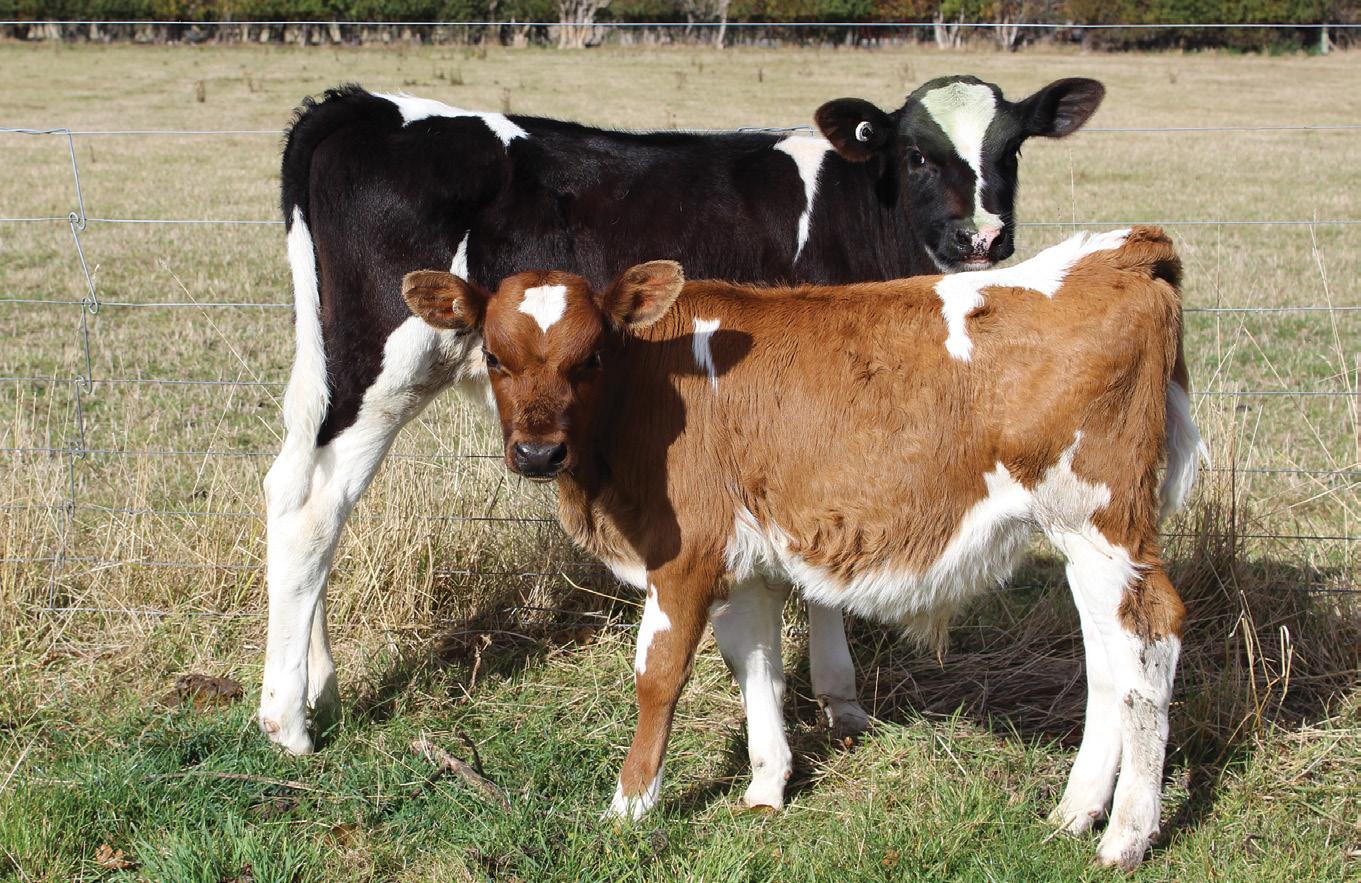
With greenhouse gas emissions, let alone the price of fertiliser and grain, the amount a cow eats to maintain body weight is key to current farming.Left: The tall and the short of it: these two autumn-born, weaned calves were born a week apart in the same herd.
Jersey bulls, and up to 100 Friesian bulls (reared to 100kg, depending on the season).
Rearing two young daughters and 500 calves a year pushed Torey Williams to a game-changing decision that put her on the path to rearing the best calves of her life.
Torey and husband Reece are contract milking 830 cows (in three herds) on 230 hectares for Mark and Leanne Miers at Reporoa. The couple milk all year around and while it spreads the calf rearing numbers, it also means the calves never completely go away.
They rear 200 replacements every year, along with 200 Friesian/Charolais calves (split between the spring and autumn), 15
When Torey and Reece joined Mark and Leanne in 2018, their new employers recommended them including a powerful daily in-milk probiotic powder, Calf Xtreme, for the calves. Calf Xtreme includes micro-encapsulated probiotics, beneficial bacteria, digestive enzymes, and yeast – promoting immunity, recovery and digestion. At first Torey said she wondered if it was a “hippy” product, but she loved that their new owners were so proactive around animal welfare. She dutifully added one gram (per calf, per day) in her calves’ warm milk.

“We were feeding twice-a-day (TAD) at the time, because we’d always done it that
way,” Torey said. “With the probiotics in the milk, we started to notice the calves were ready for their milk in the morning, but they weren’t super interested in that afternoon feed.
“Their coats were shiny, they were putting on weight, they had clean bums and they were turning into barrels on legs –gaining between .5 and 1.5kg a day (across the three breeds).
“They loved their hay, they were eating their meal a lot faster, and chewing their cuds just like little cows. We also noticed when they went out to the paddock, they just smashed the pasture because their rumens were obviously so developed. That’s when we realised that the difference had to be Calf Xtreme.”
Torey said once their daughters, Olivia (now 2), and Molly (now 1) joined the mix, it became too much to ask them to be at the calf sheds for two hours in the morning and three hours in the afternoon.

Probiotic Revolution’s Matt Collier then suggested changing from feeding three litres of milk TAD to six litres OAD.
“We had seen the results of international studies where farmers were feeding their calves high rates of milk early on, which was proven to lay down the udder formation and contribute to higher future production,” Matt said.

Torey said two “main drivers” for her to accept Matt’s proposal was family time, and that the calves seemed to drink more aggressively in the morning anyway.
“Sometimes you think that people go to OAD just because they don’t want to feed the calves in the afternoon. I just found on Calf Xtreme they were content, and not particularly interested in the afternoon feed,” Torey said.
“You know on OAD if you have got an issue because everyone should be hungry in the morning. On TAD – even though you are watching your calves – sometimes they do get missed, and you can’t always remember who has had a big drink and who hasn’t. So, it really simplifies that part of my day.”
She says she still goes down to the calf sheds in the afternoon. It just doesn’t take as long.
With an average production in their milking herd of 500kg of milk solids/cow, Torey said she’s also noticed the additional mass in their two-year-olds in the herd since introducing Calf Xtreme, which is giving them confidence amongst mixed aged cows.
“When our heifers calve down, you struggle to pick them in the herd because they are so big,” Torey said. “We watch when we are drafting between herds and we often find that all the heifers go in the first herd, and they dominate. They will all be in the first row – they’re the big dogs. I’m sure that early rumen development is the reason why.”
She said Calf Xtreme has been an addition to their programme they won’t changing anytime soon. “It’s a quick and easy product to use too. A lot of people are conscious that when they want to add something to their calf rearing, they don’t want to add time. This doesn’t.”
Acow is exposed to many changes during the drying, run off and transition period, making it important to try and anticipate her needs in advance, says by Sollus head nutritionist Dr Joe McGrath.
During this period many things happen including hormone secretion, metabolic changes and bone rebuilding. We then add stress and low drymatter intake during the first days post-calving.
We need to remember she moves many nutrients to produce milksolids during lactation and as a result of this she needs to rebuild her body and skeleton during the dry and transition period to start the next lactation without any metabolic disorders developing.
For each lactation, a cow can lose about 500g of calcium from her natural storage - her bones.
This process means that she is mining her skeleton to put calcium and phosphorus into milk. This situation can explain why higher-producing older cows are more susceptible to milk fever. This means we have to put back what we take out.
Under New Zealand conditions, knowing the dynamics of the minerals in the different stage of the cow’s transition is the key to designing the proper transition programme.
Excess potassium affects magnesium absorption. You also need to take into account mineral ratios, vitamin levels and understand the difference between farms in order to devise the most beneficial strategy on farm.
Based on that scientific knowledge and understanding of the NZ conditions, Sollus’s approach is very different to conventional mineral company recommendations.
Sollus designs and formulates products to be the best transition supplements for the NZ dairy cow.

Along with the calcium and magnesium that cows need, Sollus’s product Tranzsol incorporates antioxidants, magnesium and, most importantly, Rovimix™ Hy-D. This combination allows cows to safely transition, even when consuming pasture and lime flour. This enables less calcium to be lost from her bones.
Rovimix™ Hy-D is designed by animal nutrition company DSM to manage calcium absorption. Calcium is critical for function of the smooth muscles of the uterus, rumen teats, and sphincters. If these muscle groups can’t function effectively we greatly increase the risk of metabolic disorders, and prevalence of mastitis and reproductive issues.
With Tranzsol, Sollus is helping increasing numbers of farmers reduce metabolic issues, including milk fever, through functional nutrition based on proven science.
We no longer need to accept these diseases are a natural consequence of milking cows.
Seaweed salt blocks are manufactured using New Zealand fine grade sea salt, a unique blend of Ecklonia radiata seaweed and a batch-brewed Animal Health Tonic. Together this blend of natural products provides livestock with a valuable source of essential elements, vitamins, minerals and amino acids in addition to toxin neutralisation to boost overall Animal Health.

Ecklonia Radiata, has a range of minerals and trace elements that are vital for animal health including zinc, iodine, cobalt, copper and sodium. Agrisea Animal + is a powered combination of Animal Nutrition and Zeolite (a recognised toxin binder). Agrisea Animal + is an excellent way of providing trace elements that is palatable, easily assimilated and absorbable. The probiotic effect of Animal + provides good stimulation for rumen/gut development and the supply of essential vitamins.
Animals have sought salt since the beginning of time, gathering at salt licks to satisfy their need for salt. Many NZ soils and pastures are naturally low in available sodium. Sodium deficiencies are manifested as abnormal licking or chewing of wood, soil and sweat of other animals and may be accompanied by a decline in growth rates and/or milk production. Common Salt (sodium chloride) is an essential constituent of animal diet. Other benefits of Seaweed Salt Blocks include:
• Convenient and cost effective for year round use.
• Source of essential trace elements.
• Fine natural sea salt
• Probiotic effect of animal nutrition stimulates good gut health.
• Toxin binding capacity from incorporated Animal+.
• Salt addition helps optimize production.
• Easy to stack, handle and dispense.
Technipharm has been leading mastitis detection technology since its introduction in 1998.
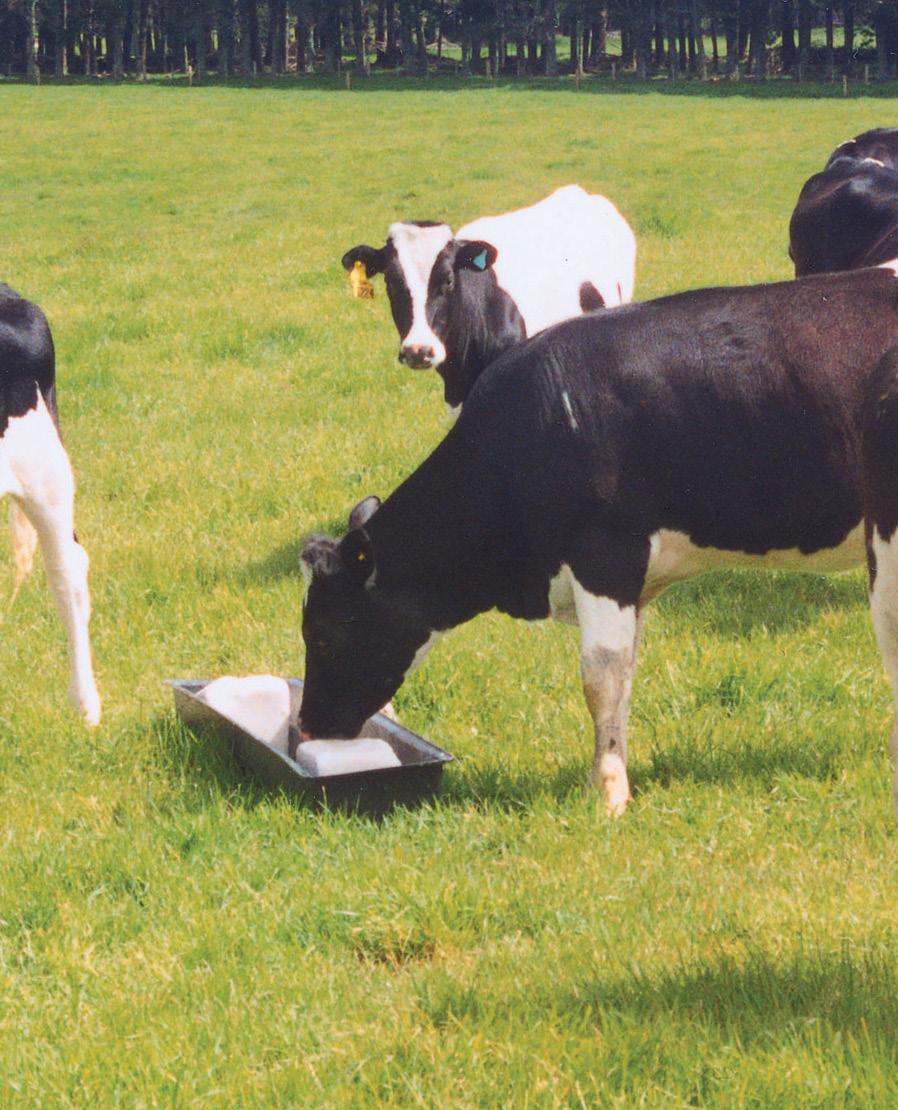
The company started with a single test single readout unit which took a while to get off the ground, but once it did many farmers obtained a unit to help get their SCC down.
At the time there was a big focus by Fonterra and DEXEL to get SCC down and many farmers needed all the help they could get.
With continued R and D and technology improving Technipharm launched a new unit on the market in 2010 which had the ability to show all four readings on the screen simultaneously which was a great help in determining the quarter infected quickly. A few years later added a back-lit screen was added, this allowed fast readings to be obtained under any milking shed conditions.
The new Milkchecker Tracker™ shows all four readings of the quarters obtained in absolute format and in differential
format. To establish if a quarter is infected it is required to establish the differential between quarters in order to know if there is an infection or not.
Milk as we know contains milksolids, each quarter produces its own “formula” and not all quarters are the same. Significant differences are present when there is an infection, quantities of sodium chloride is expelled from the milk glands, alarming the defence systems of the cow to “act” to release white blood cells.
These salt levels we can measure and set off against each quarter which gives us an accurate measure of the infection being present and its severity. Readings are instant and displayed on screen. These conductivity readings are showing up well before we see inflated SCC levels so with Milkchecker Tracker™ you are ahead of the infection.
After treatment the Tracker can help establishing if the readings have come down and if the milk is ready for the vat again, continued inflated readings means
Sodium (Salt) is vital for animals but is not necessary for plant mineral nutrition. Ruminant livestock require sodium (Na) to regulate the composition of all extracellular fluids including blood and for maintenance of a constant pH in the rumen. Livestock requirements vary but as a general rule 0.10% Na in pasture drymatter (DM) is needed for animal production.
Plant species differ in their ability to transport Na to their leaves. Plants with a greater % Na in their root DM than in their shoots are natrophobes, those with more Na in their shoots (a shoot: root ratio of more than 1.0) are natrophiles.
Examples of natrophobic species are Lucerne, Maize, Red Clover, Caucasian Clover, Kikuyu. The Na% in herbage drymatter for
something more sinister is going on upon which we recommend get veterinarian assistance.
The Milkchecker Tracker™ also can “log” readings via BlueTooth on an app for historical comparisons on a per cow basis. This could be a helpful feature for problematic cows with a history of infections.
Milkchecker Tracker™ is available from TechniPharm in limited numbers. More? Visit www.technipharm.co.nz

natrophobes is usually under 0.1% Na. Ryegrass and white clover are examples of natrophilic species; they normally have more than 0.1% Na in their herbage but are often deficient for livestock.
Salt is available with or without minerals, loose or pressed into lick blocks, or as rock salt imported from the northern hemisphere. Salt is an effective carrier of less palatable minerals. Summit Rock Blocks weather at a slower rate than rock salt. Getting a known amount of salt into each animal on a daily basis (eg. drenching) is best but often impractical. Offering free-choice salt year-round will enable animals to supplement their needs as required. Be cautious about relying on free-choice mineralised products to correct clinical mineral deficiencies.
As NZ Dairy Exporter counts down to its centenary in 2025, we look back at the issues of earlier decades. 50 Years Ago – June 1972.

Recent research has revealed that the oestrus cycle can be controlled by a method similar to the new birth control measures used in humans, using the same natural processes that occur in the female during the normal reproduction cycle.
About 20 years ago a synthetic compound was developed called progestagens that could be administered orally. Studies in cattle have shown that progestagens administered for 14 to 20 days will effectively inhibit oestrus and ovulation, and upon withdrawal the animals show oestrus and ovulate at the same time.
A more satisfactory method of administration must be developed as oral administration does not appear to be the preferred route in all parts of the world, especially for beef cattle. An implant that could be inserted non-surgically and be completely absorbed in a prescribed period would be more suitable for a range of cattle.
Four-wheeled drive tractors will grow in popularity in New Zealand as they have in Britain during the past two to three years, says Todd Motors Ltd.
This comment comes in a release on the David Brown 1200 four-wheeled-drive tractor now available in New Zealand.
The company also says that two other models, the 1212 hydra-shift and the 995, are part of an extended range of David Brown tractors. Both have new gearboxes.
The 1212 transmissions allows clutchless gear changes with four selected speed
ranges while on the move. The gearbox shares a common oil sump with the hydraulic system and one oil is used throughout.
A new tractor and a trip to Australia are part of the winner’s prize in the annual Skellerup Young Farmer of the Year contest which begins this month.
The contest is organised between the Federation of Young Farmers’ Clubs, Skellerup Industries and the NZBC.
First prize is worth more than $4000. It includes a John Deere 1020 tractor supplied by Gough, Gough and Hamer, $500, a return trip for two to Australia on Air New Zealand and five days’ accommodation in Sydney.
Abolish current “inequities” and pay all the dairyfarmers virtually the true value of their milk.
This is the thinking behind a three-tier formula advocated by the director of the Dairy Research Institute in an address suggesting that present dairying returns justify a system of payment more fair and equitable than paying on a “fat-only” basis.
Dr W. A. McGillivray, Palmerston North, said that when net revenue from the sale of all dairy produce was distributed on the basis of milkfat supplied, inevitably there was some inequity between the amount received by suppliers with high tests and that received by those with low tests.
And protein today was fast becoming as
valuable as fat. ABC are the symbols for a formula which will permit dairyfarmers to paid almost exactly the true value of their milk. Dr McGillivray says the formula is “fairly simple”
Payout A x lb fat + B x lb protein - C x lb milk. C would take into account in terms of weight processed, those costs associated with the volume of milk handled.
How do young men, able and ambitious but without capital, enter farming?
This is one of the more pressing and difficult-to-solve problems in Britain where agriculture is being concentrated into larger and heavily capitalised units.
This concentration means that the old farming ladder - on which a young man could begin with almost nothing and compensate for his lack of cash by hard work, thrift and enterprise - has virtually disappeared.
Increasing numbers are settling for, what is to them, second best, by going into agriculture’s ancillary industries or resigning themselves to posts which do not give full scope for their flair for management or their desire to be independent.
• Thanks to the Hocken Library, Dunedin.
The only ACVM registered intra-ruminal calcium bolus for the prevention and treatment of subclinical hypocalcaemia and as an aid in the prevention and treatment of clinical hypocalcaemia (Milk Fever) in cows.
Backed by NZ peer-reviewed trial.1

Treat Subclinical Hypocalcaemia
• Fast Action
• Sustained Release
• Targeted Individual Treatment
Calpro Bolus dissolves completely in the reticulorumen. The coating of the bolus protects against irritation of the epithelial surface of the throat and oesophagus. Furthermore, the bolus has a neutral taste, which makes it easy to administer.
Calcium chloride is rapidly absorbed, and the calcium sulphate is absorbed over a longer period.
